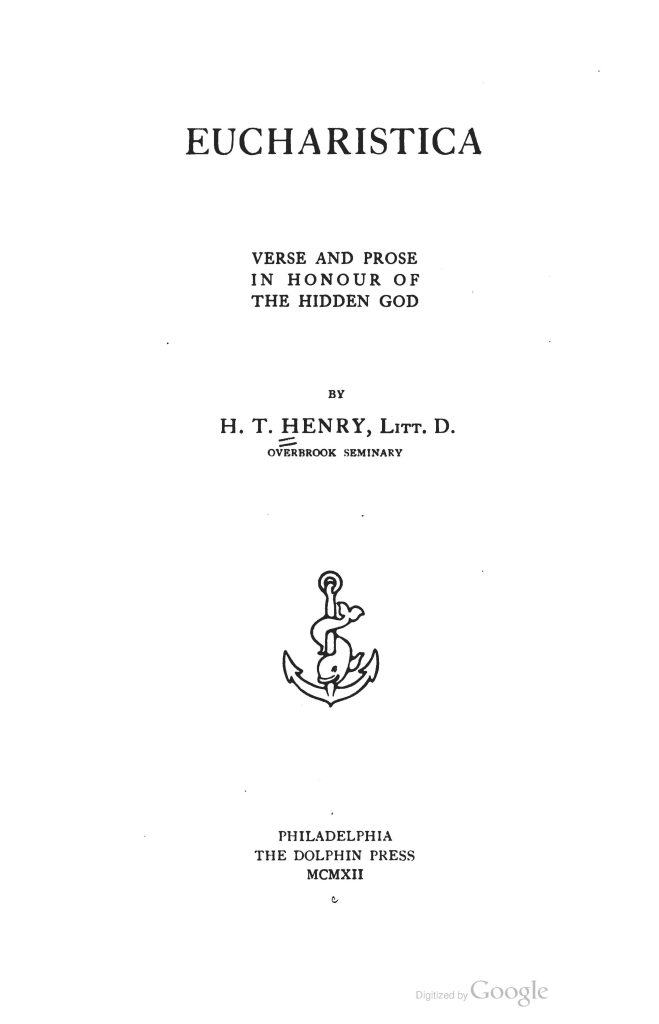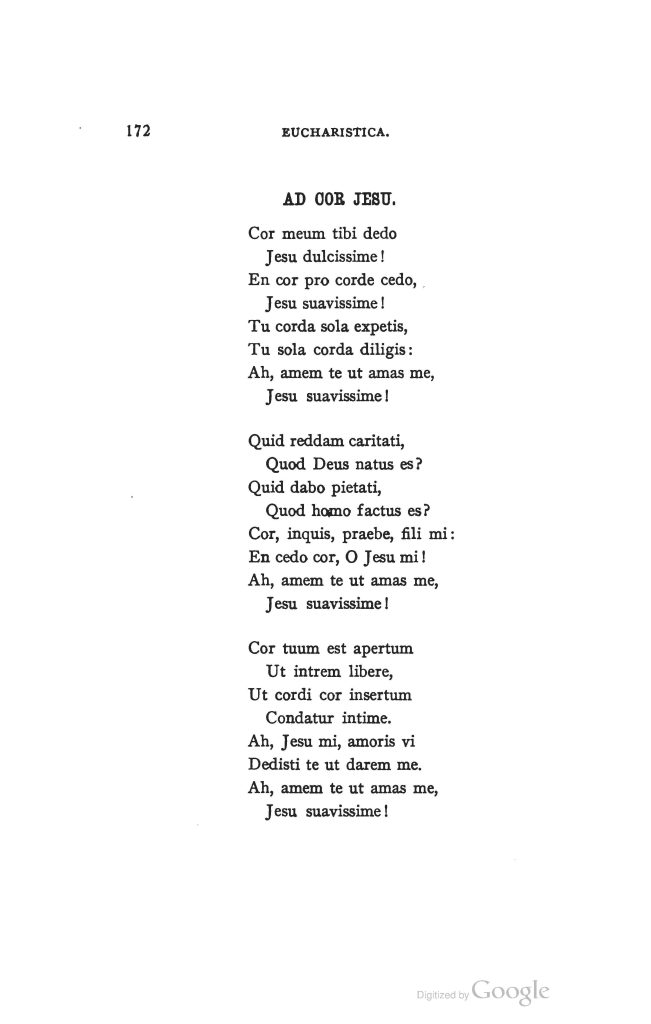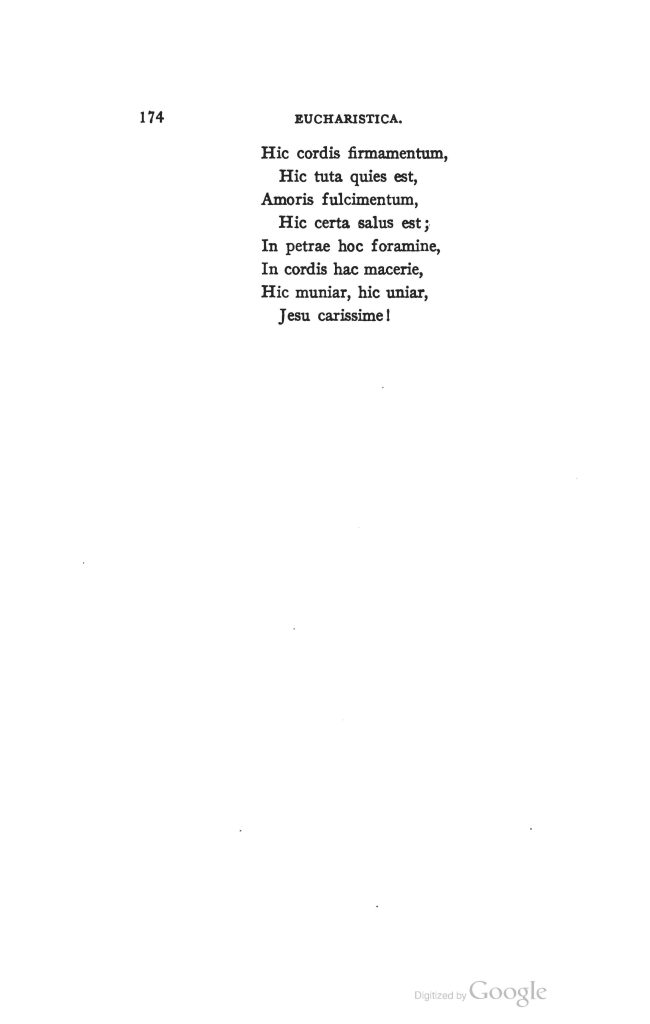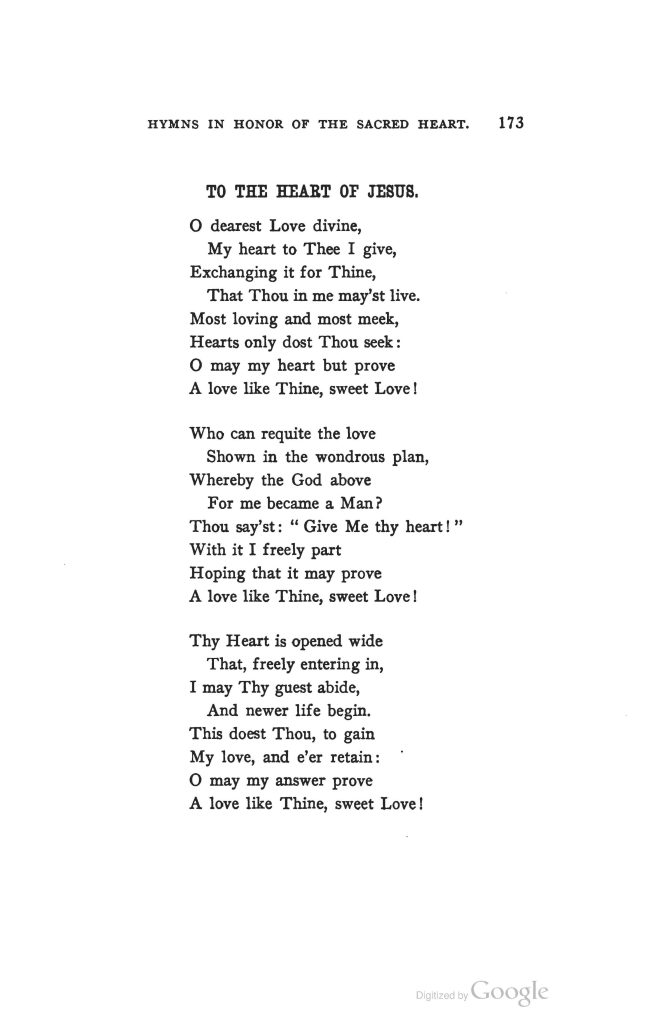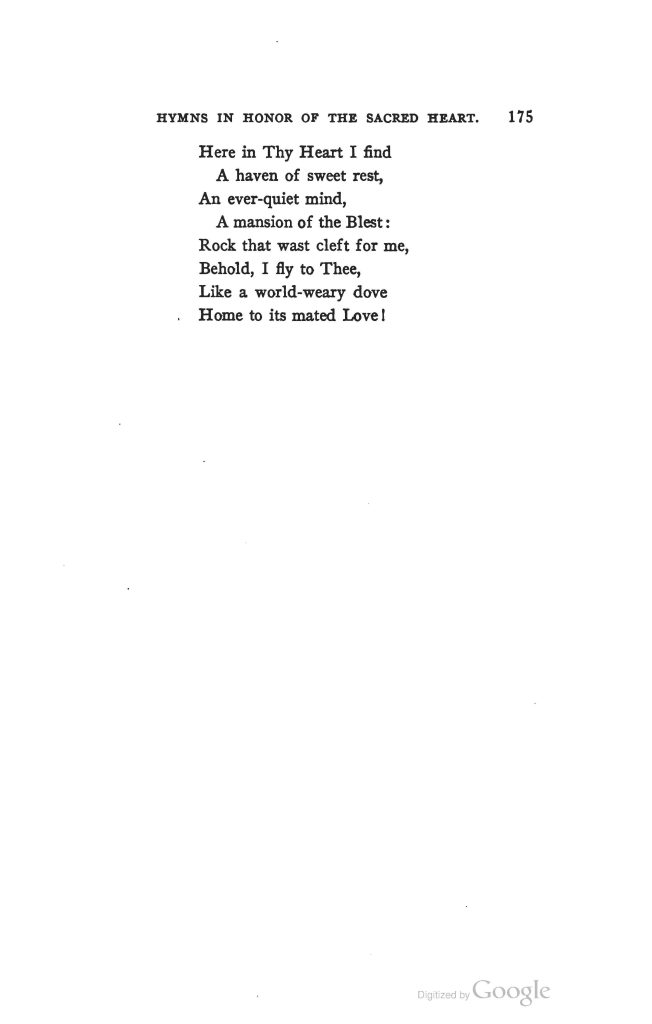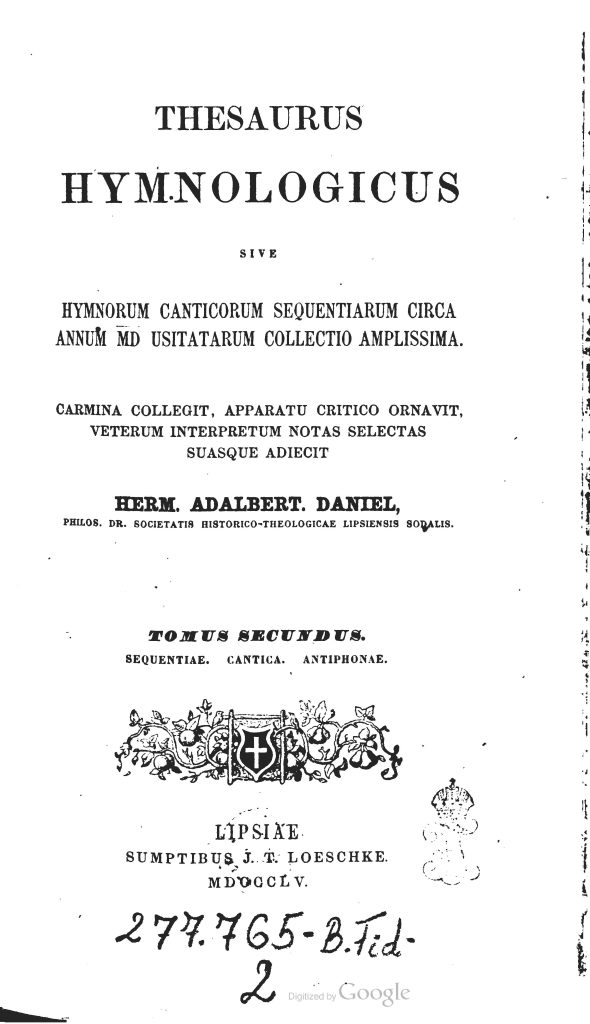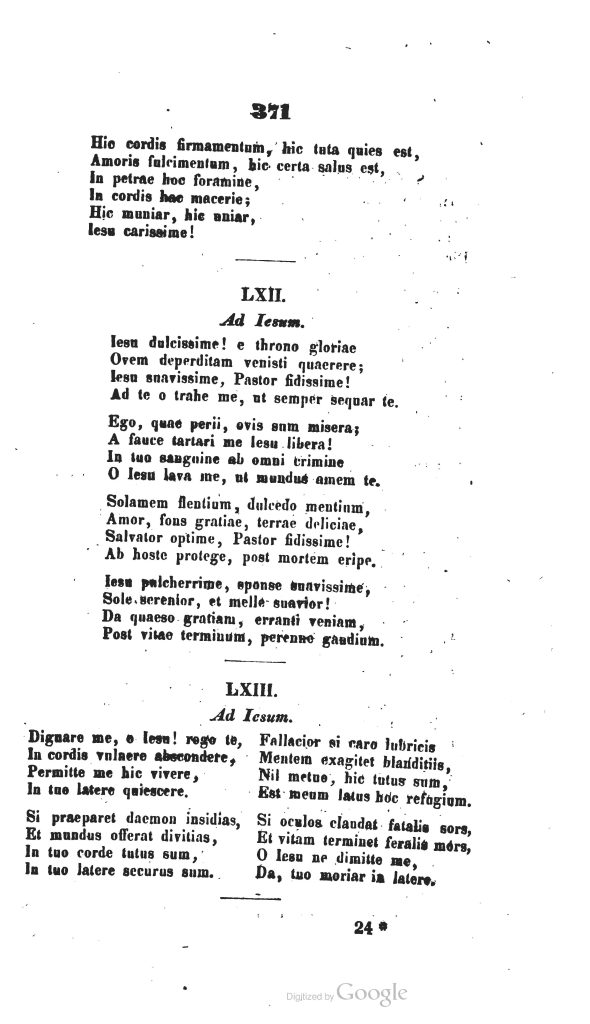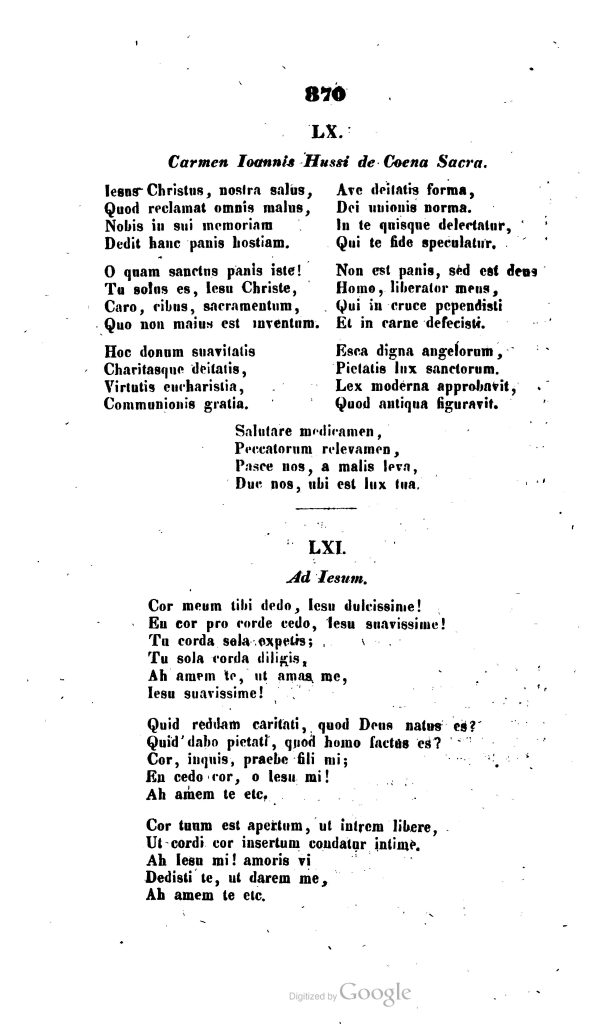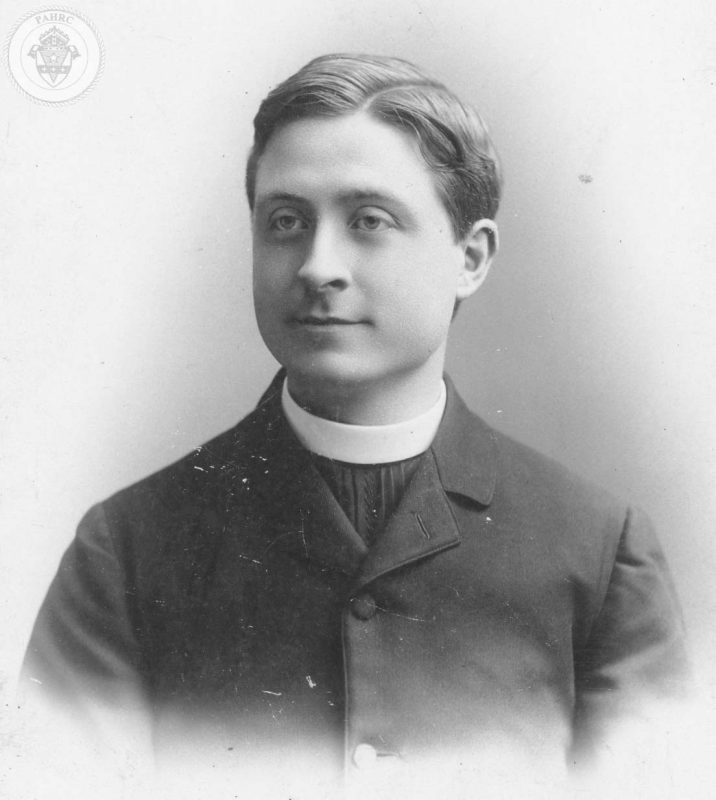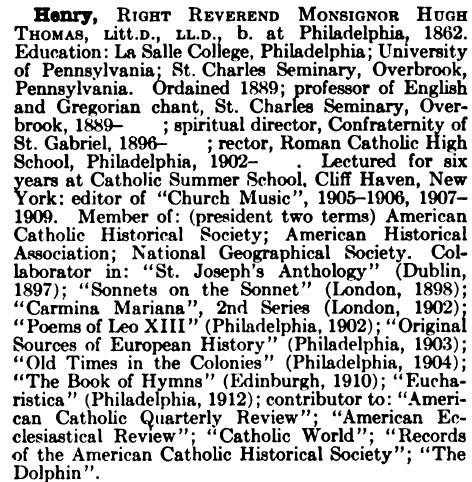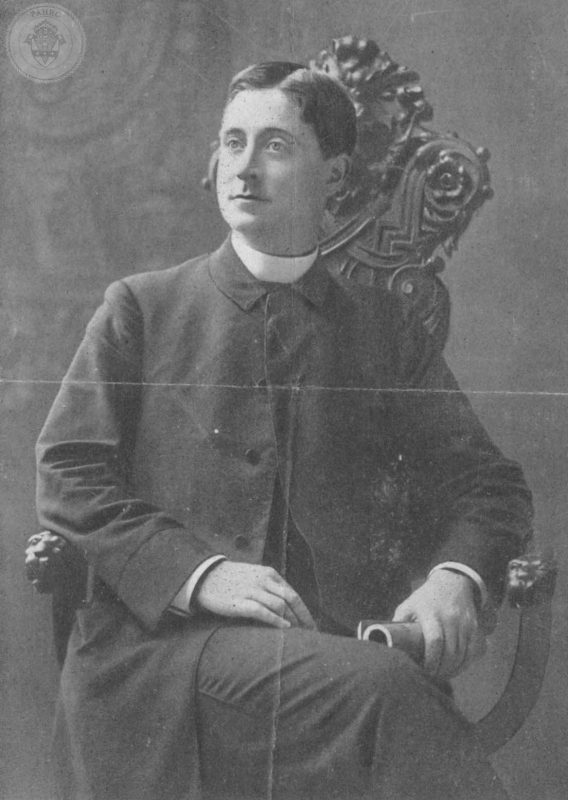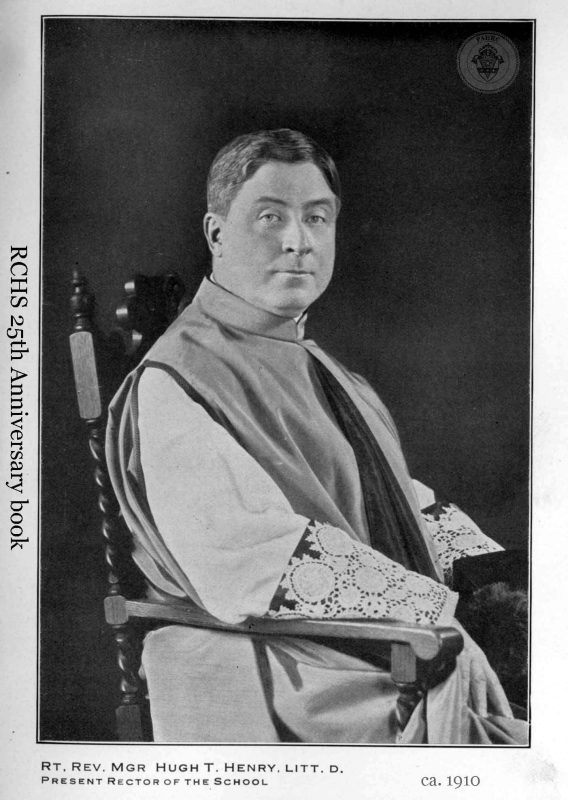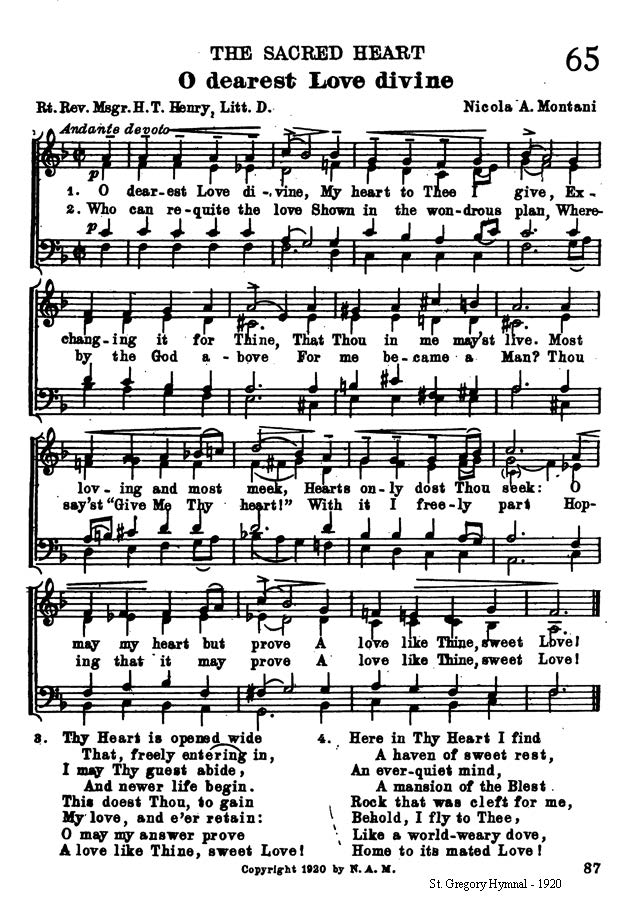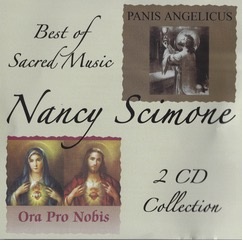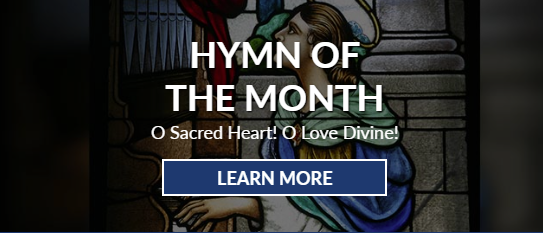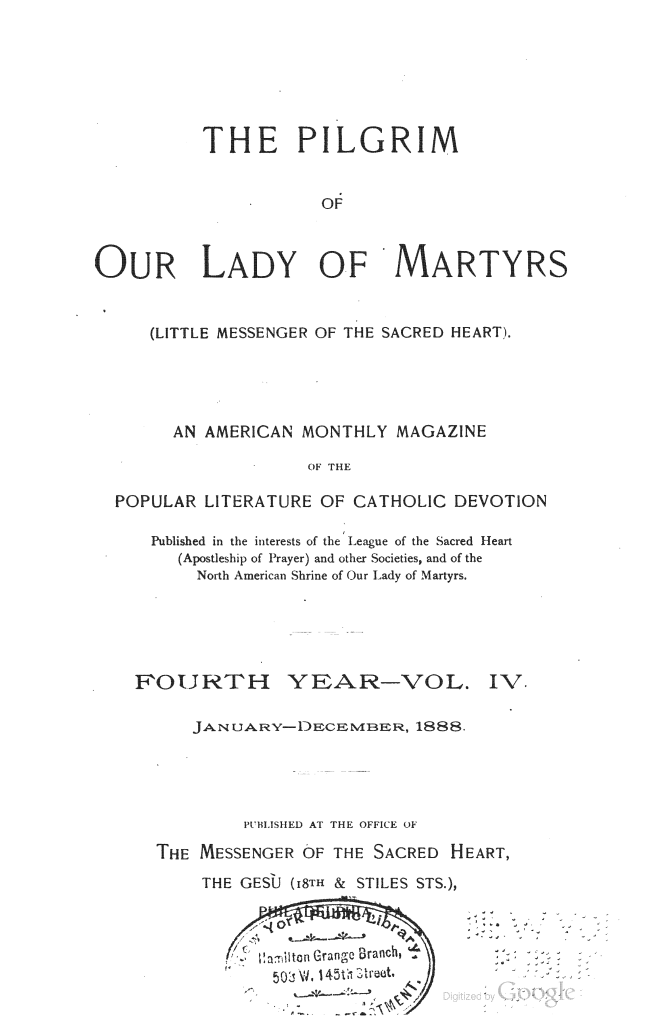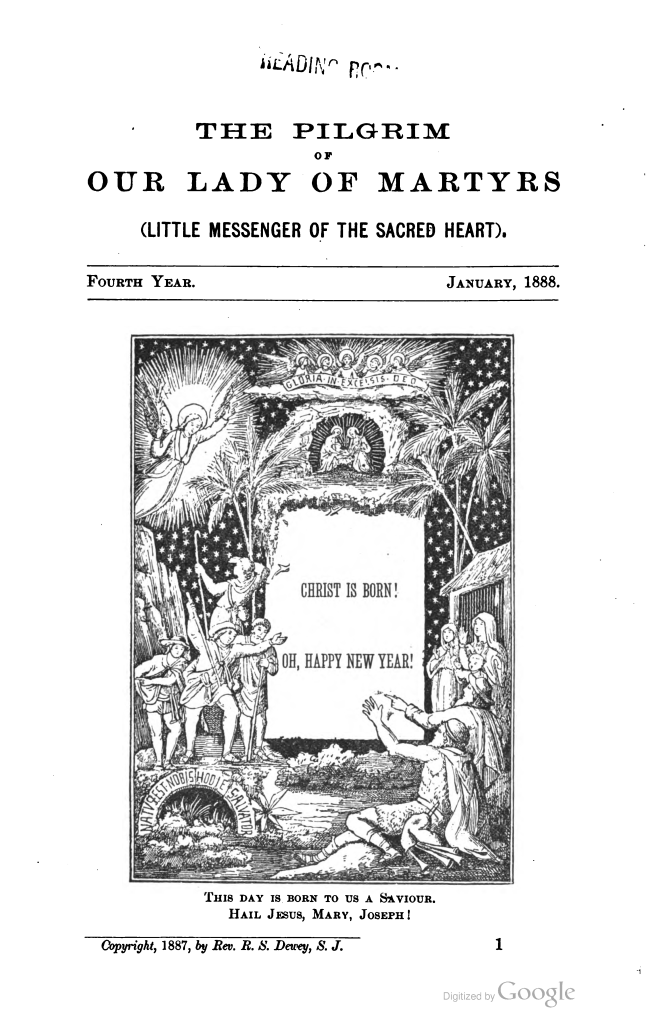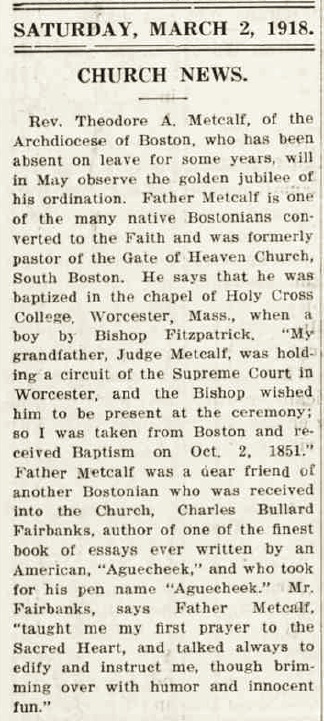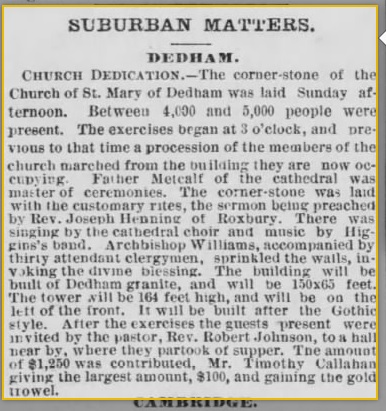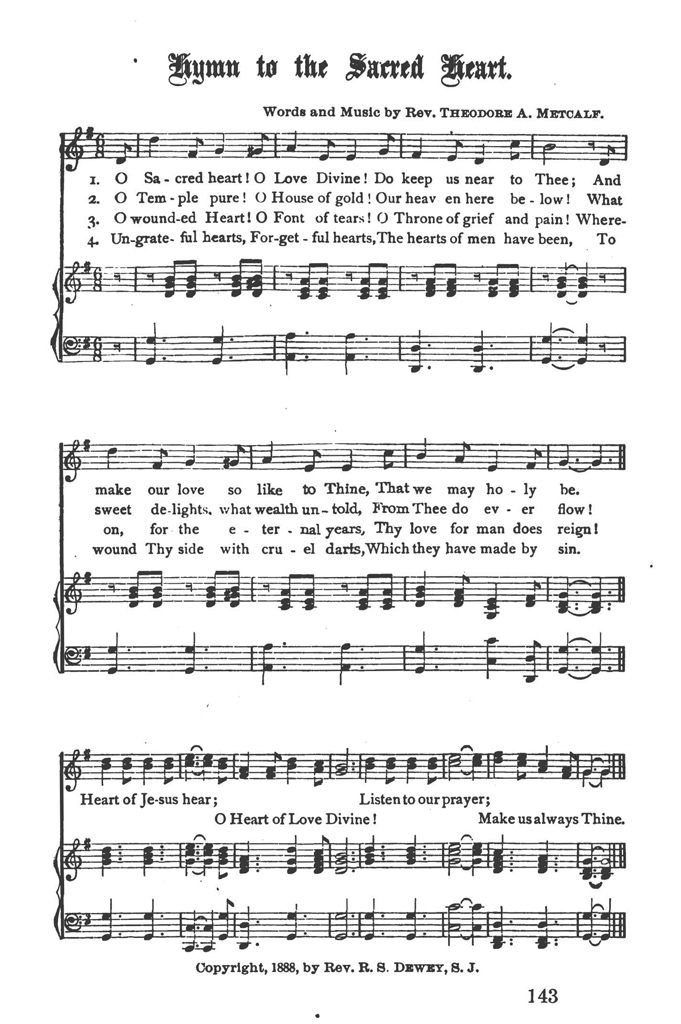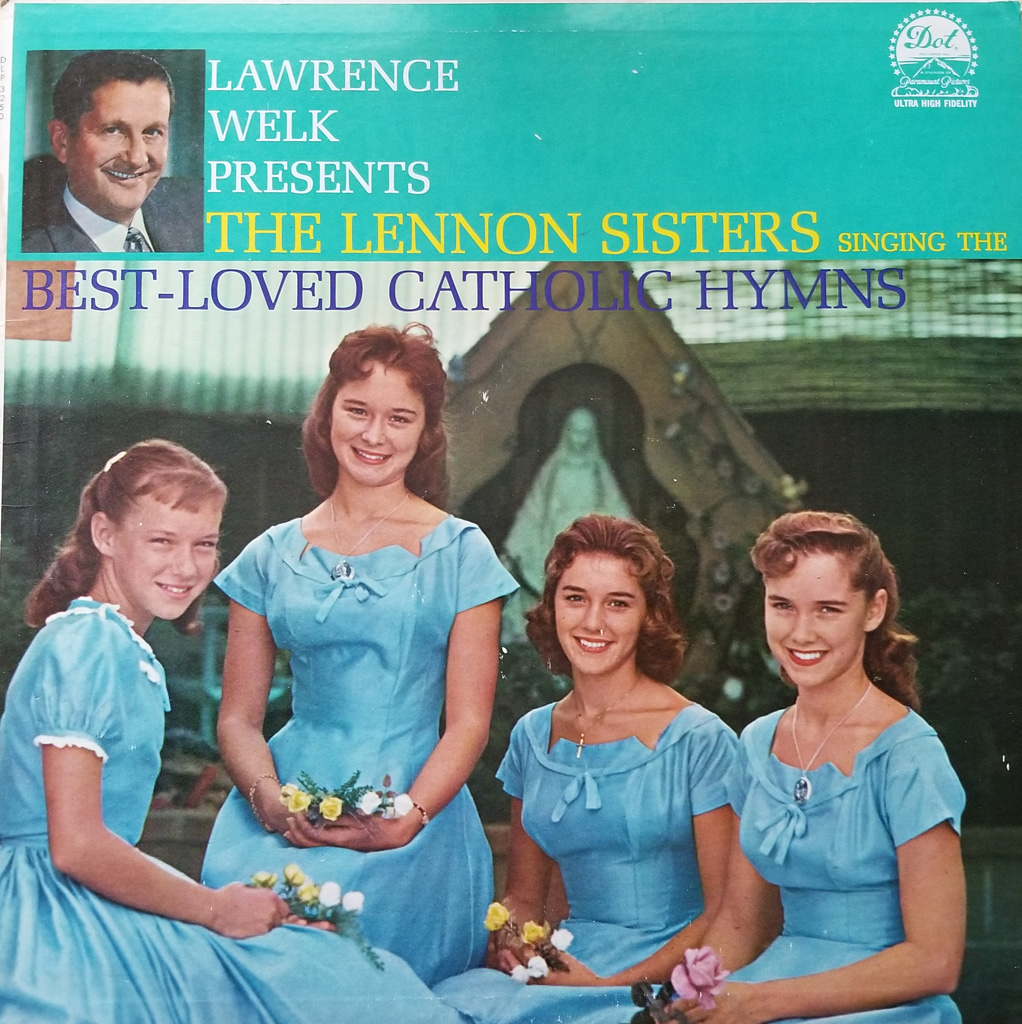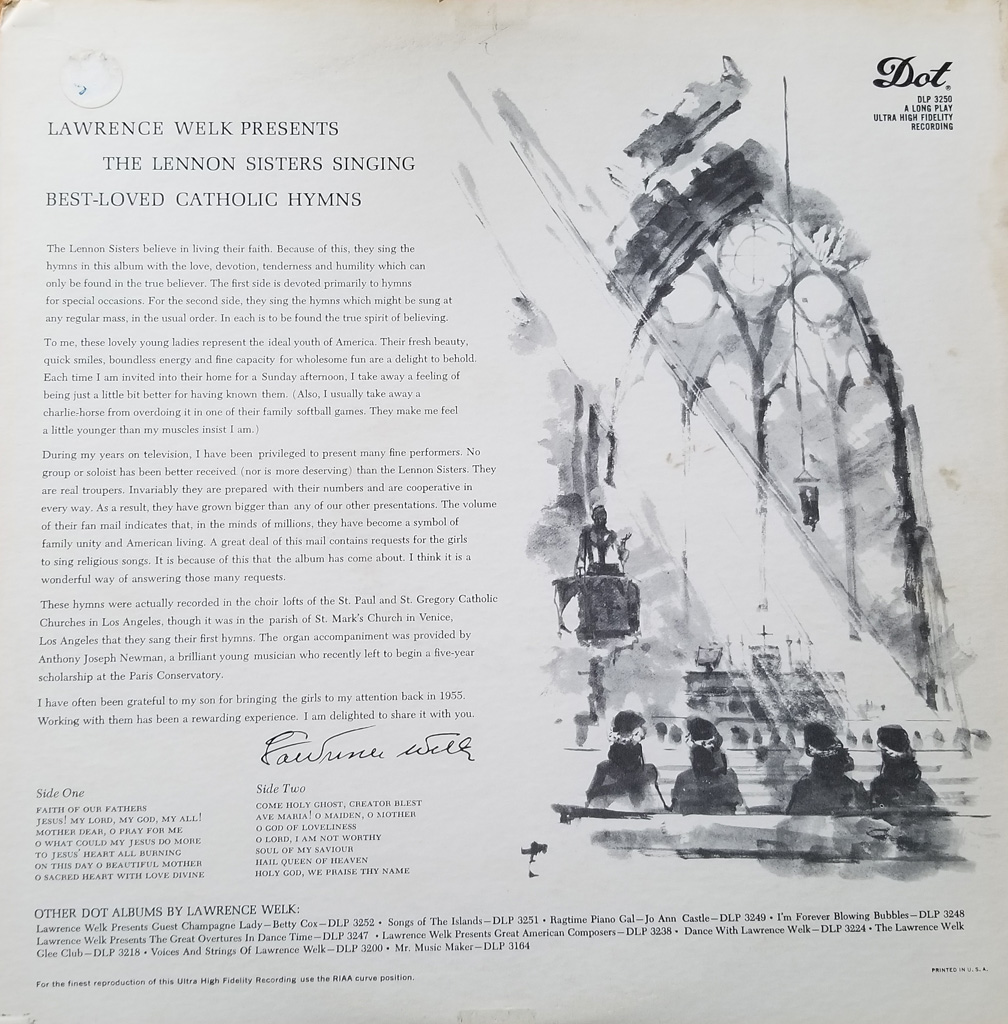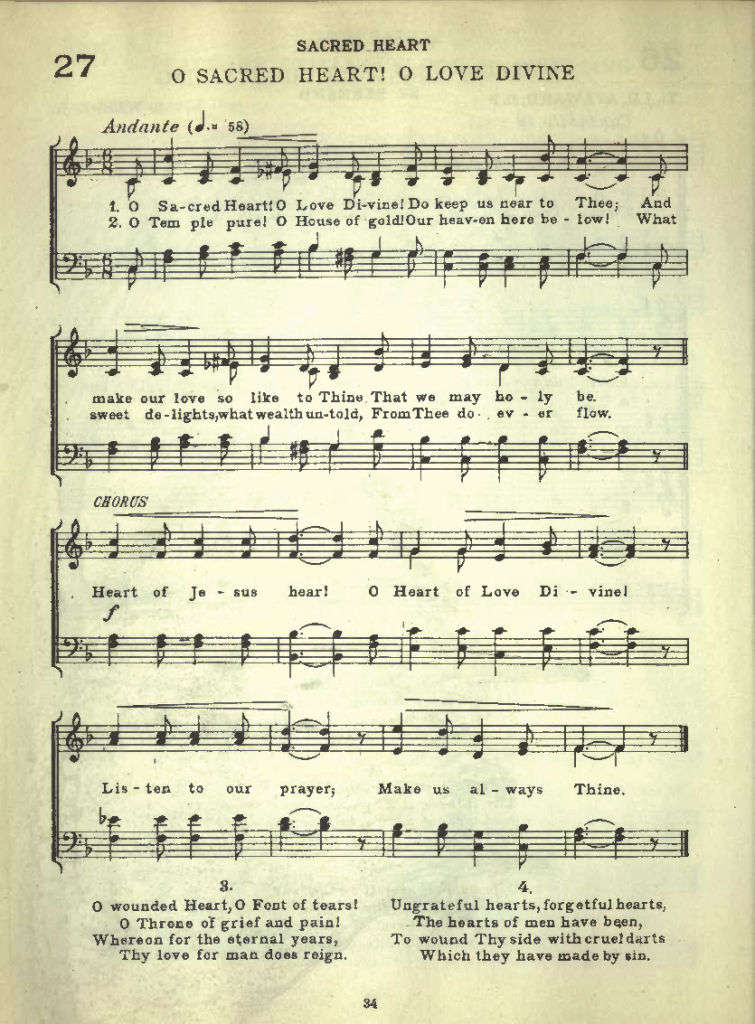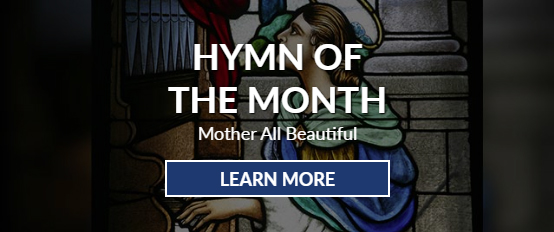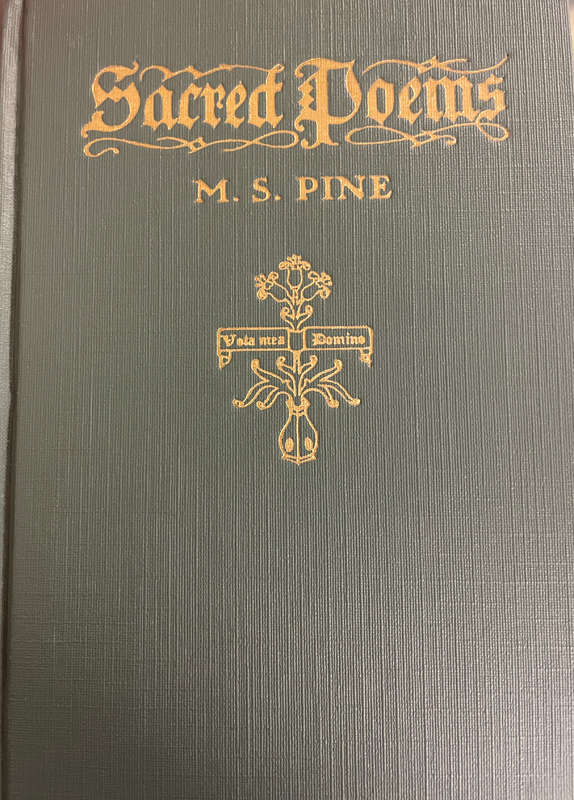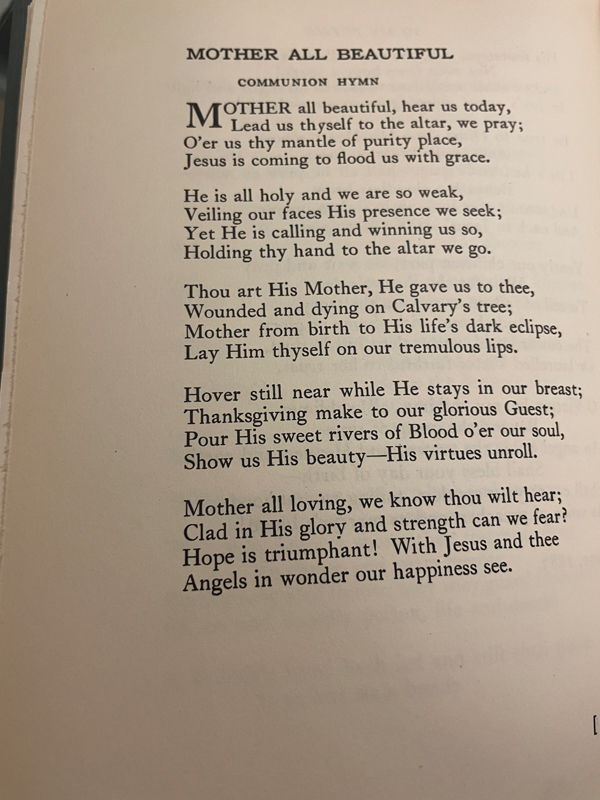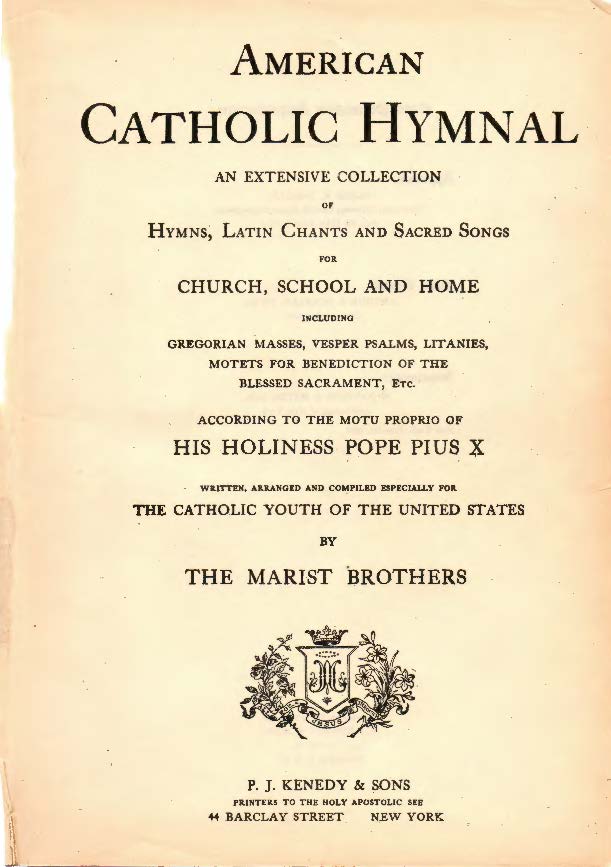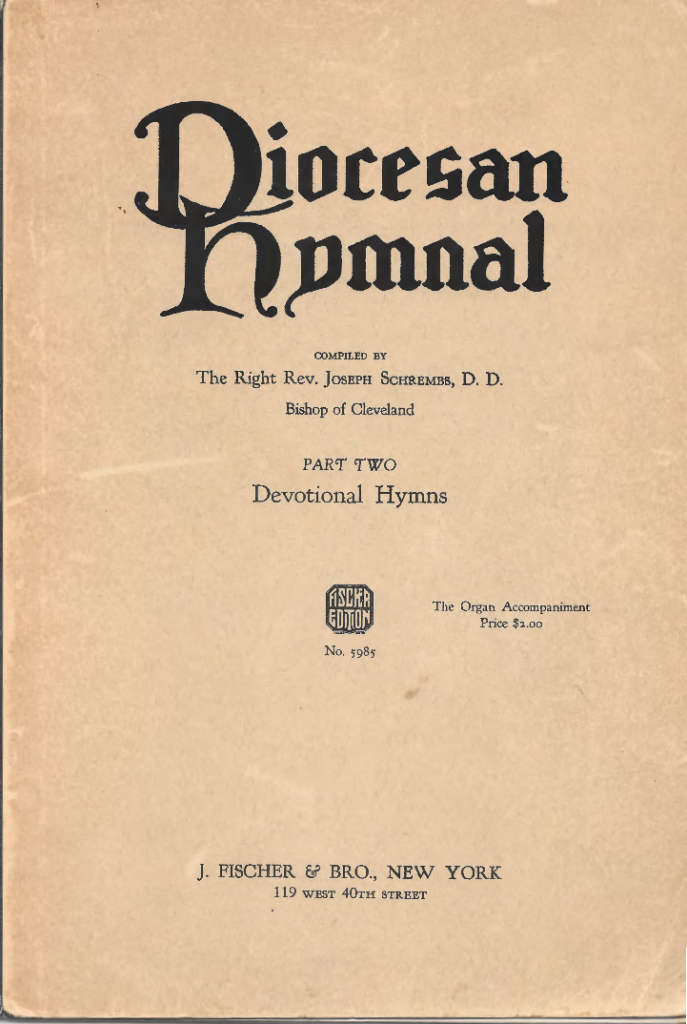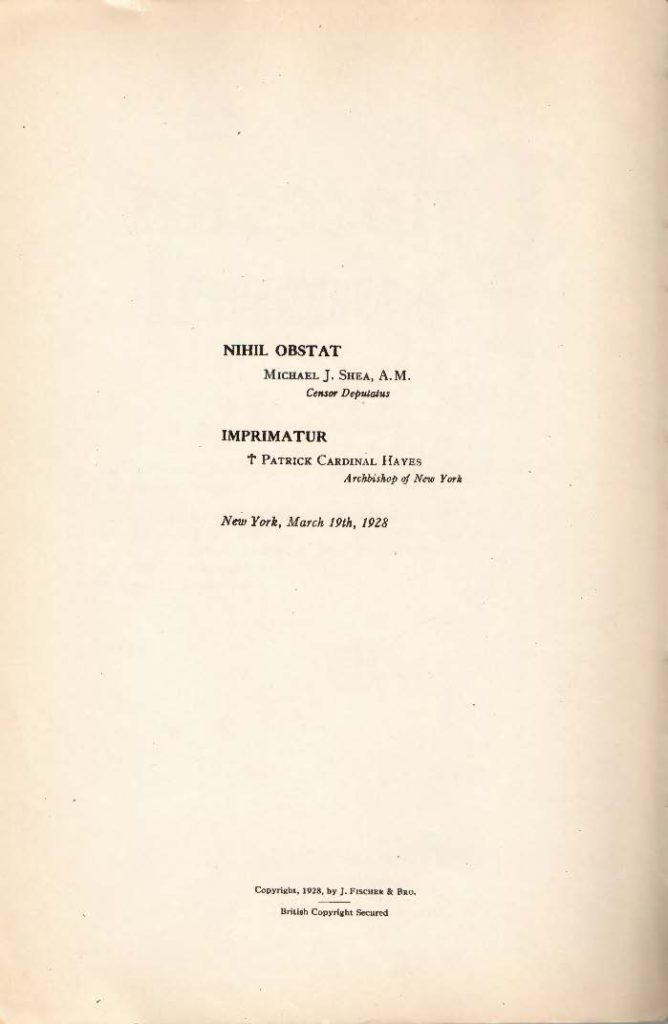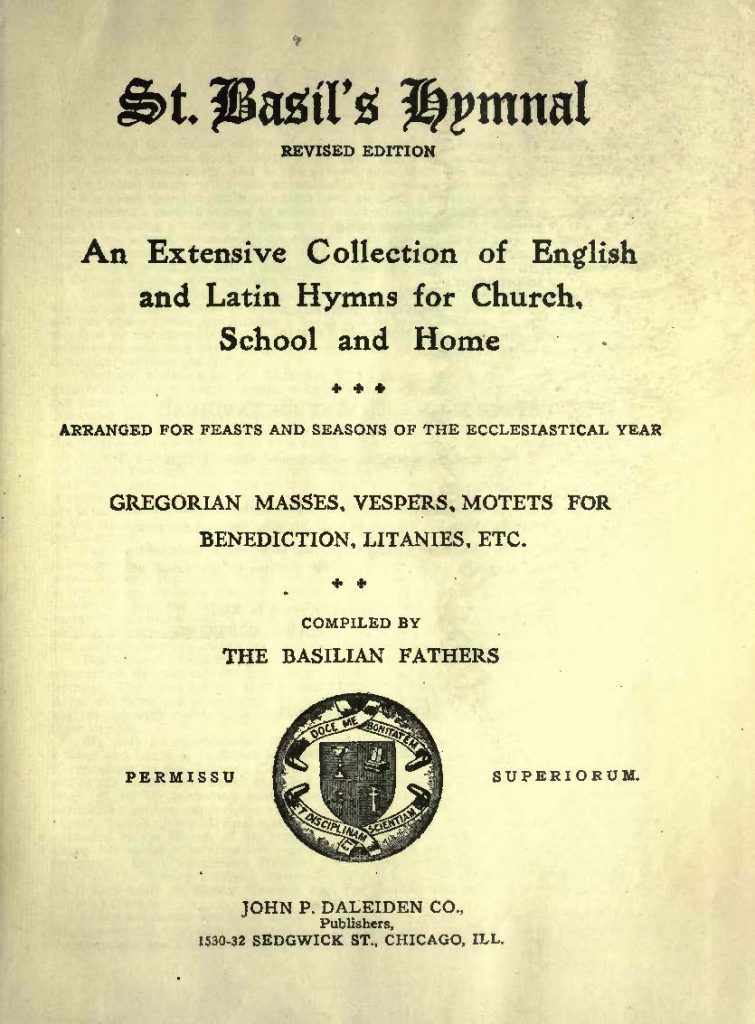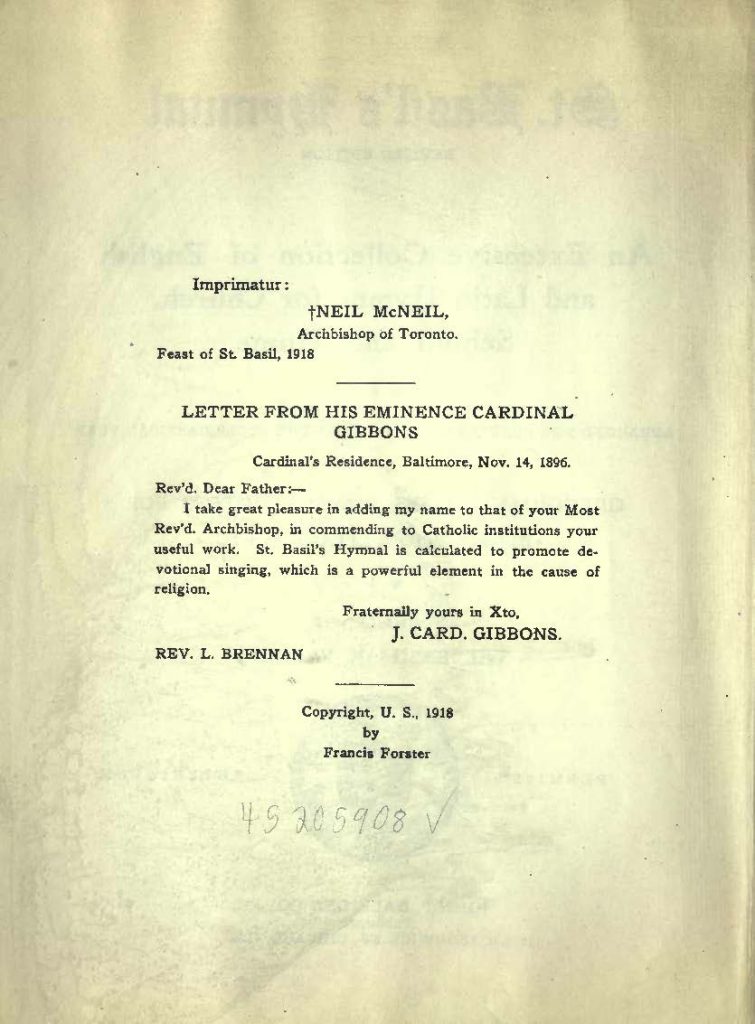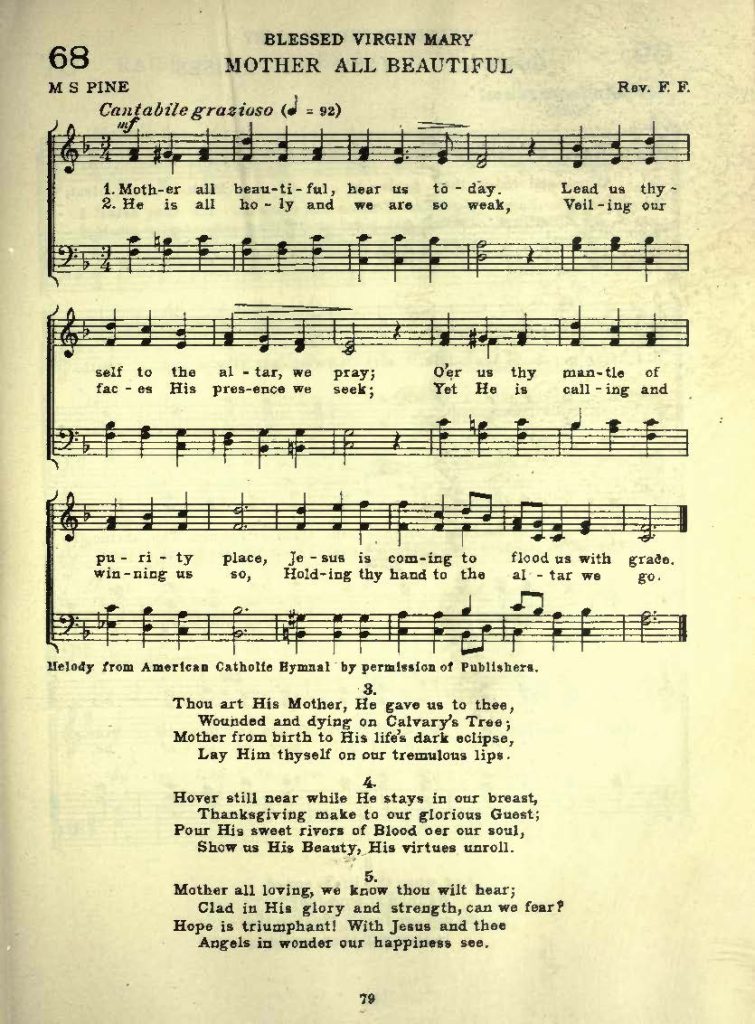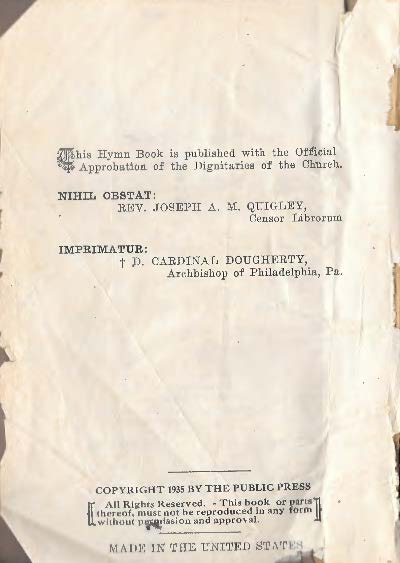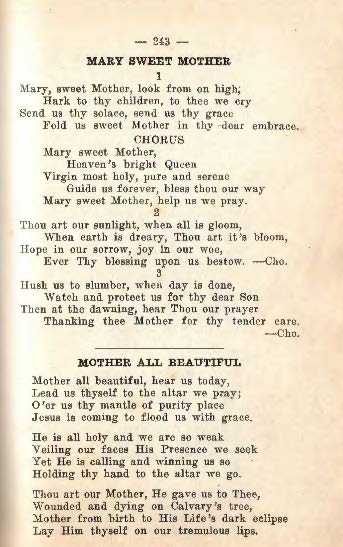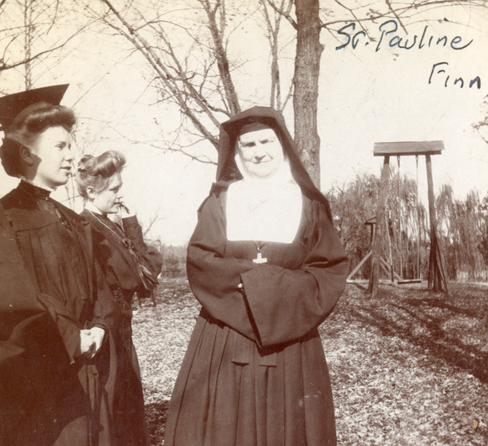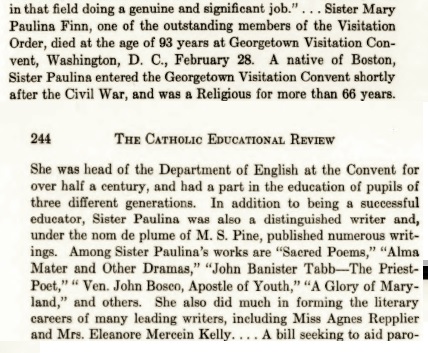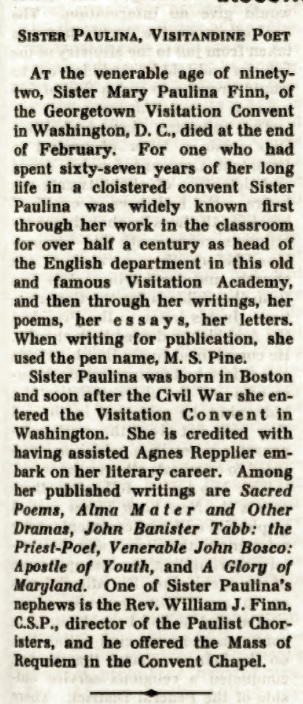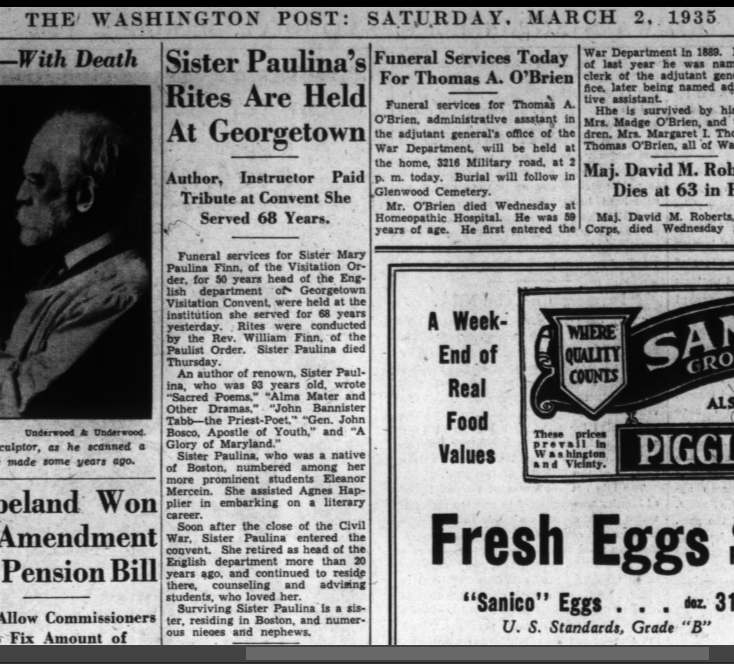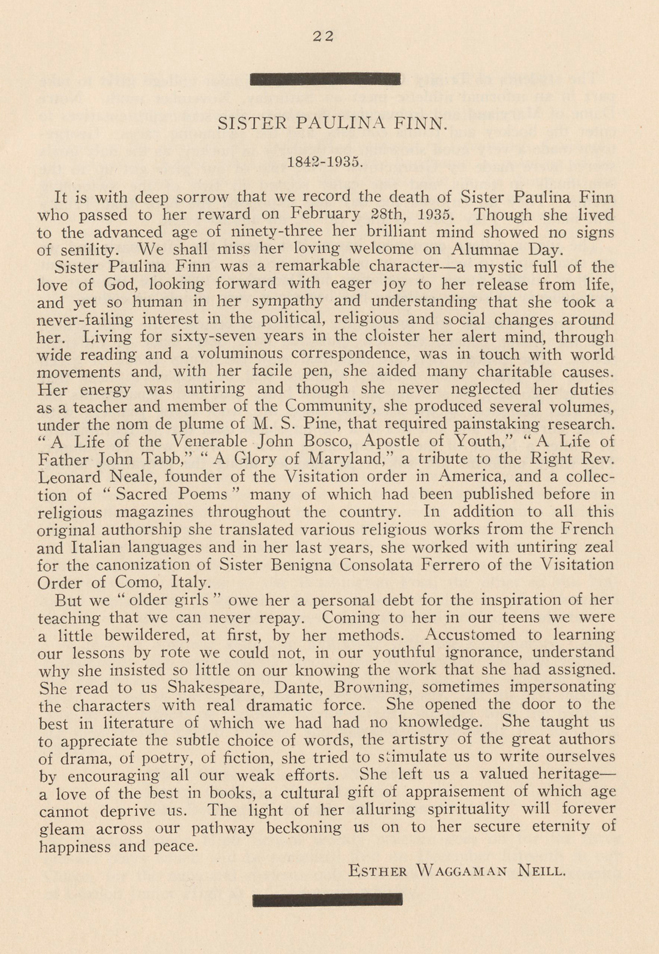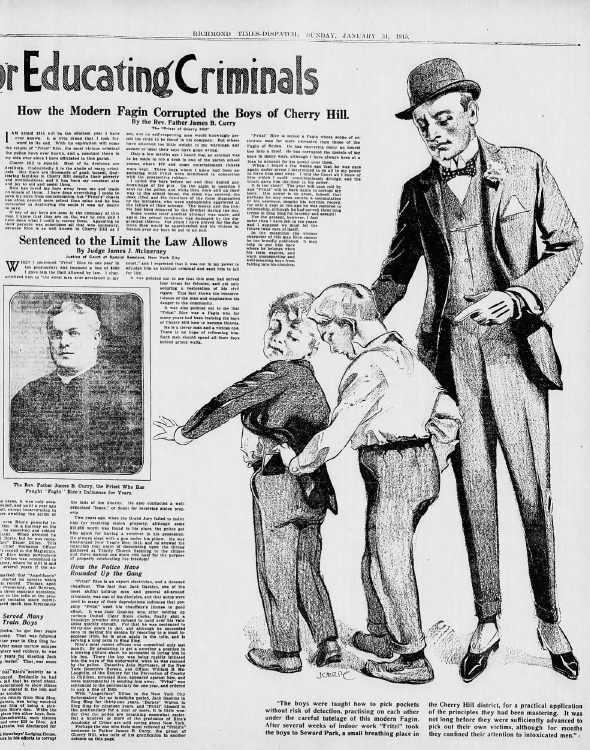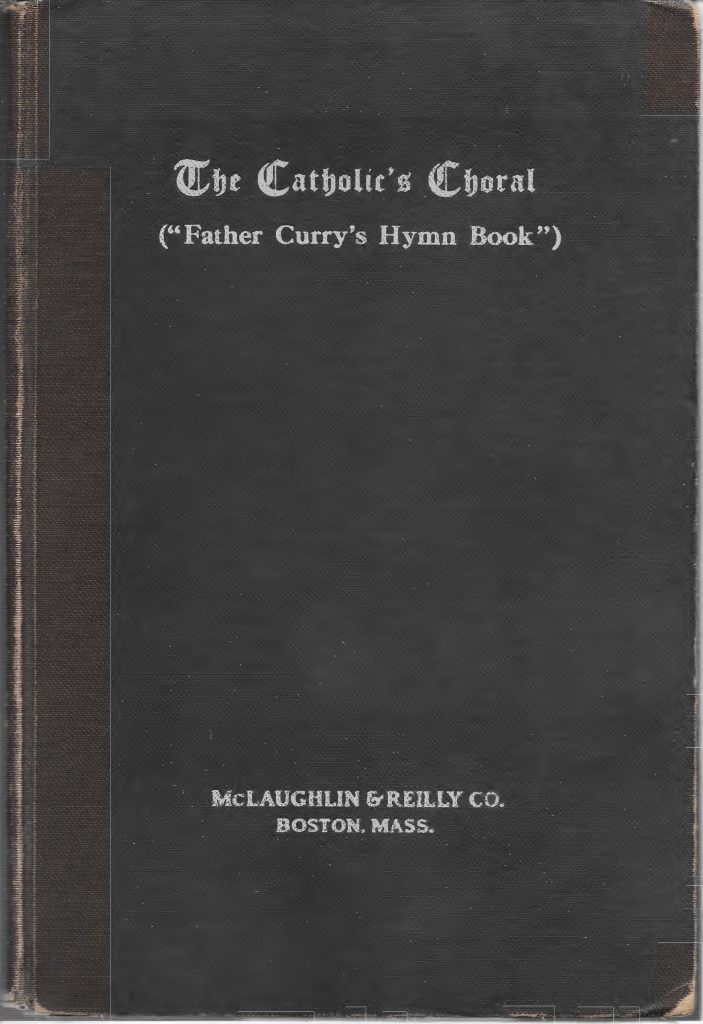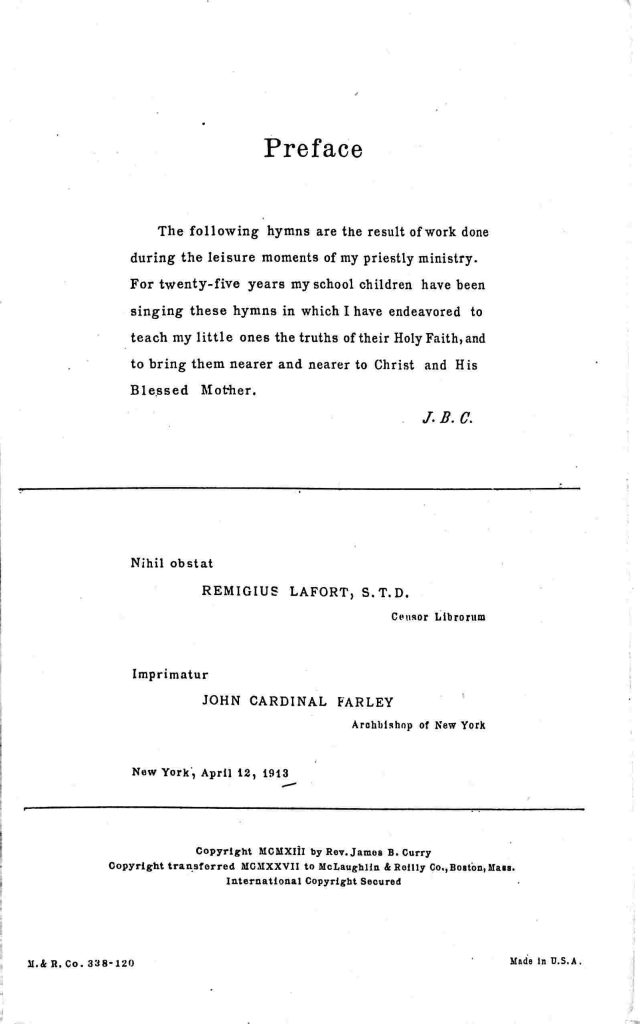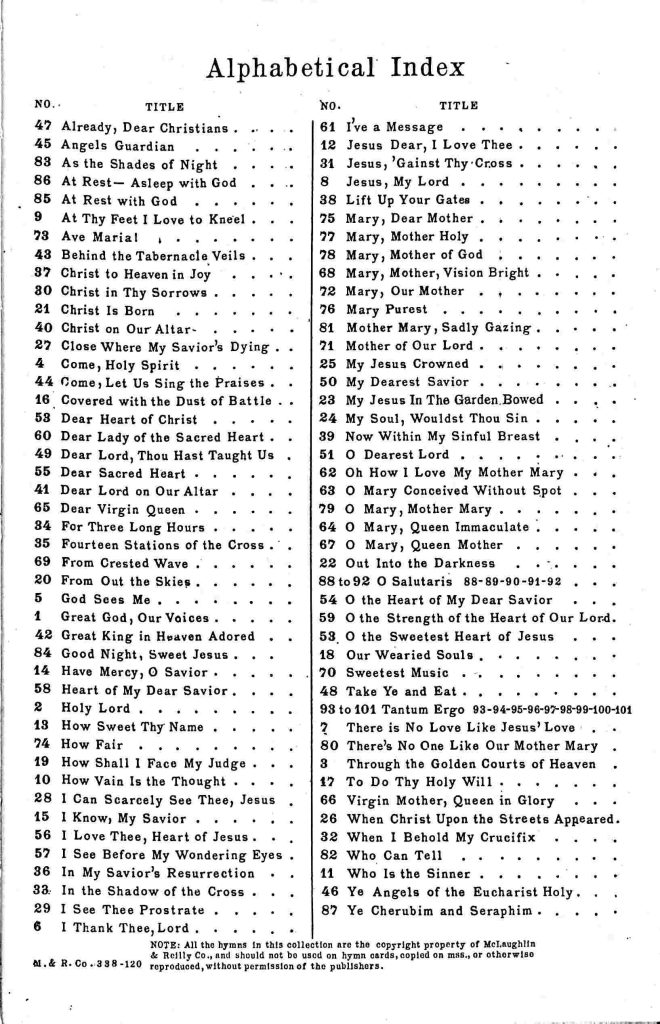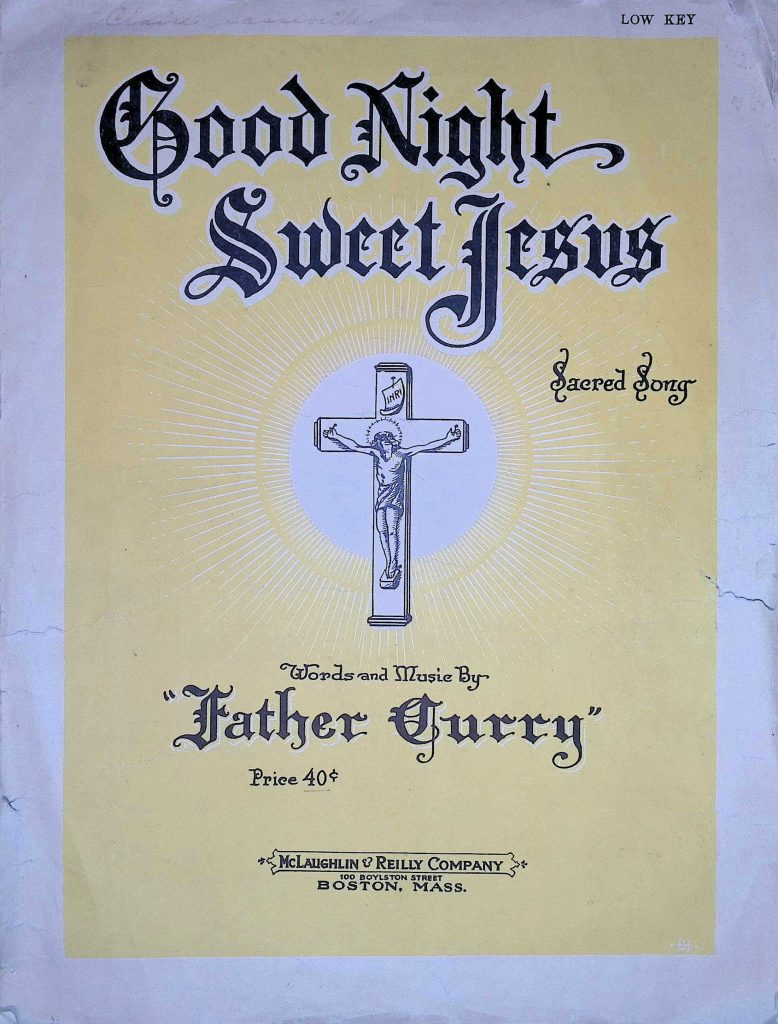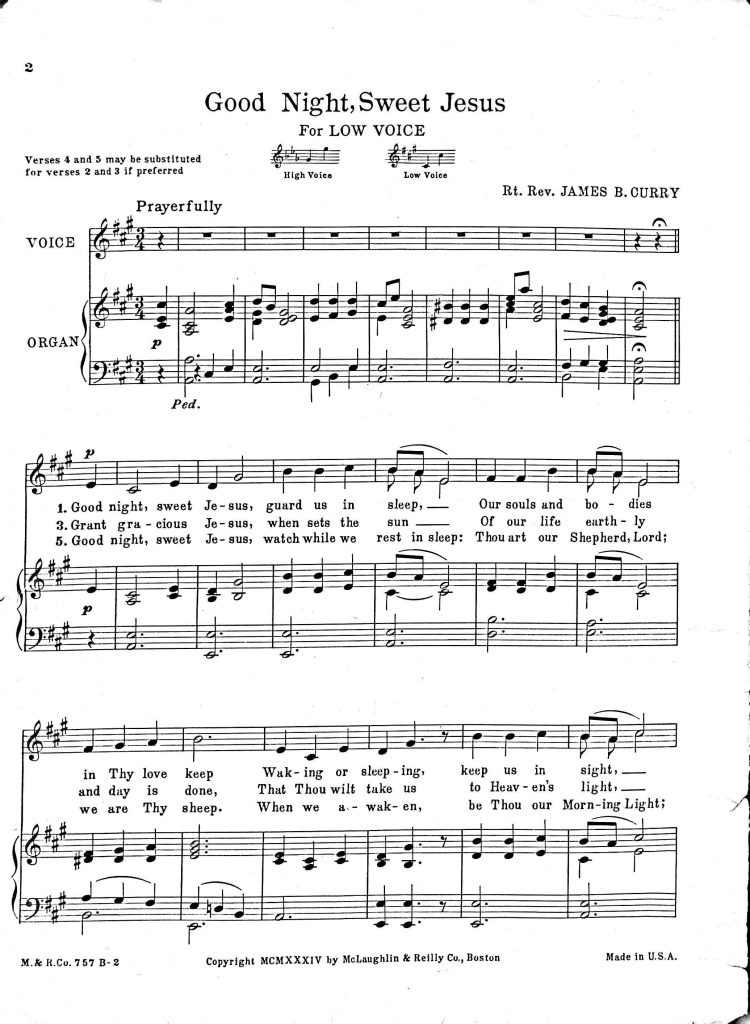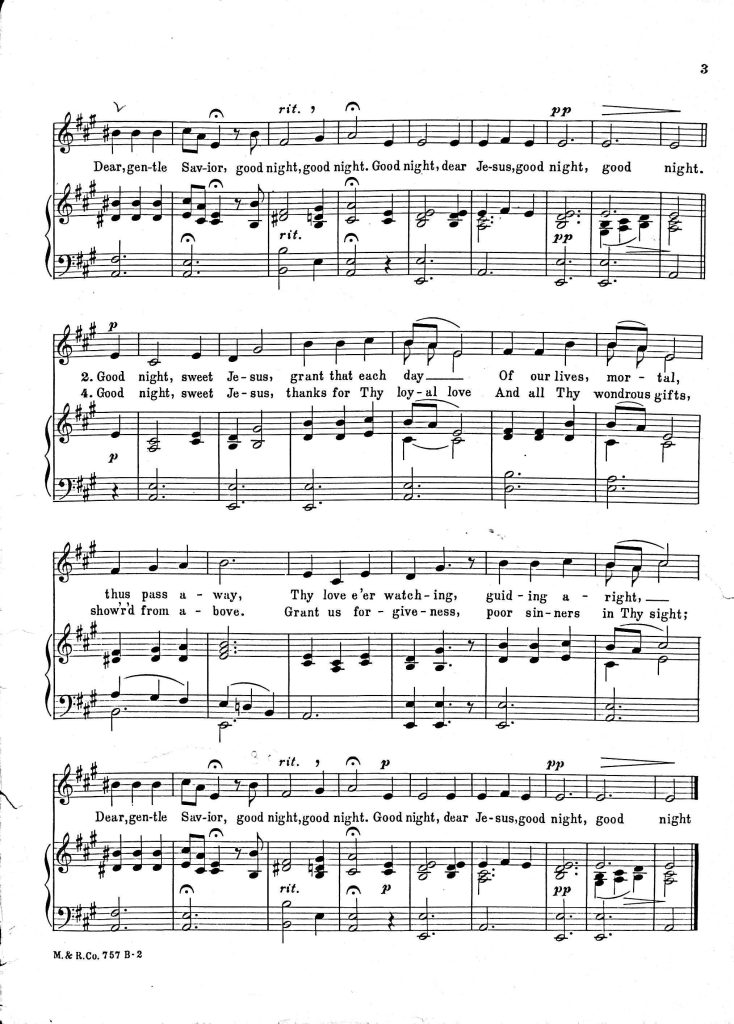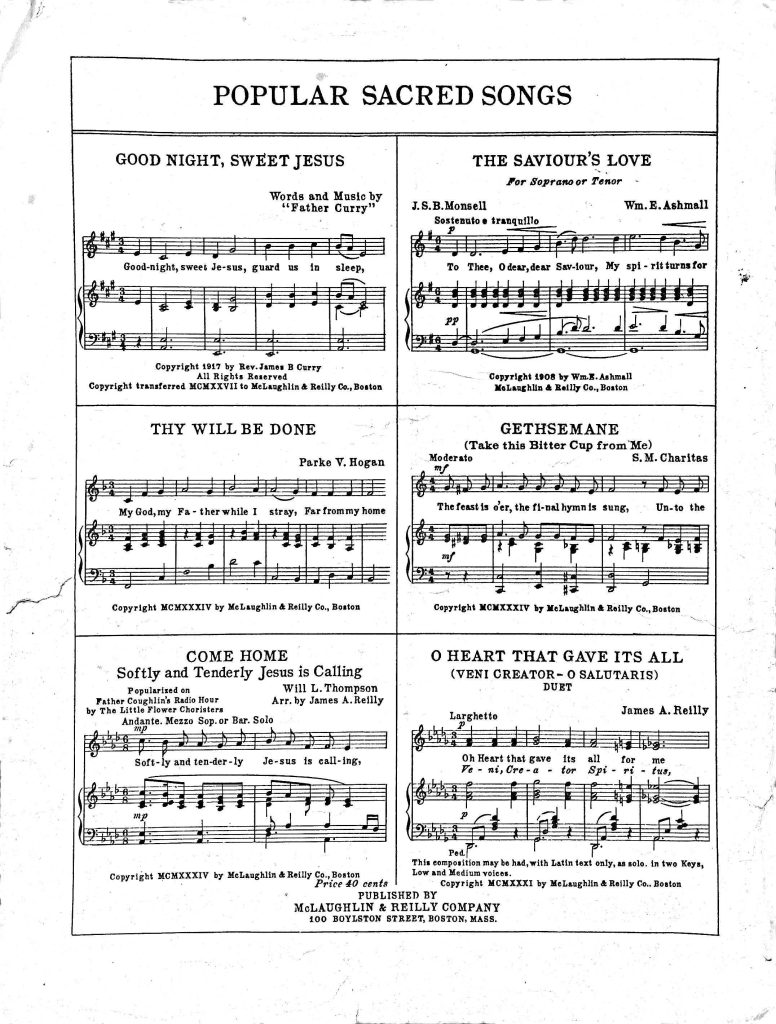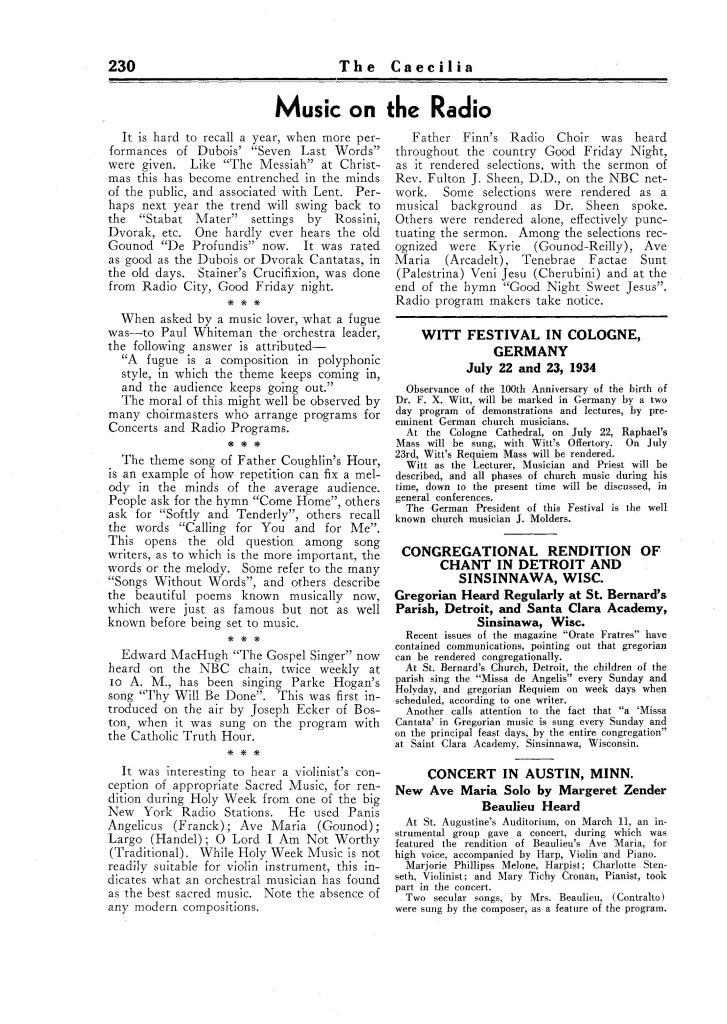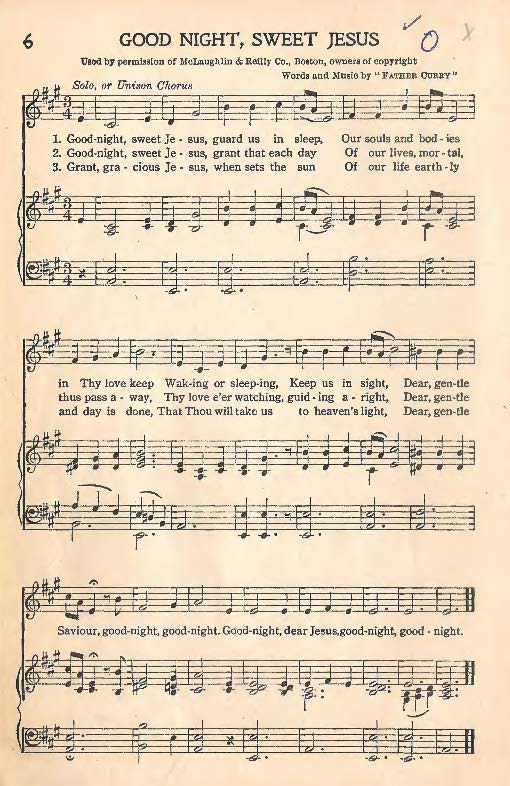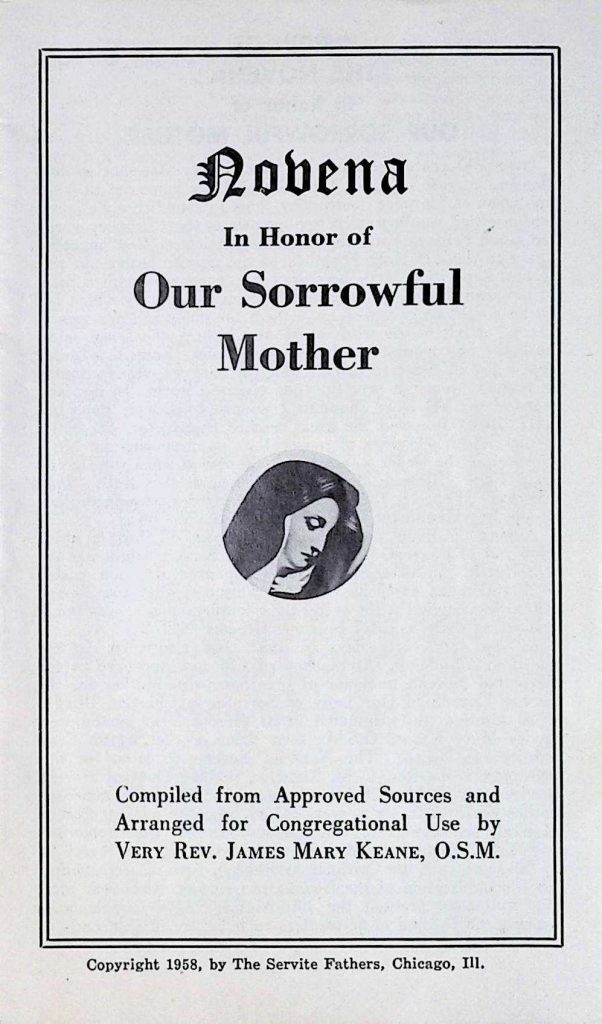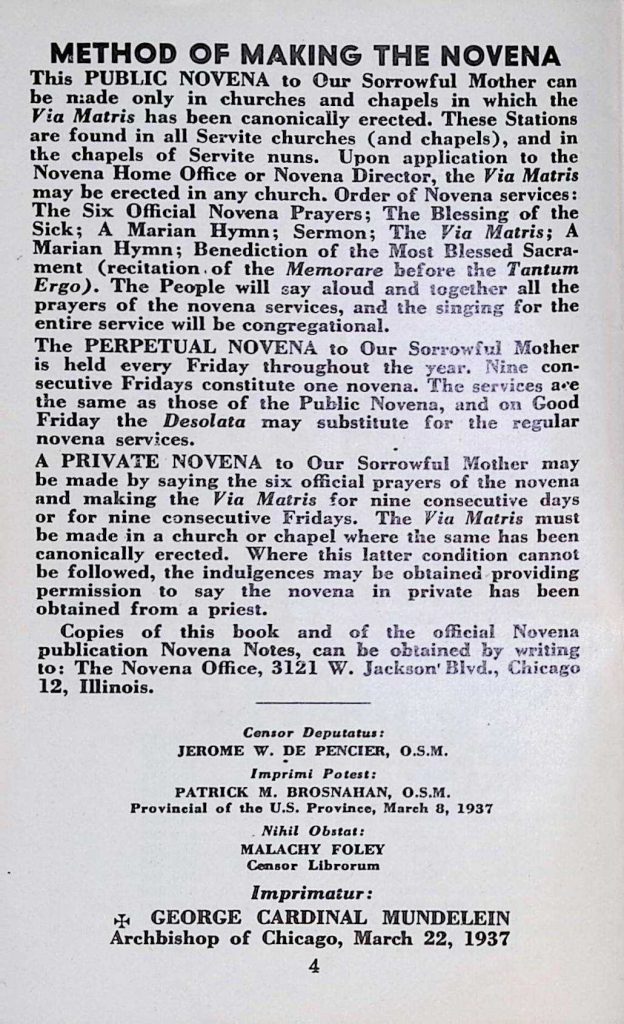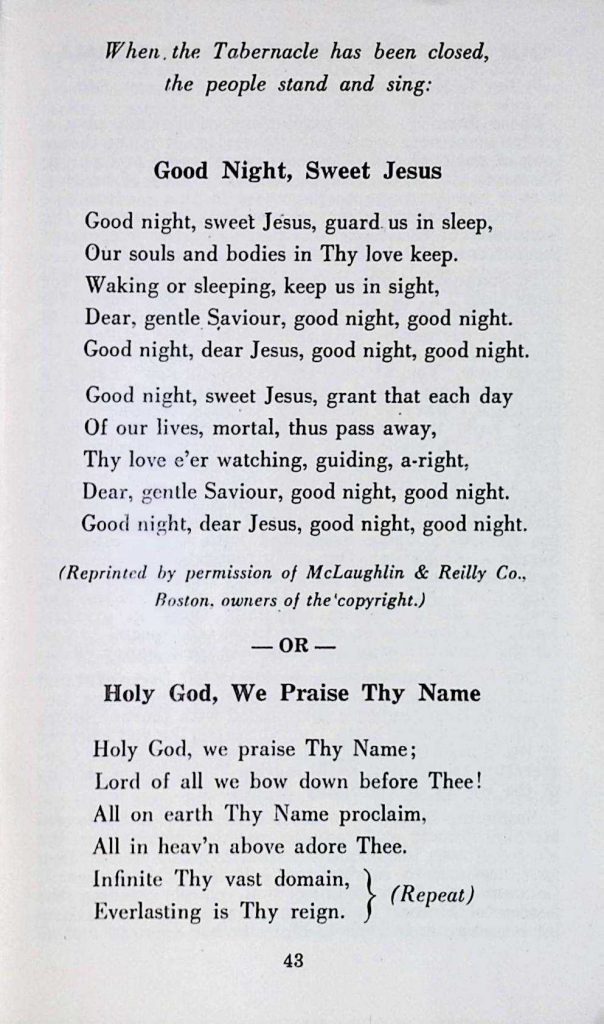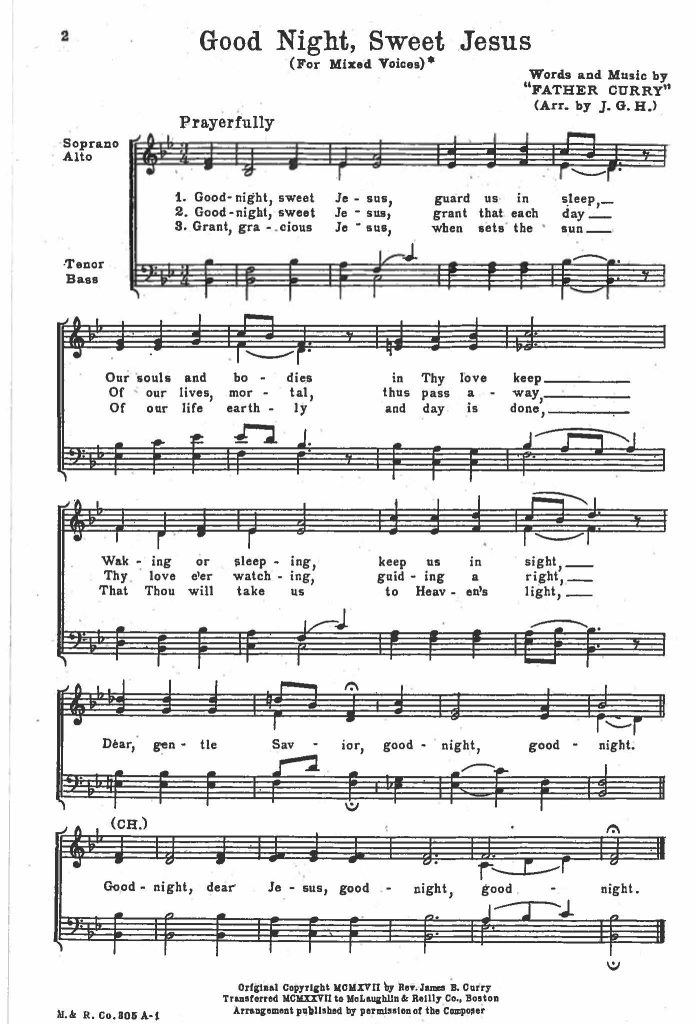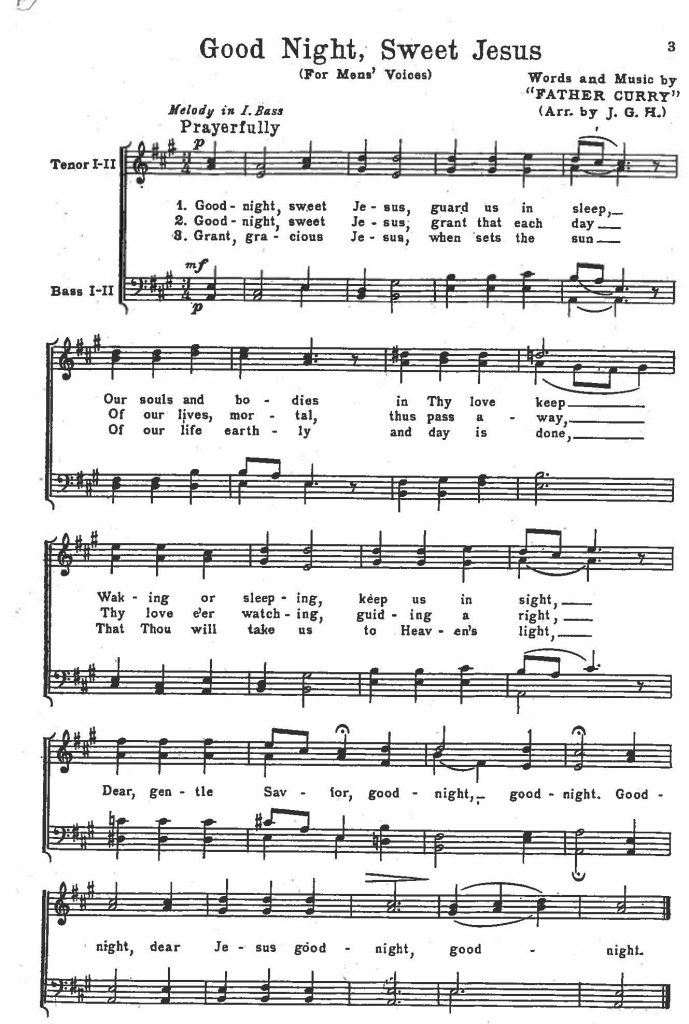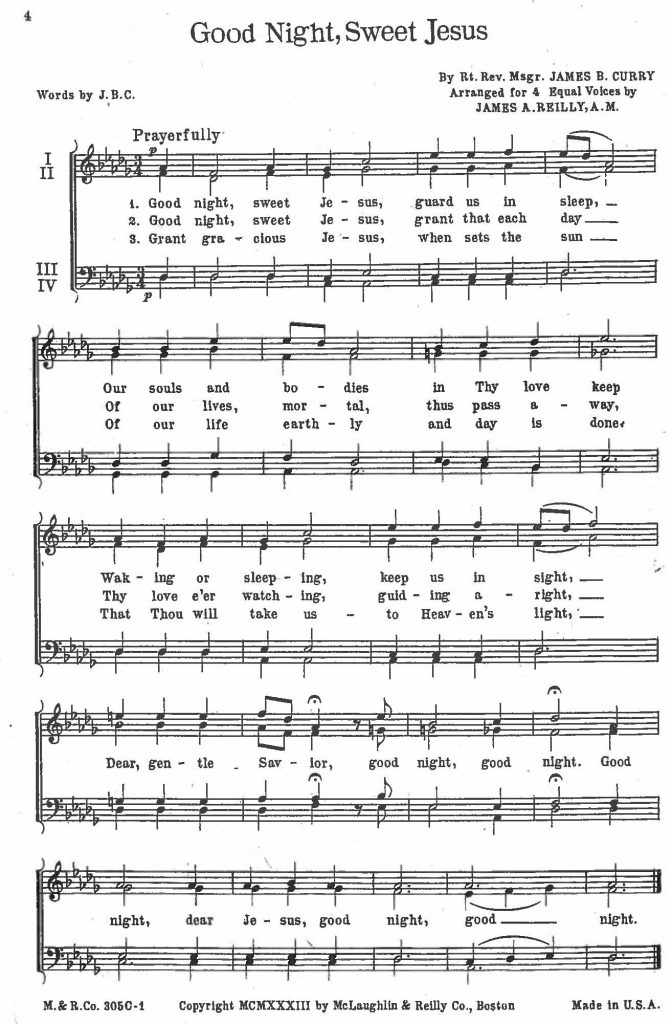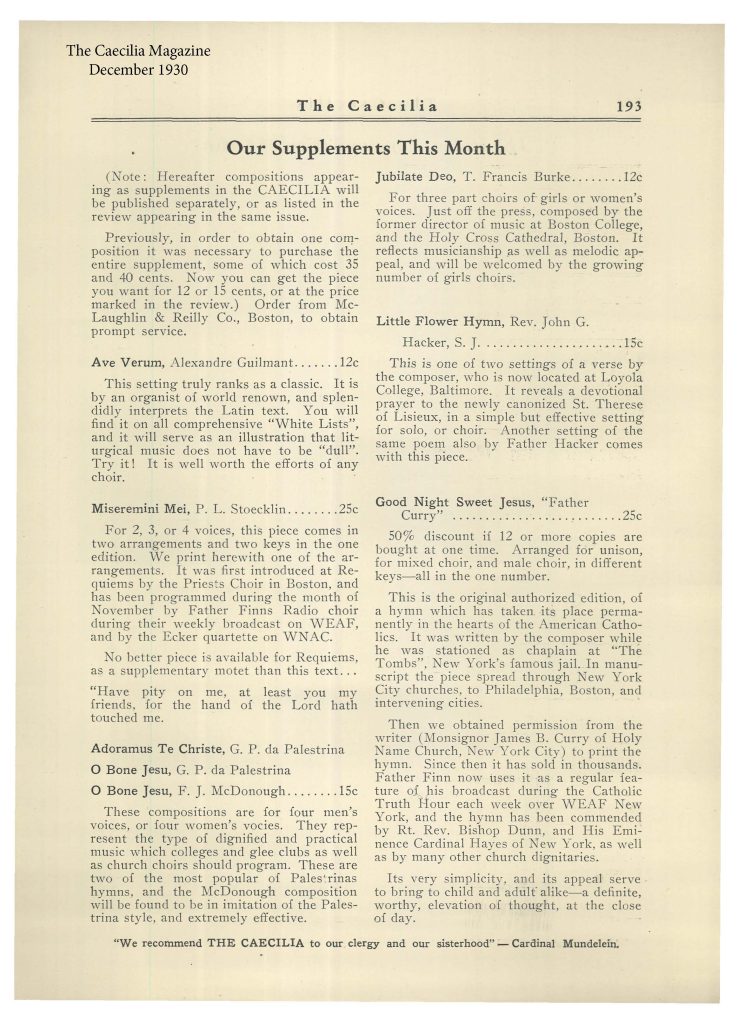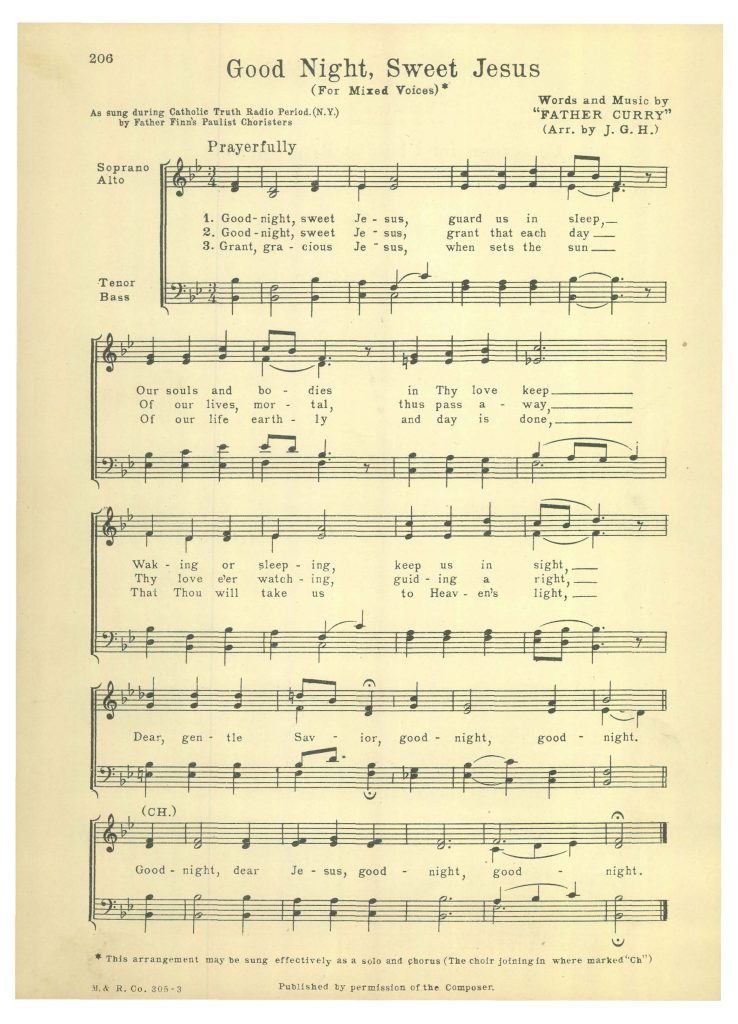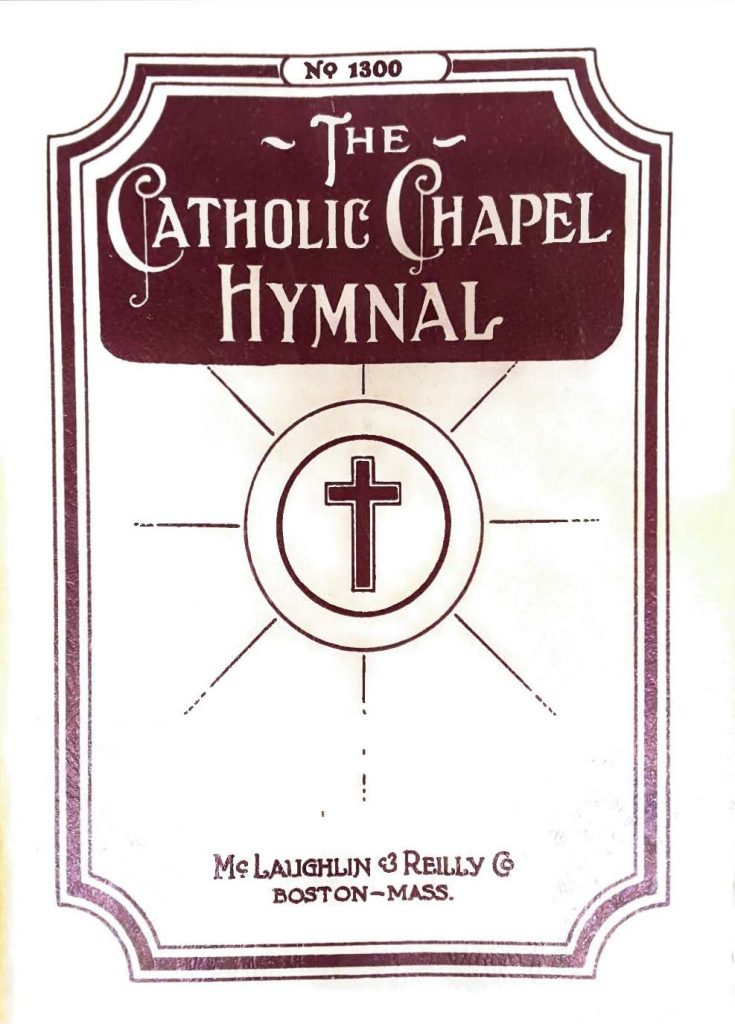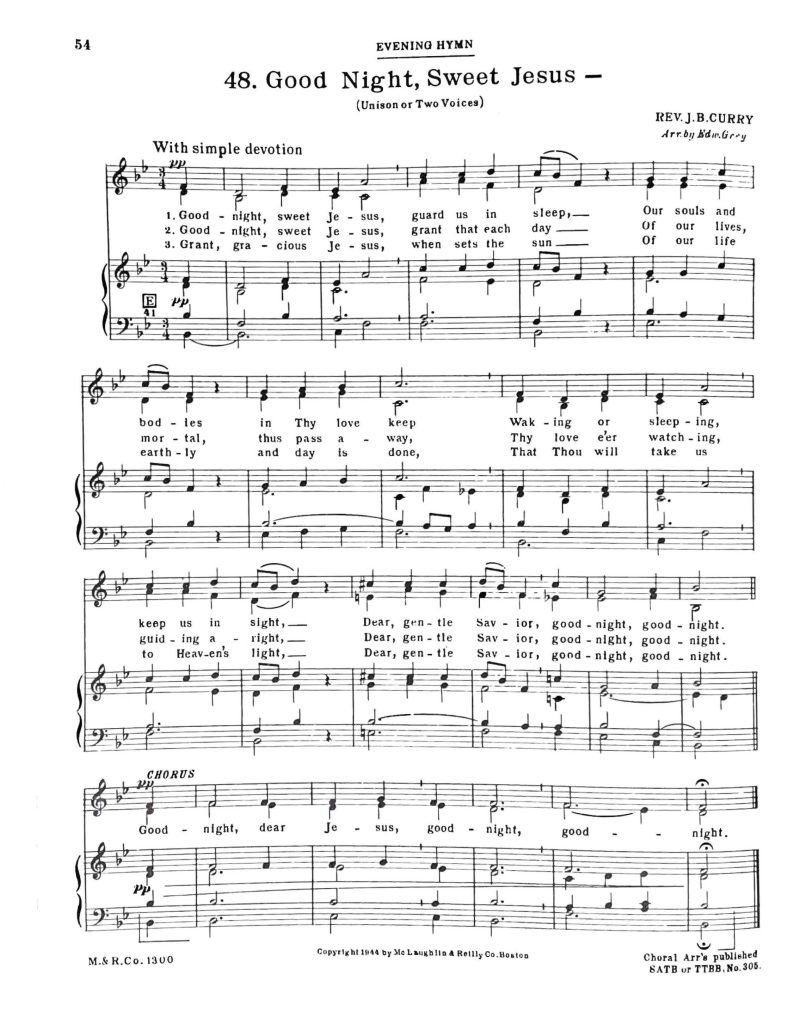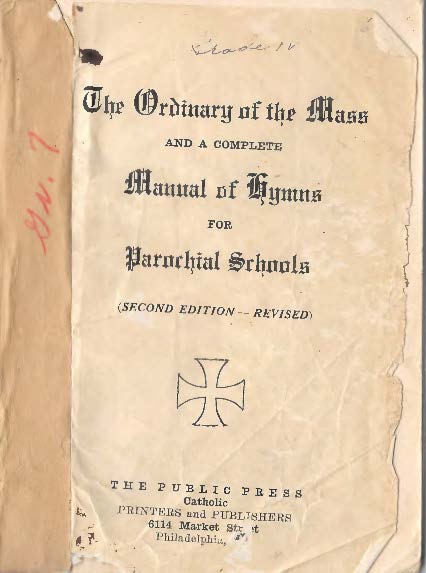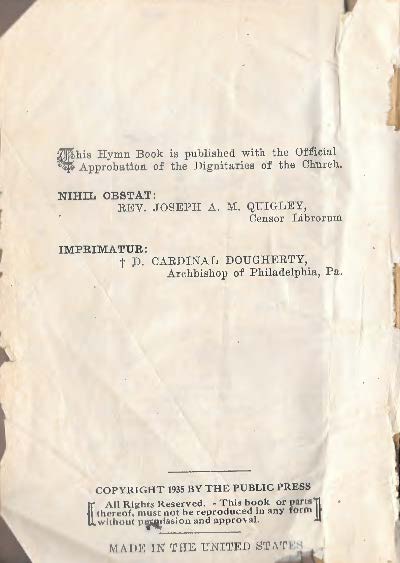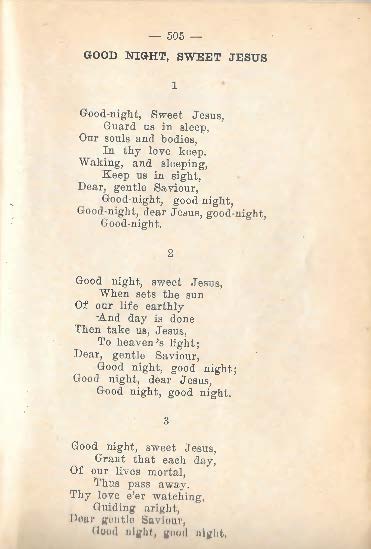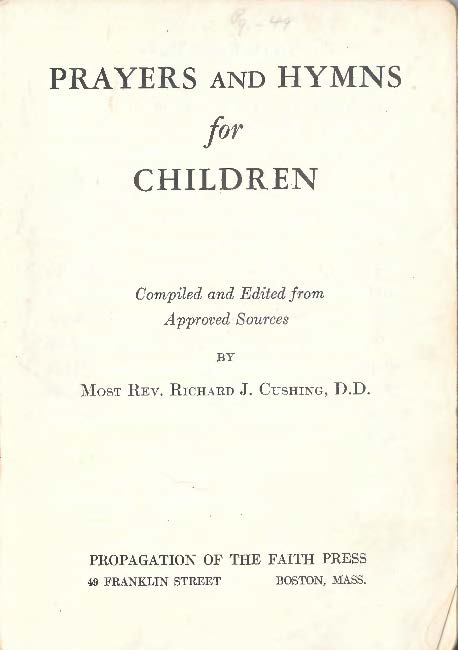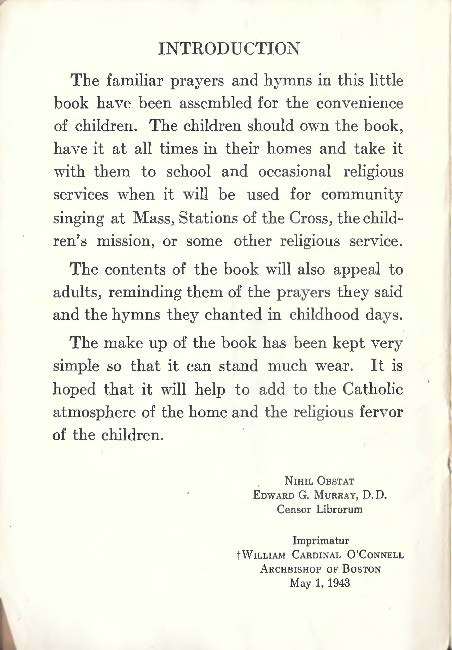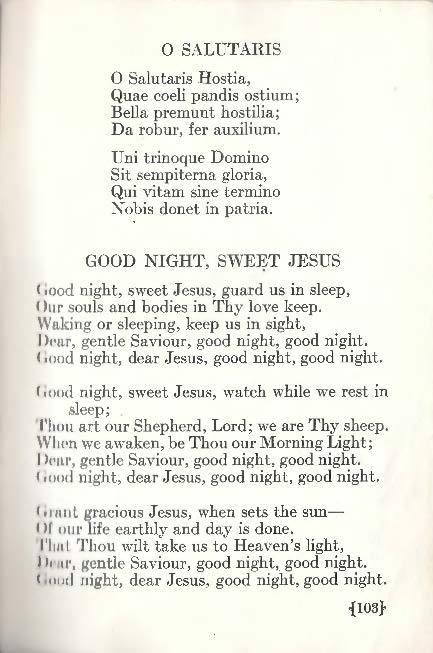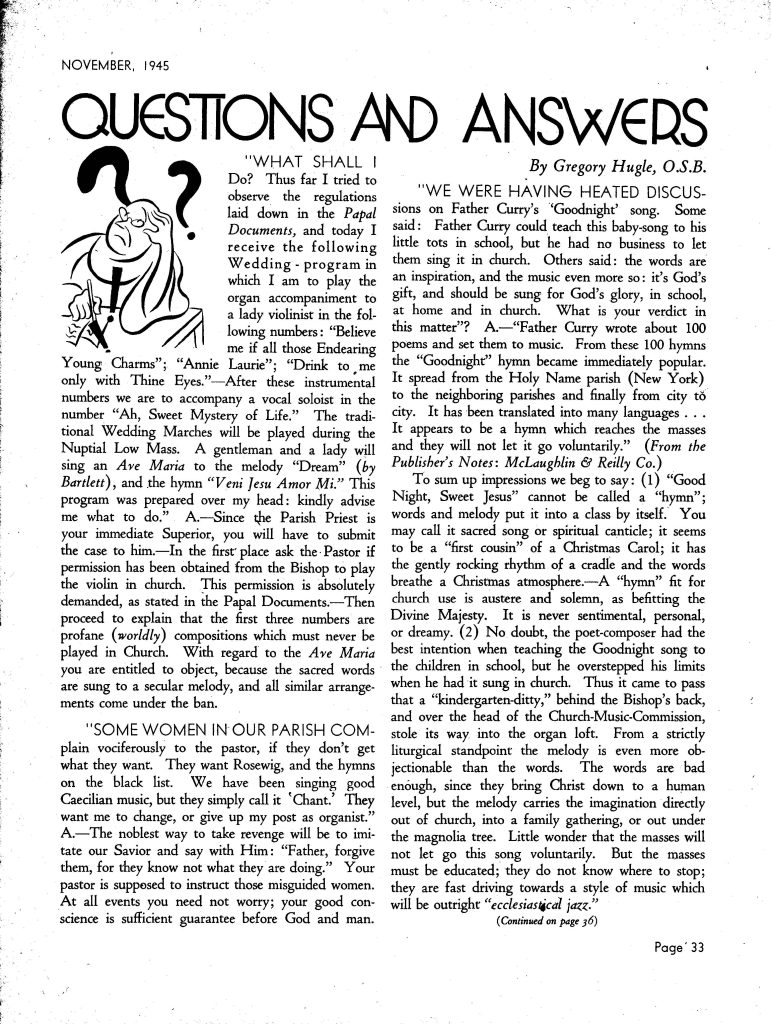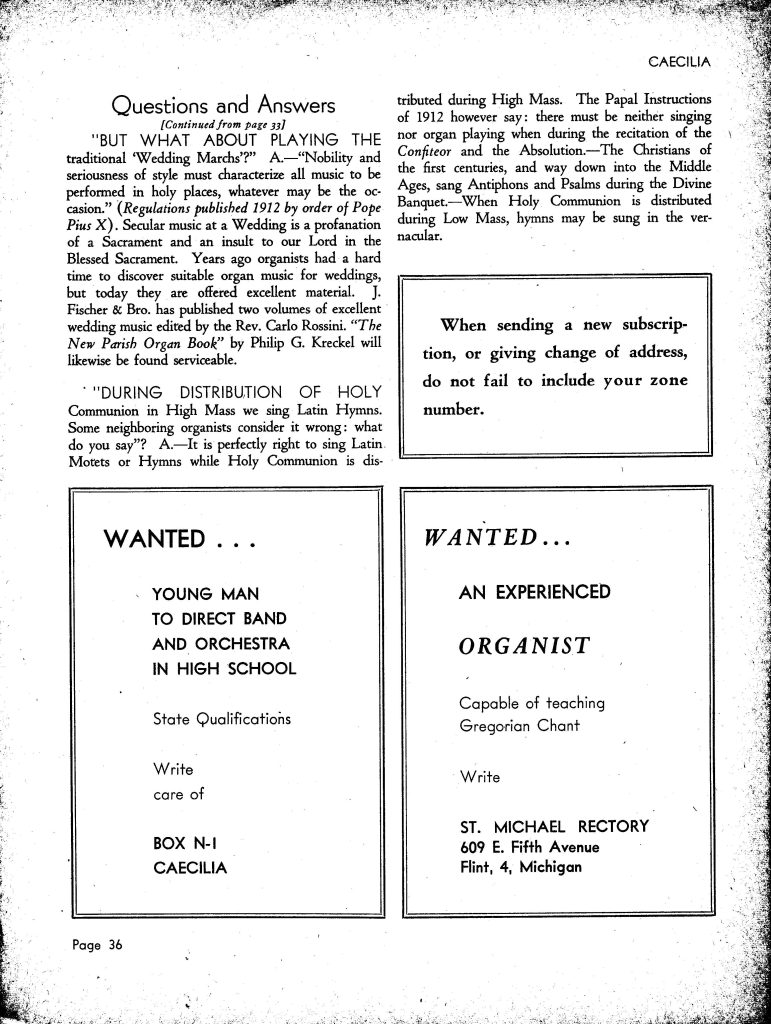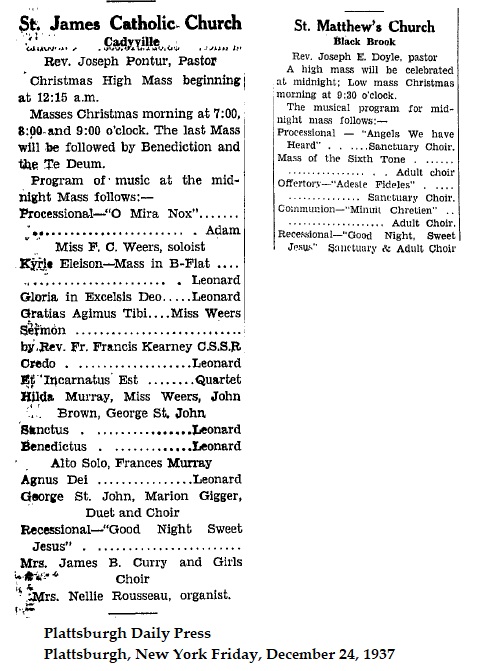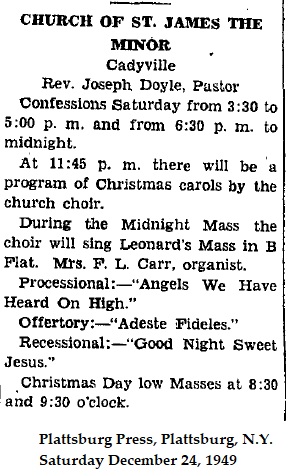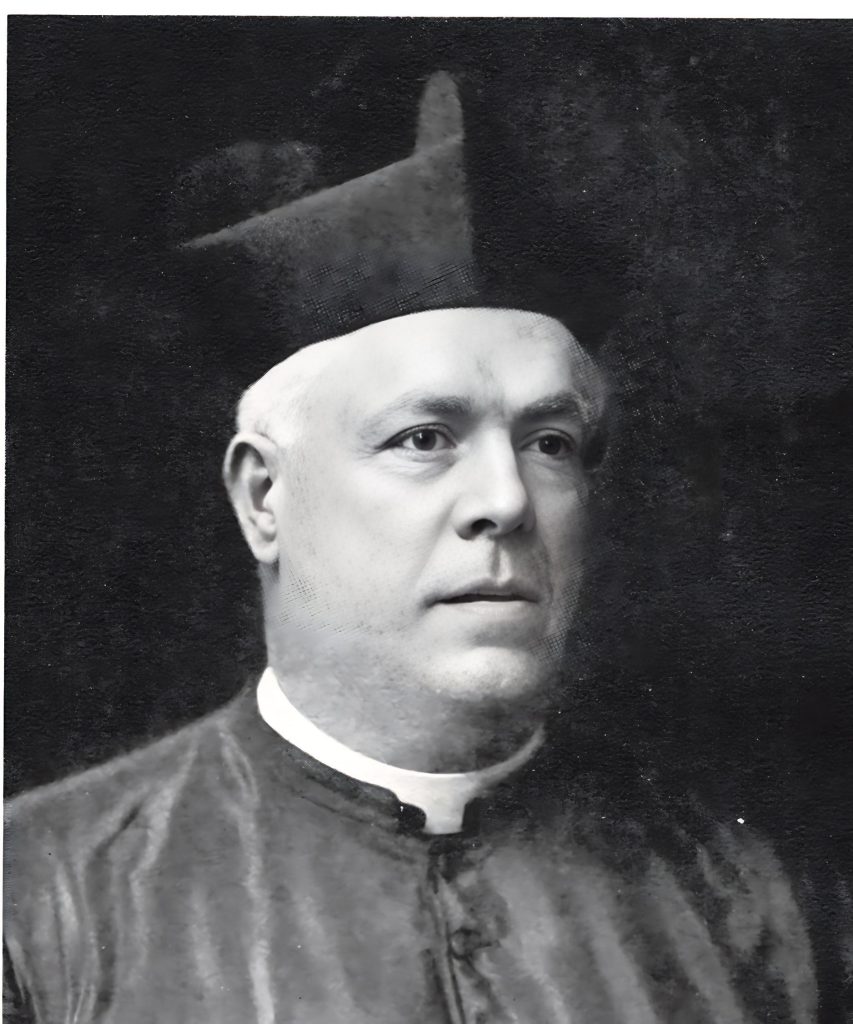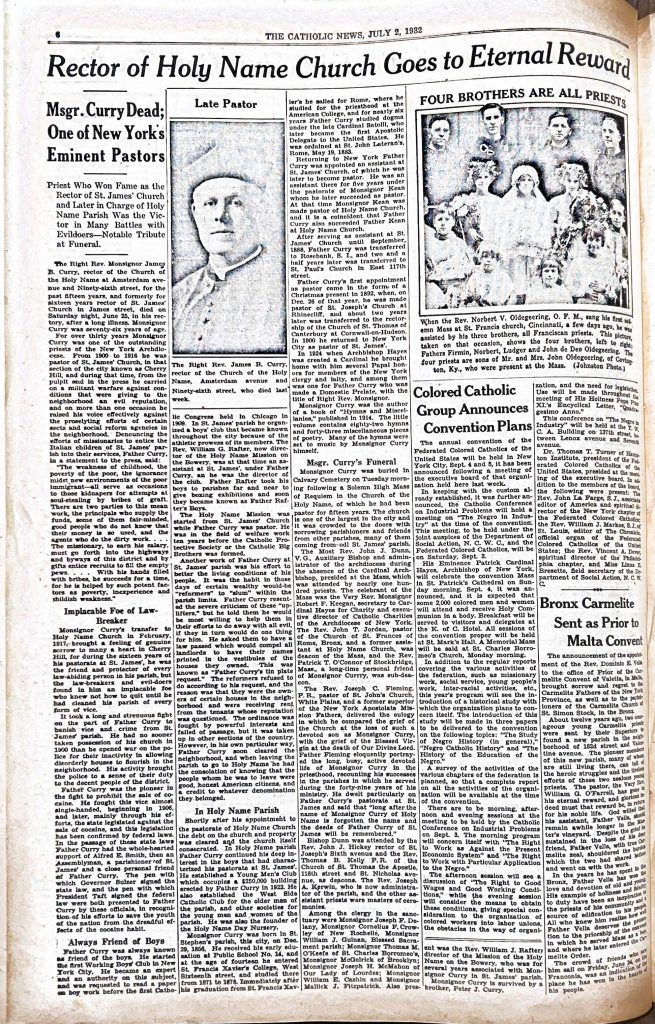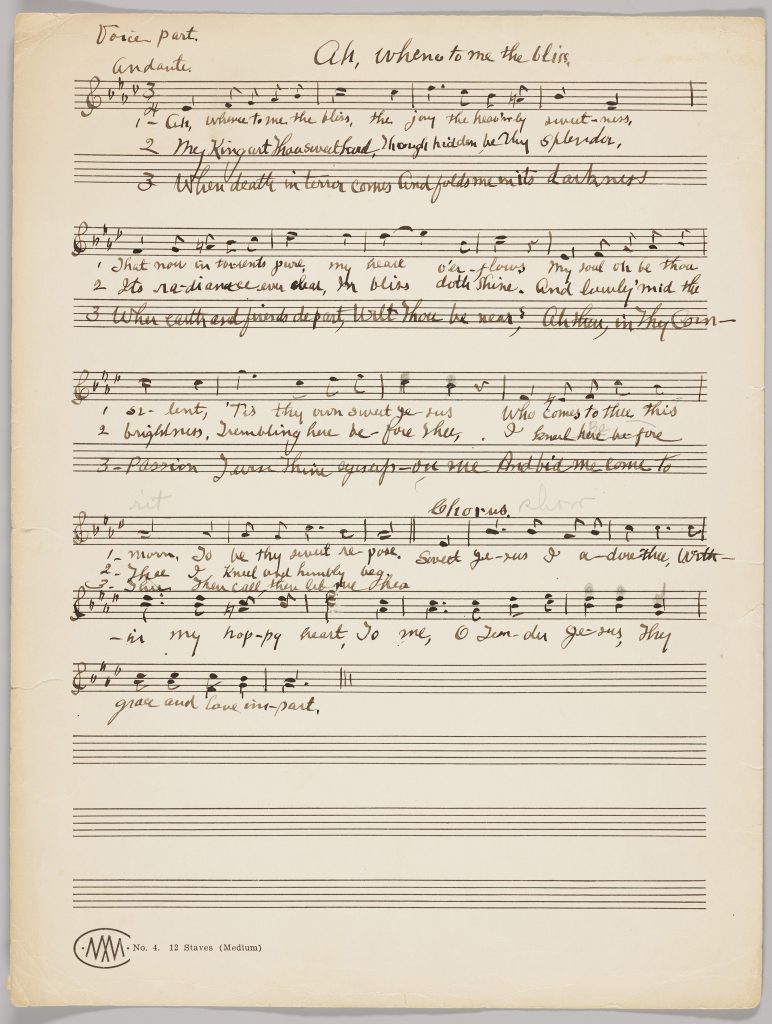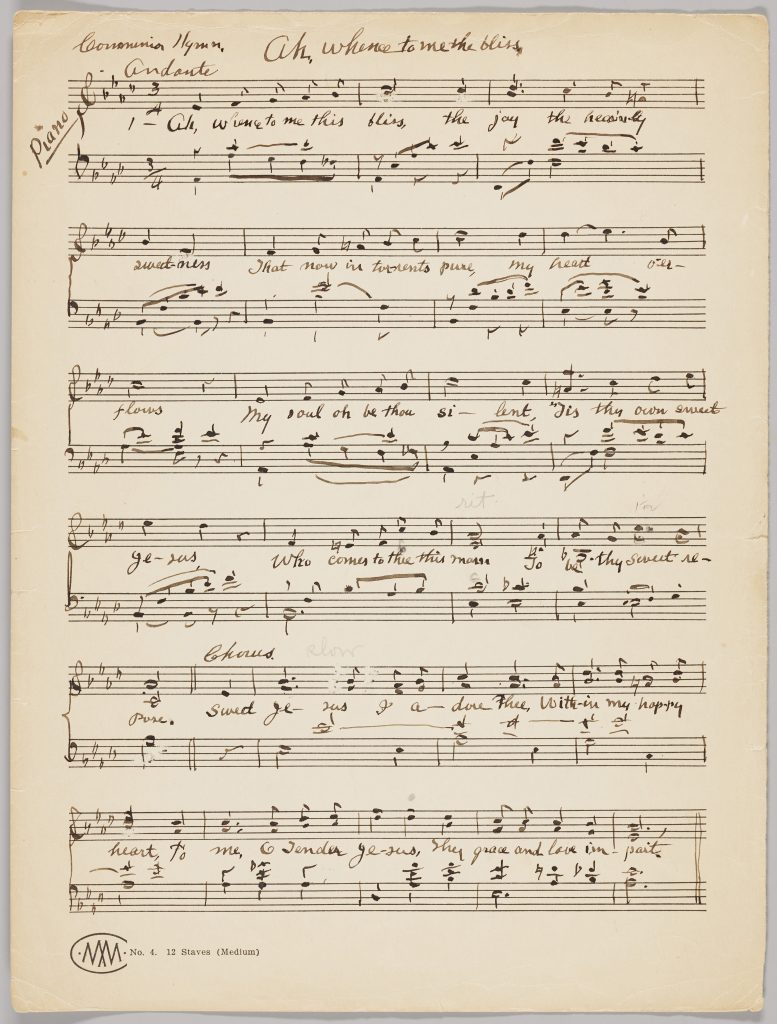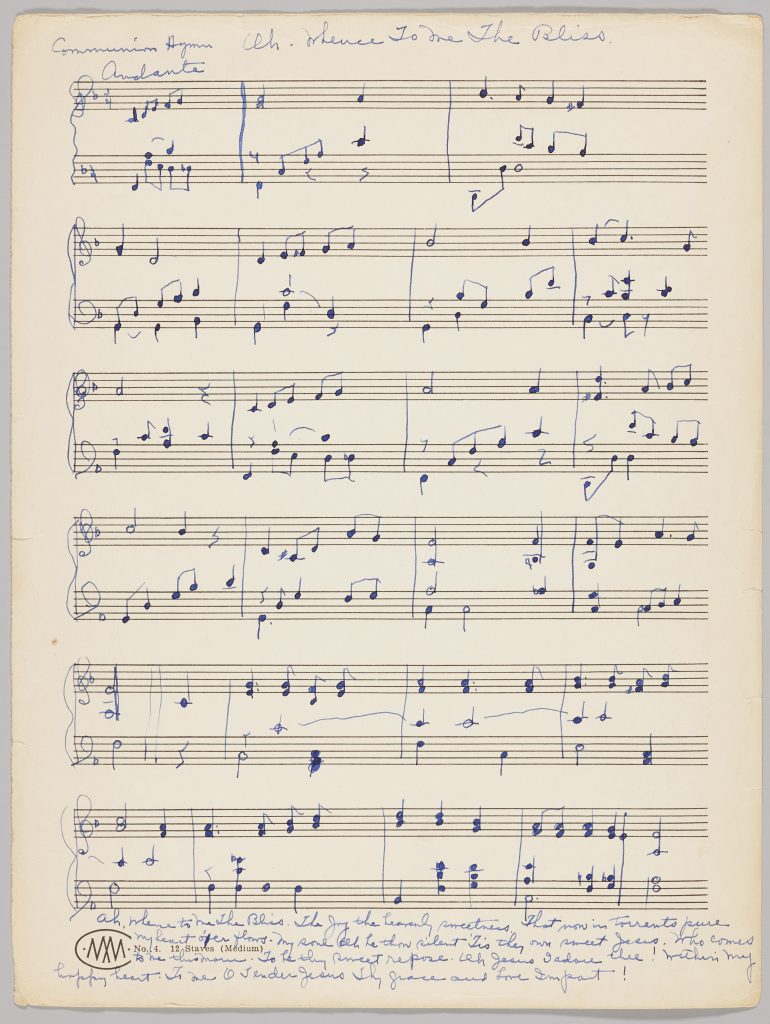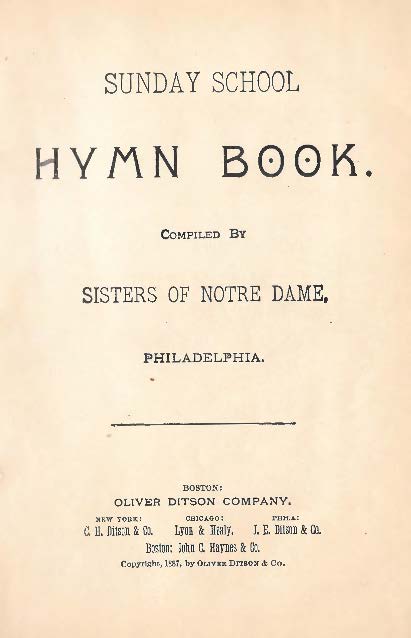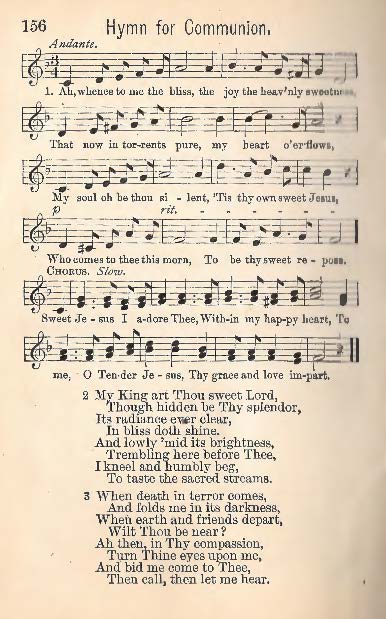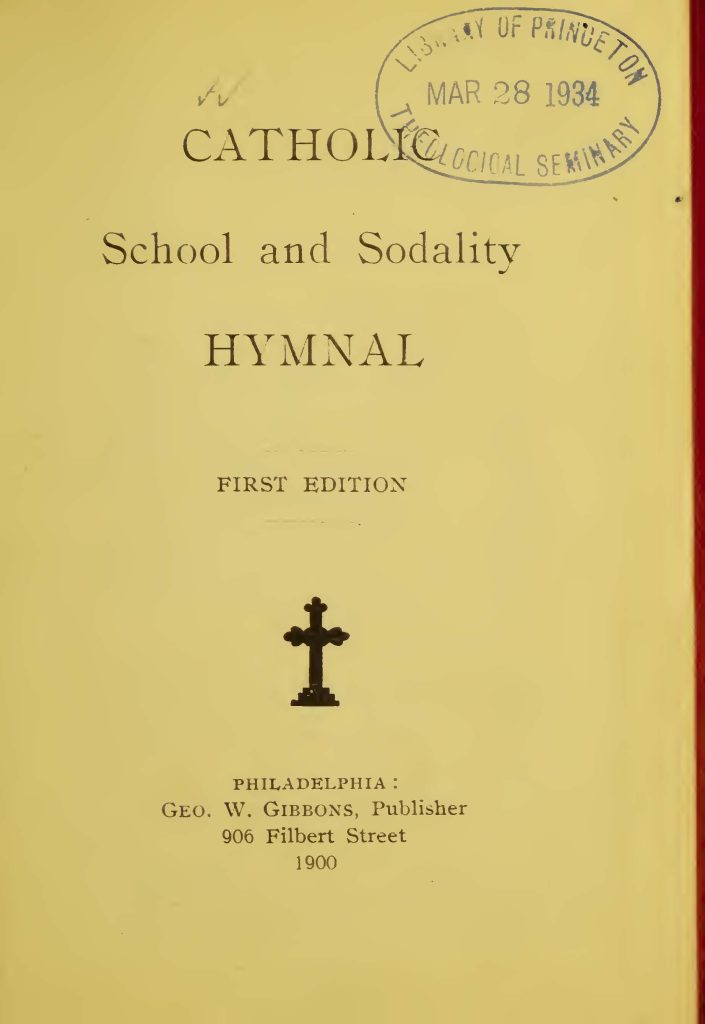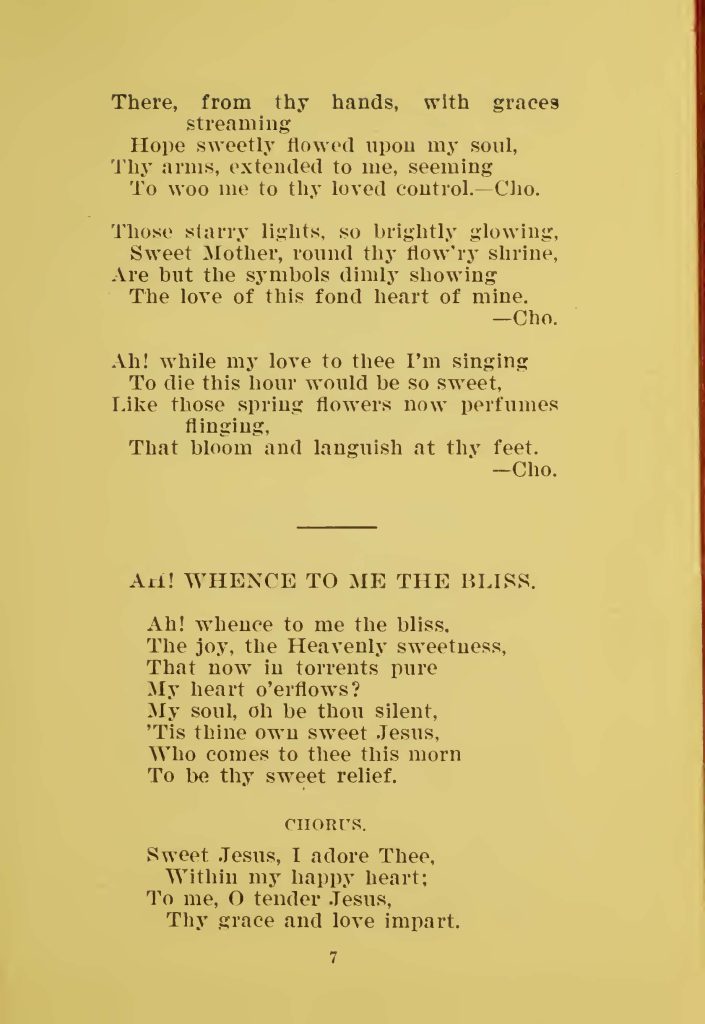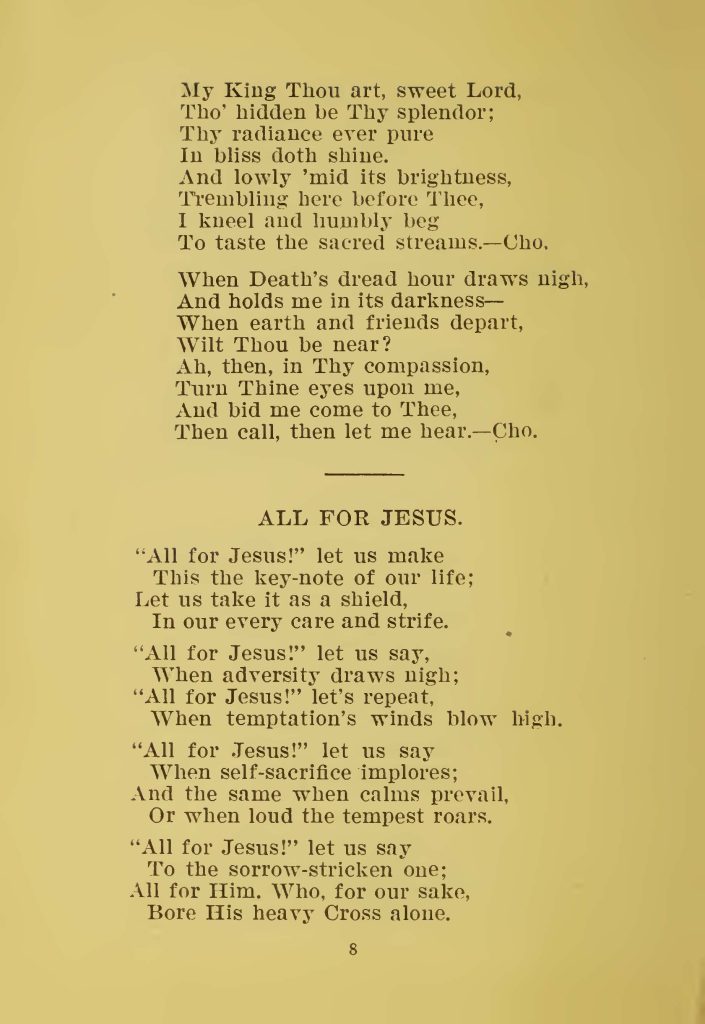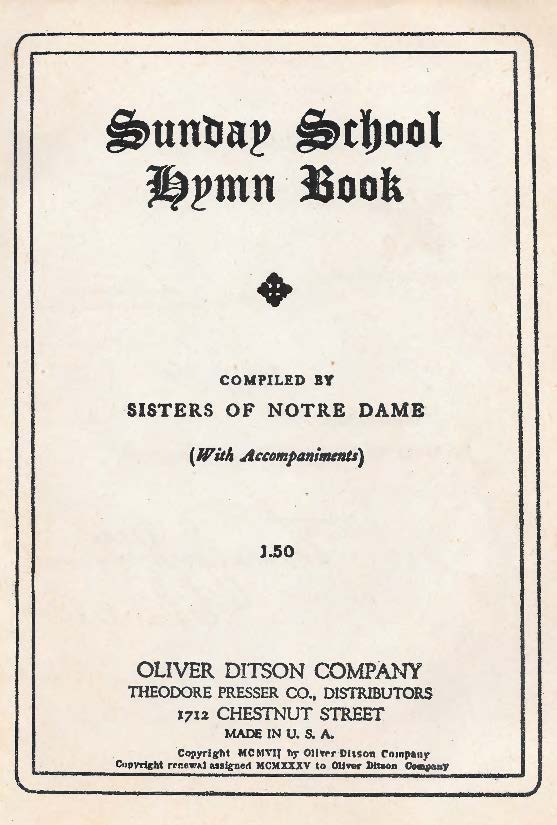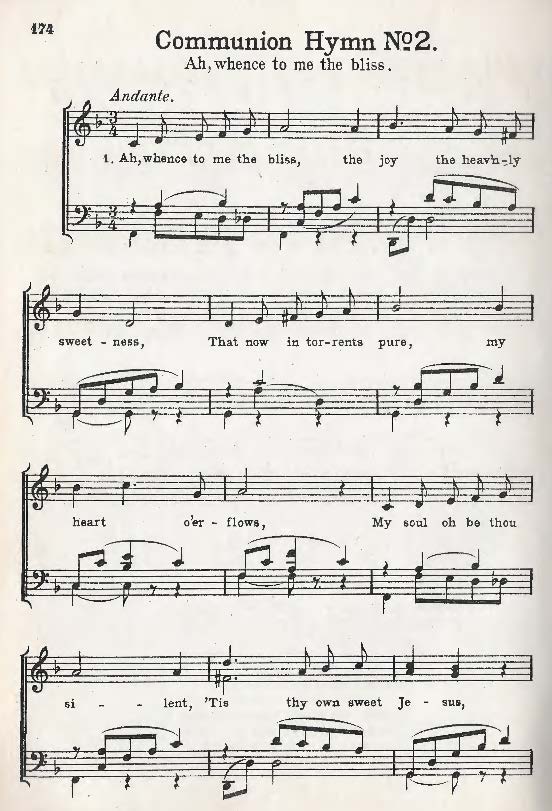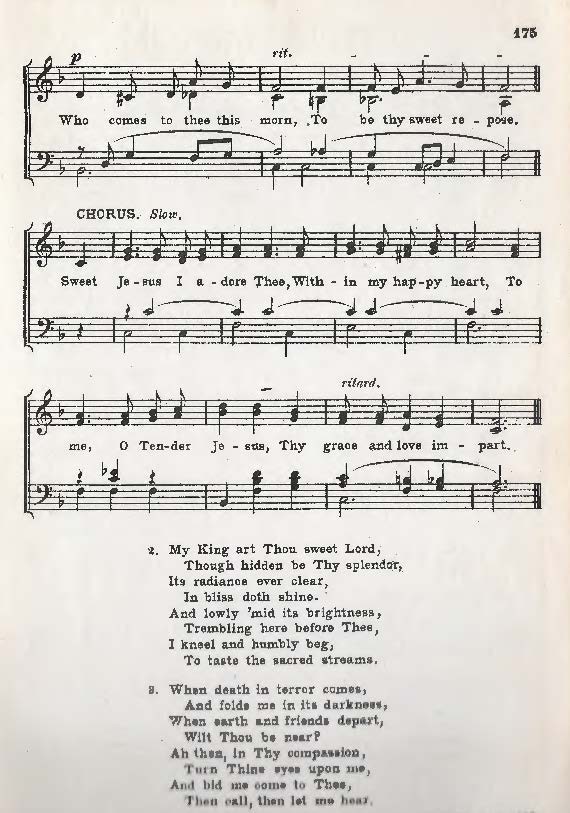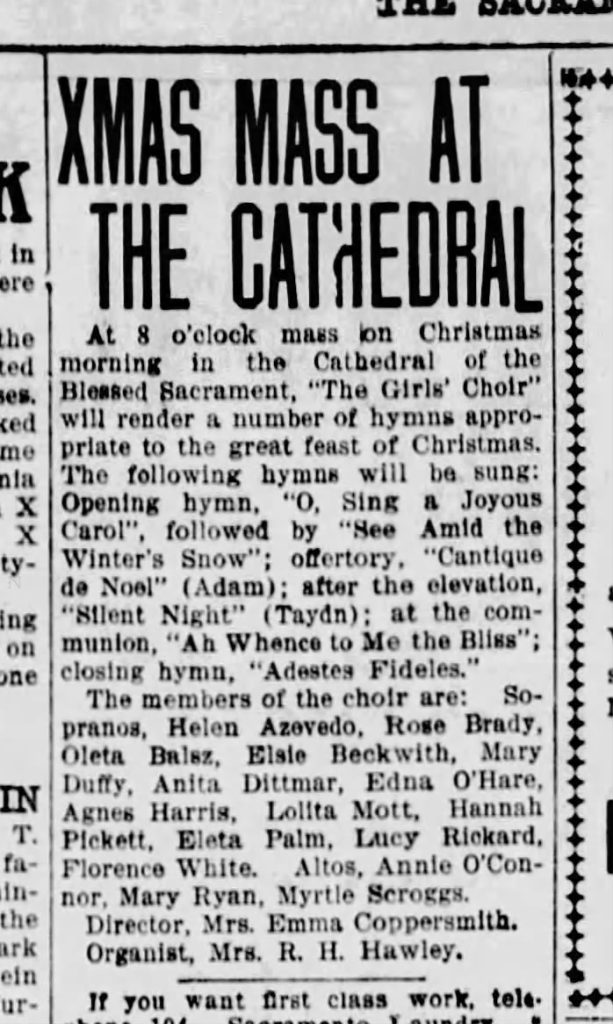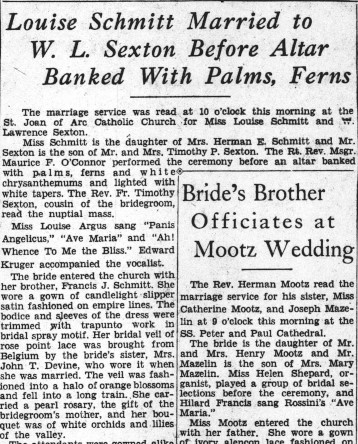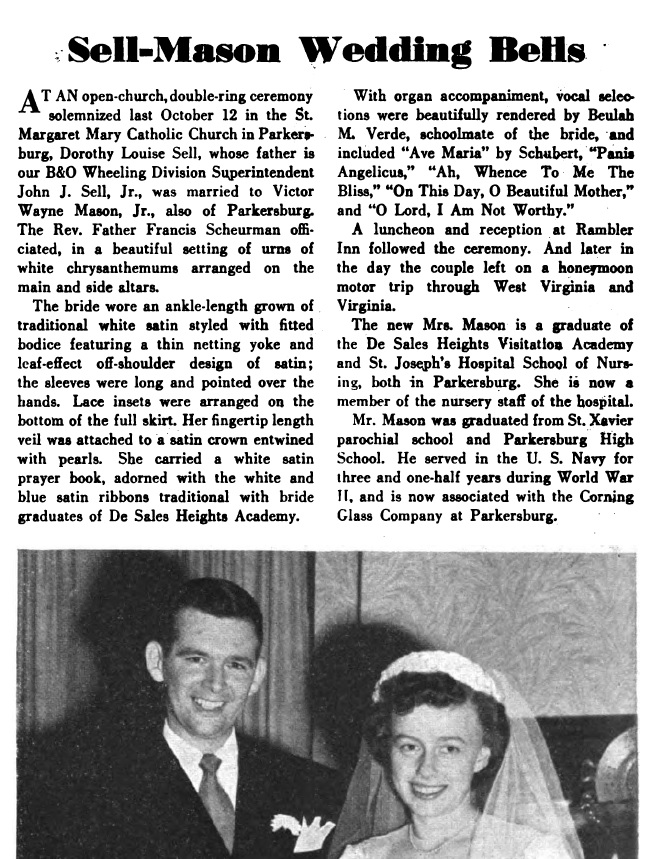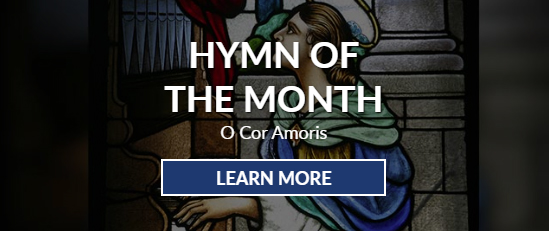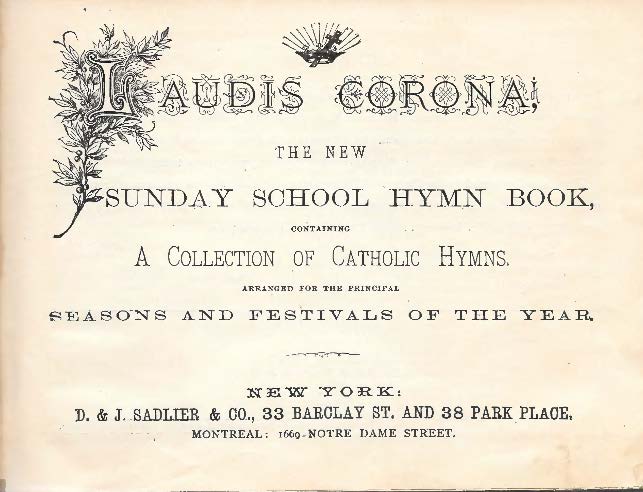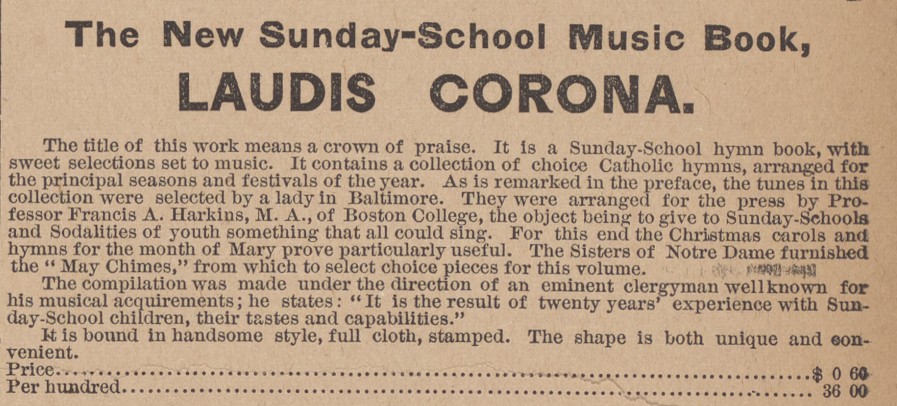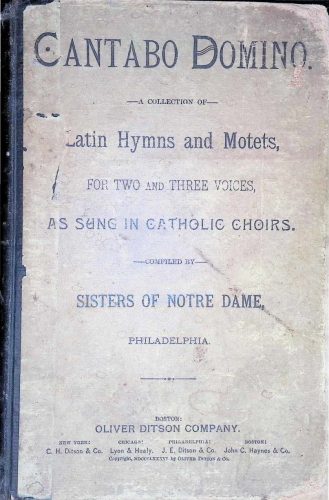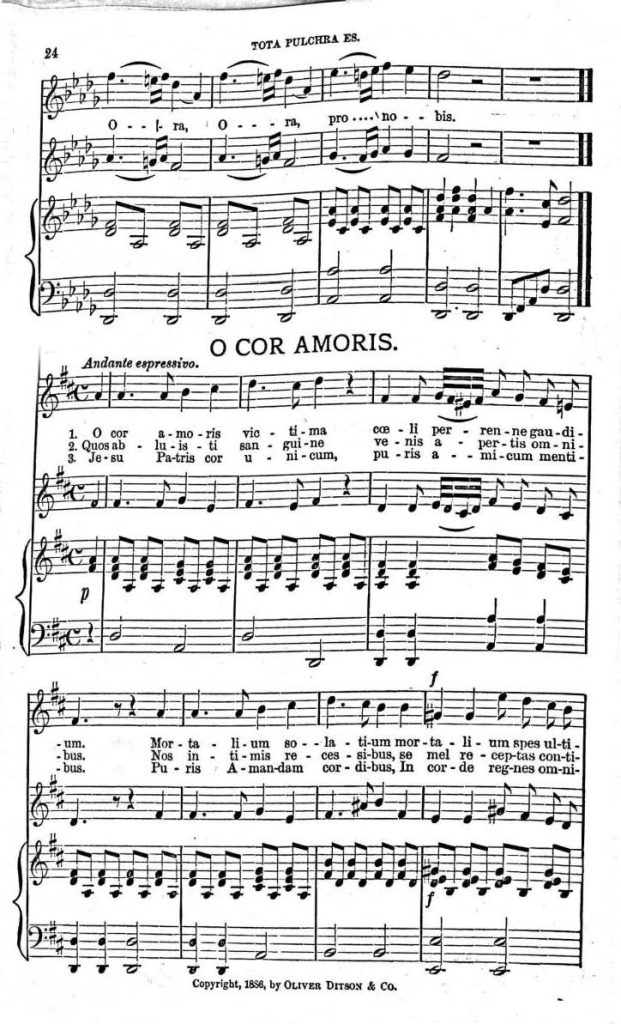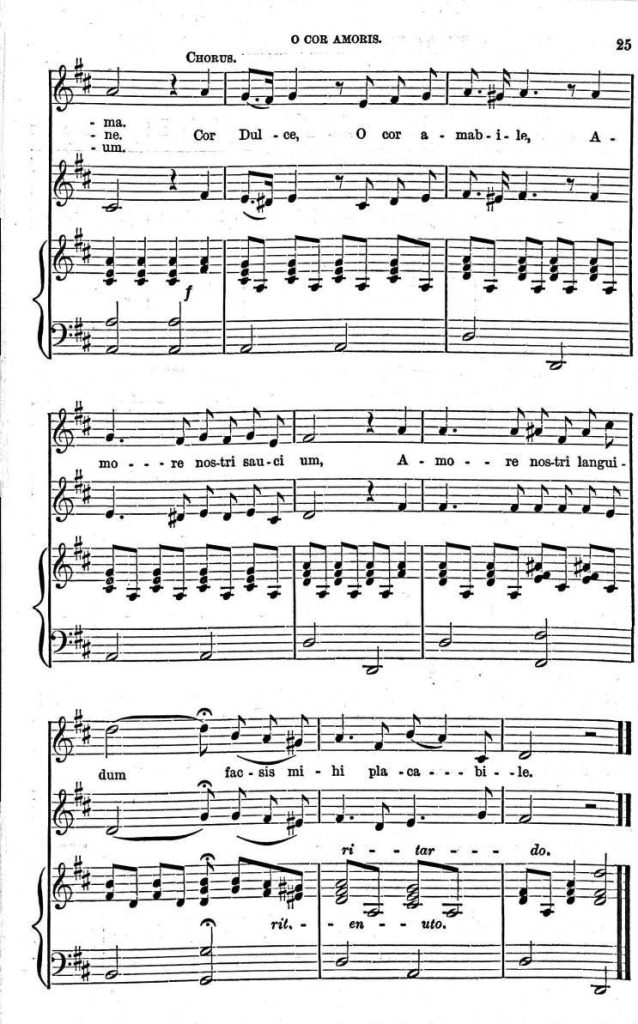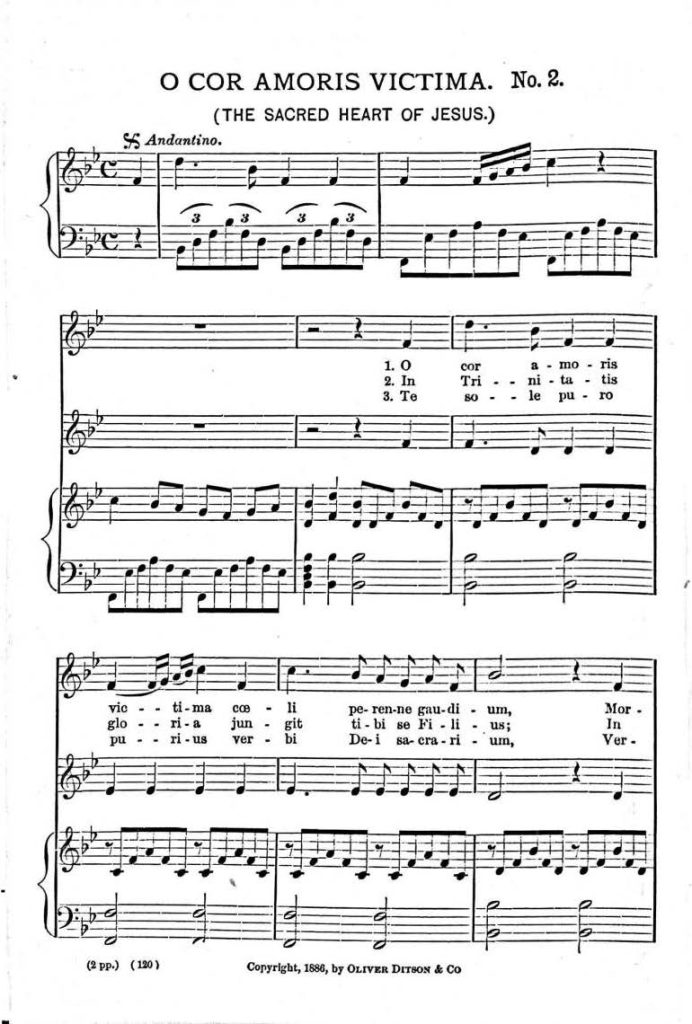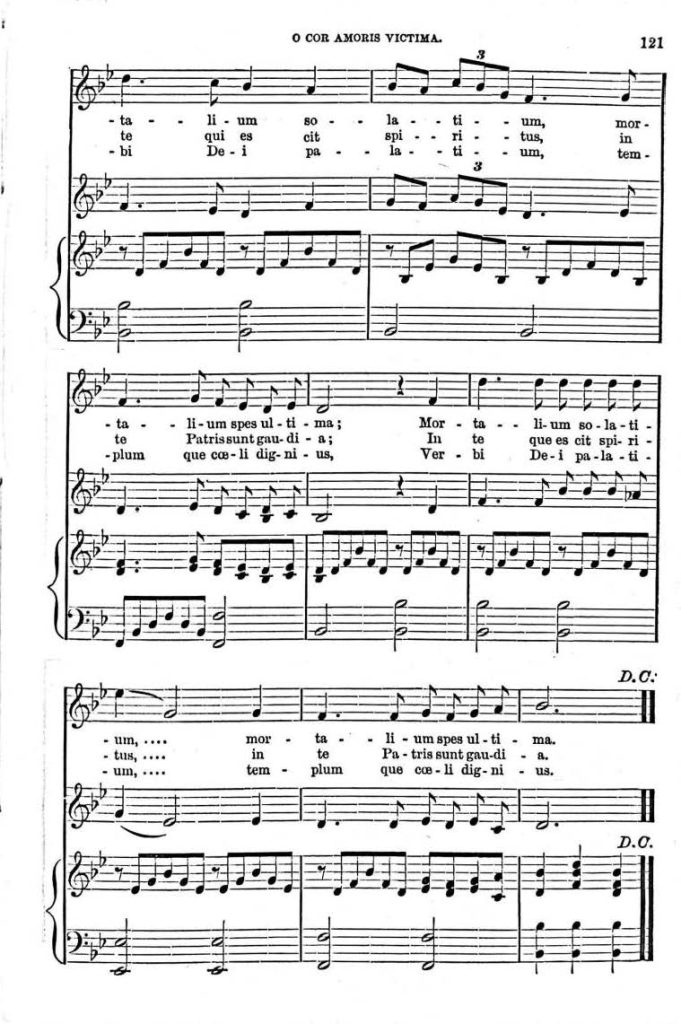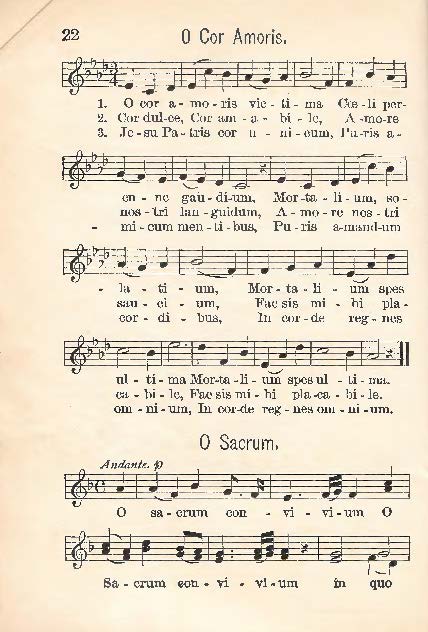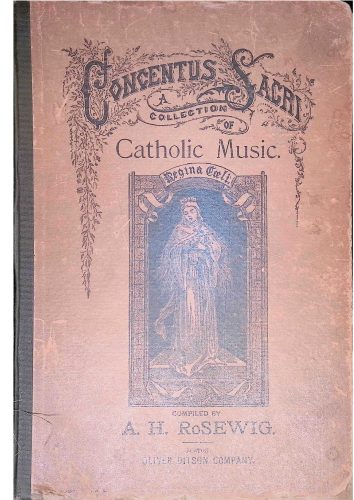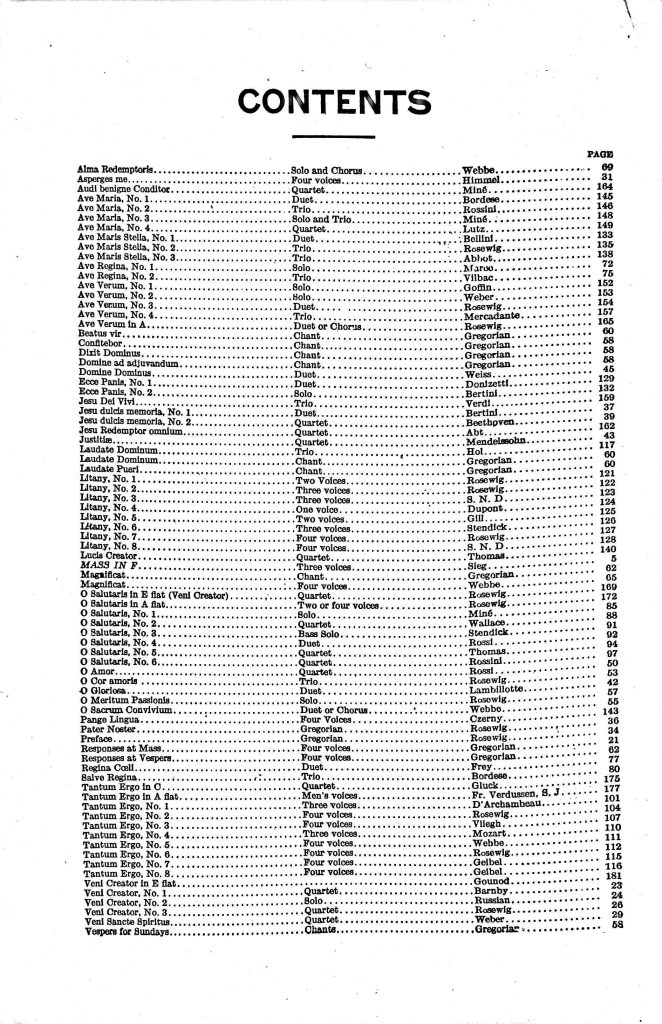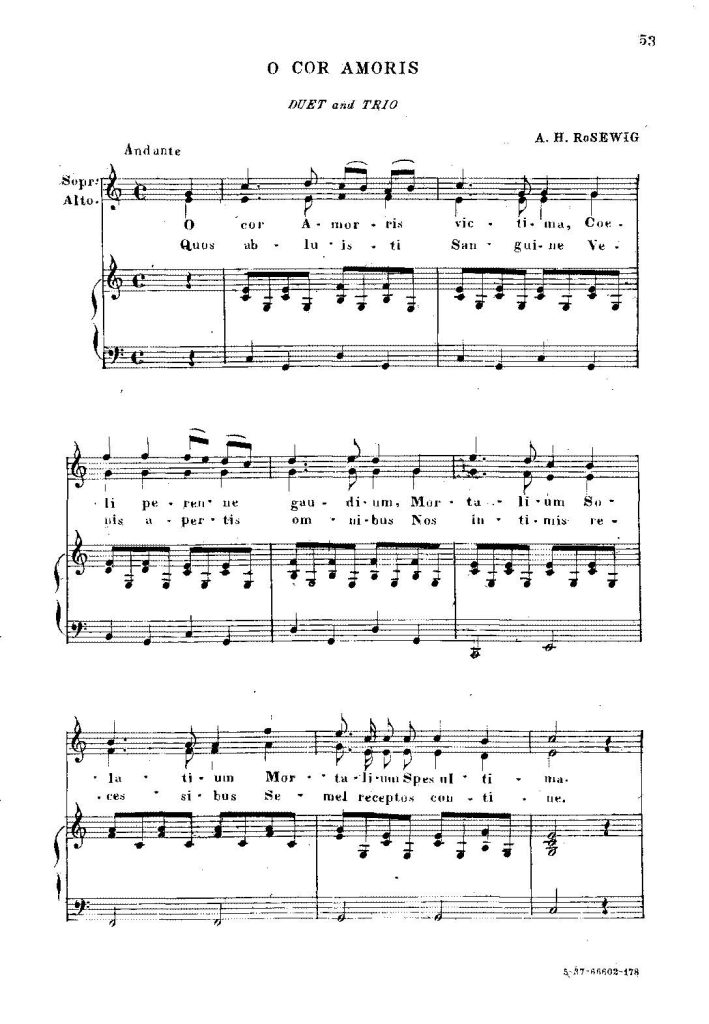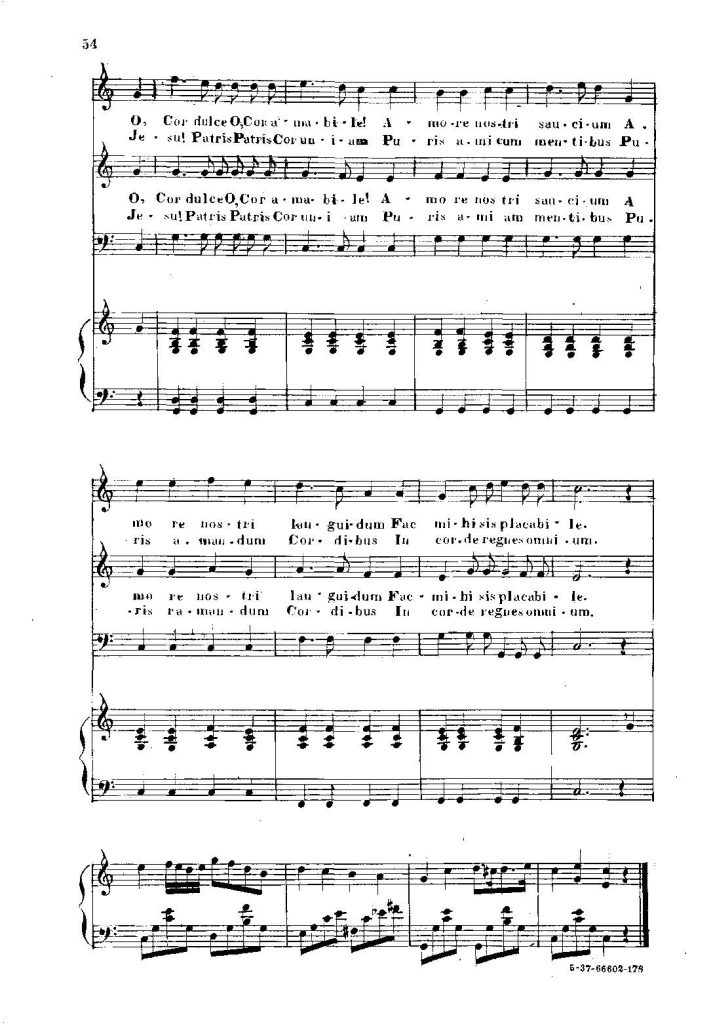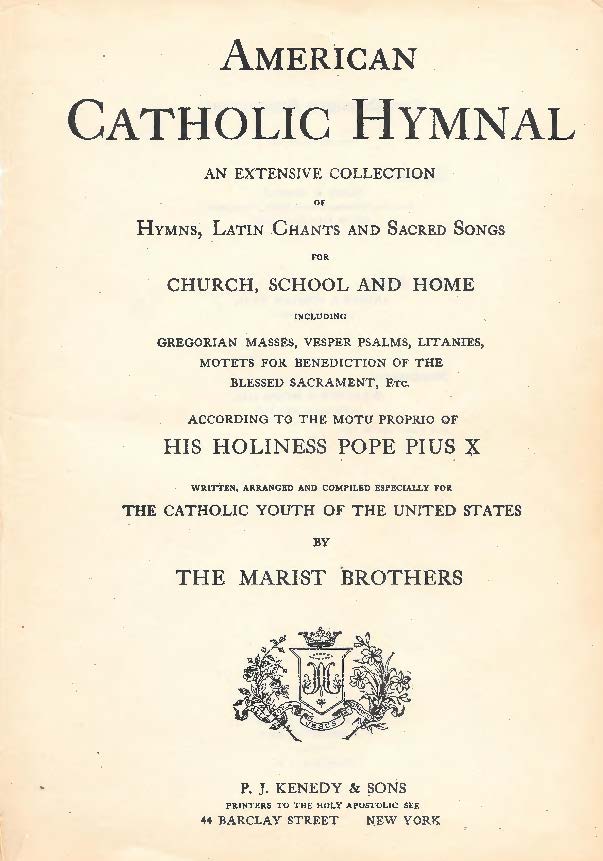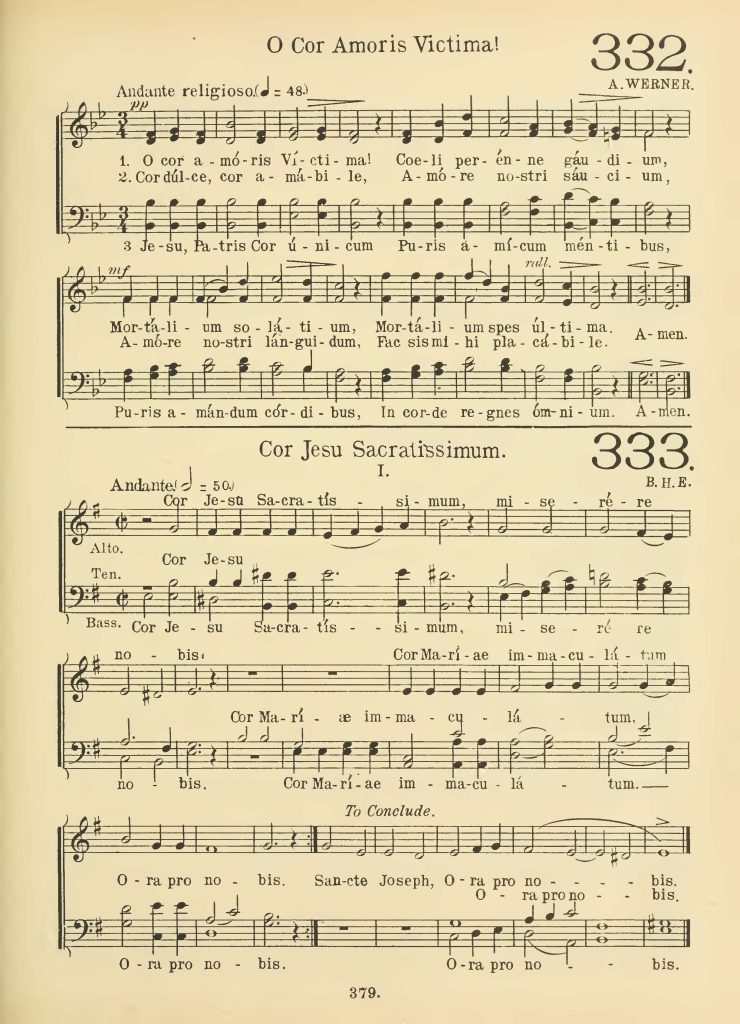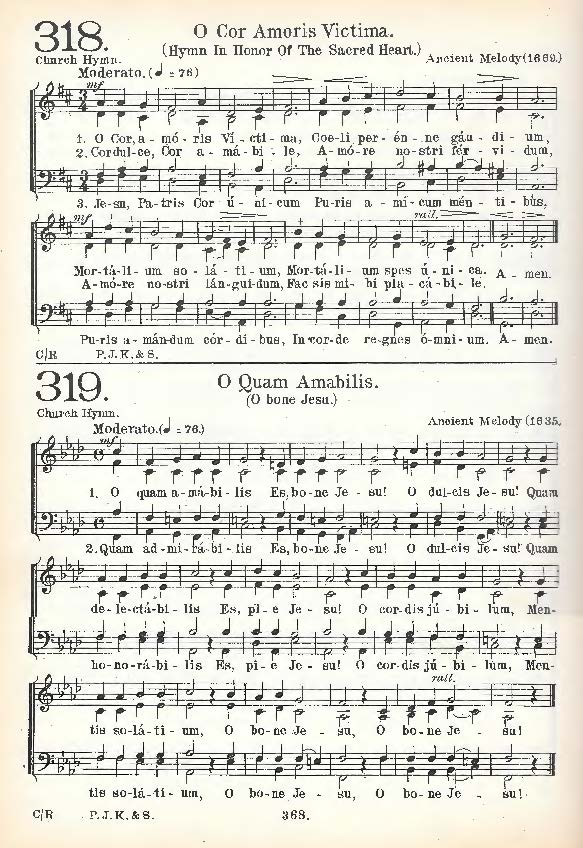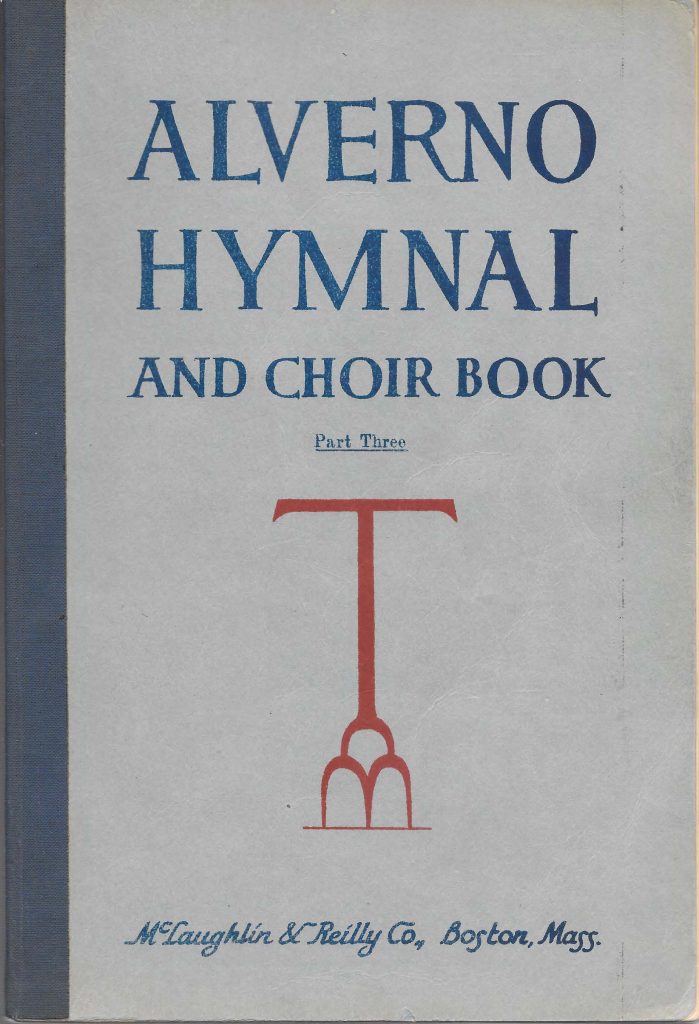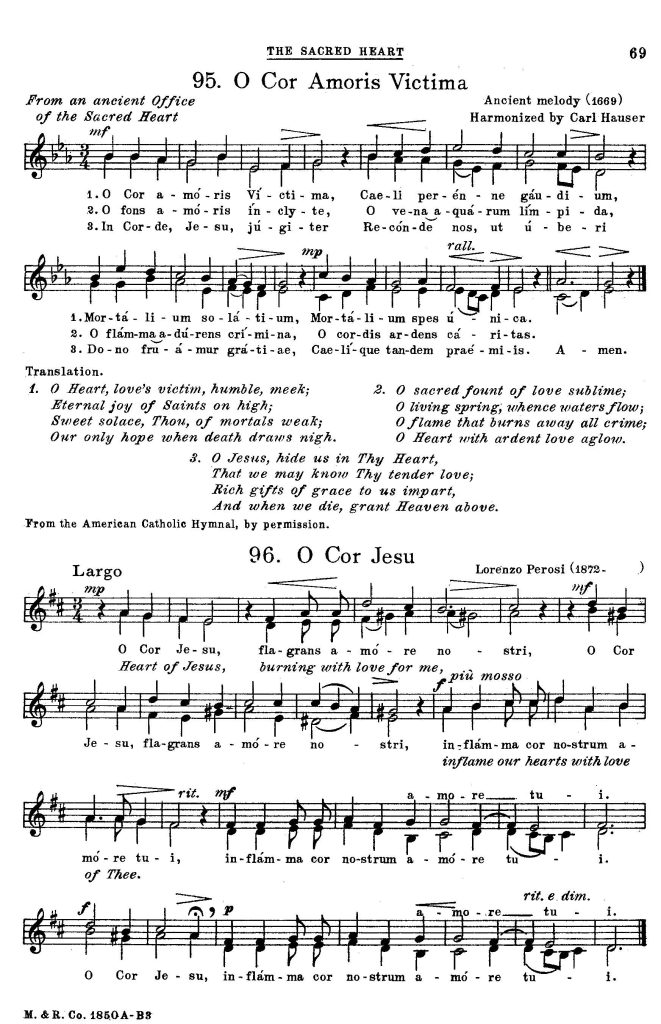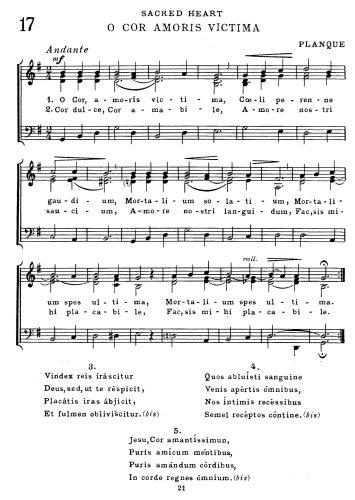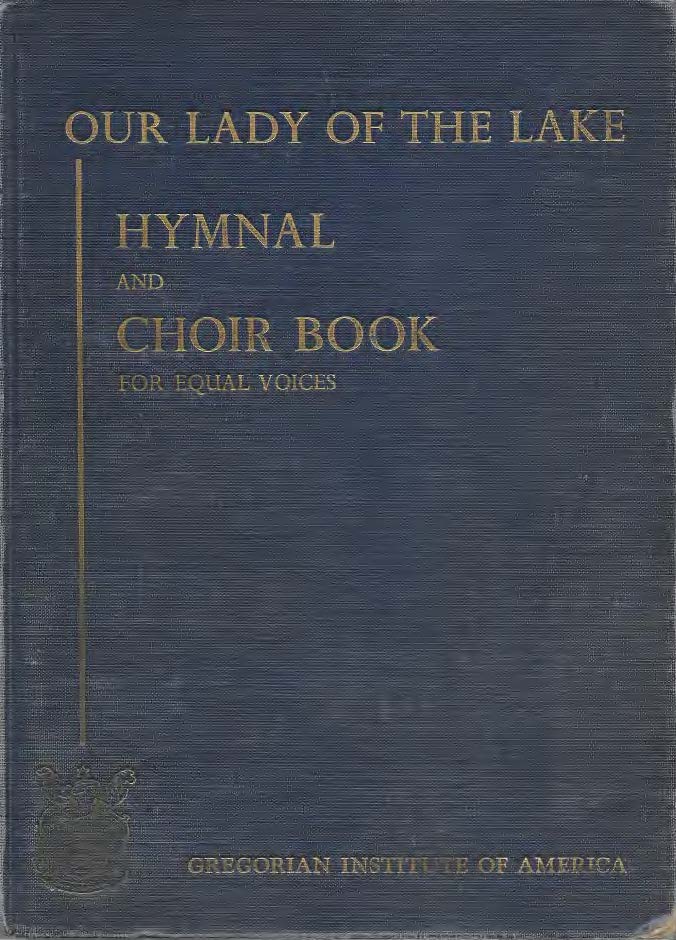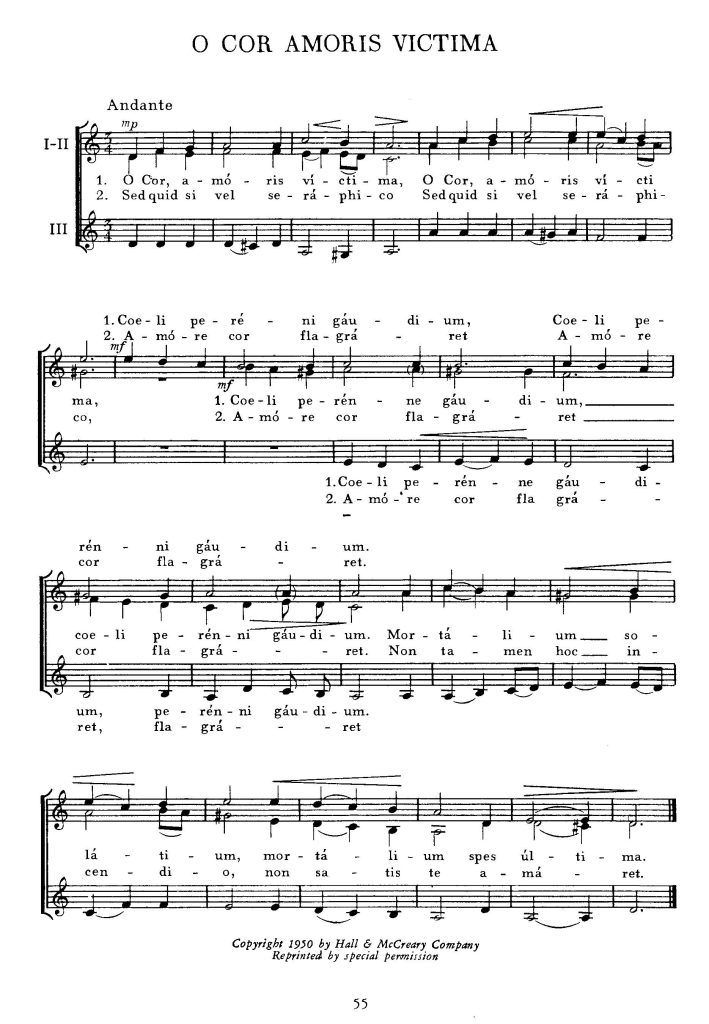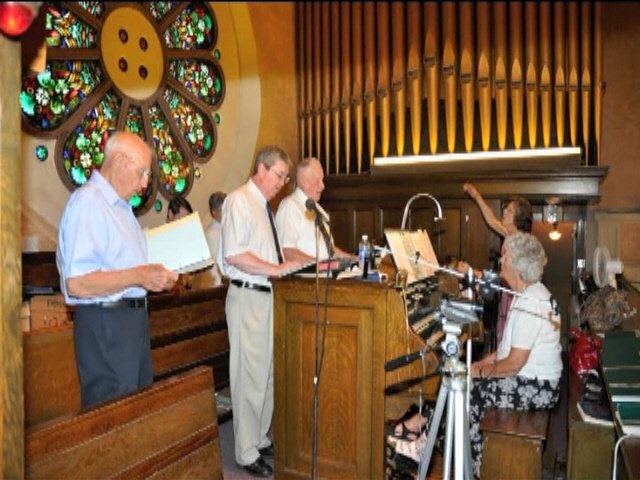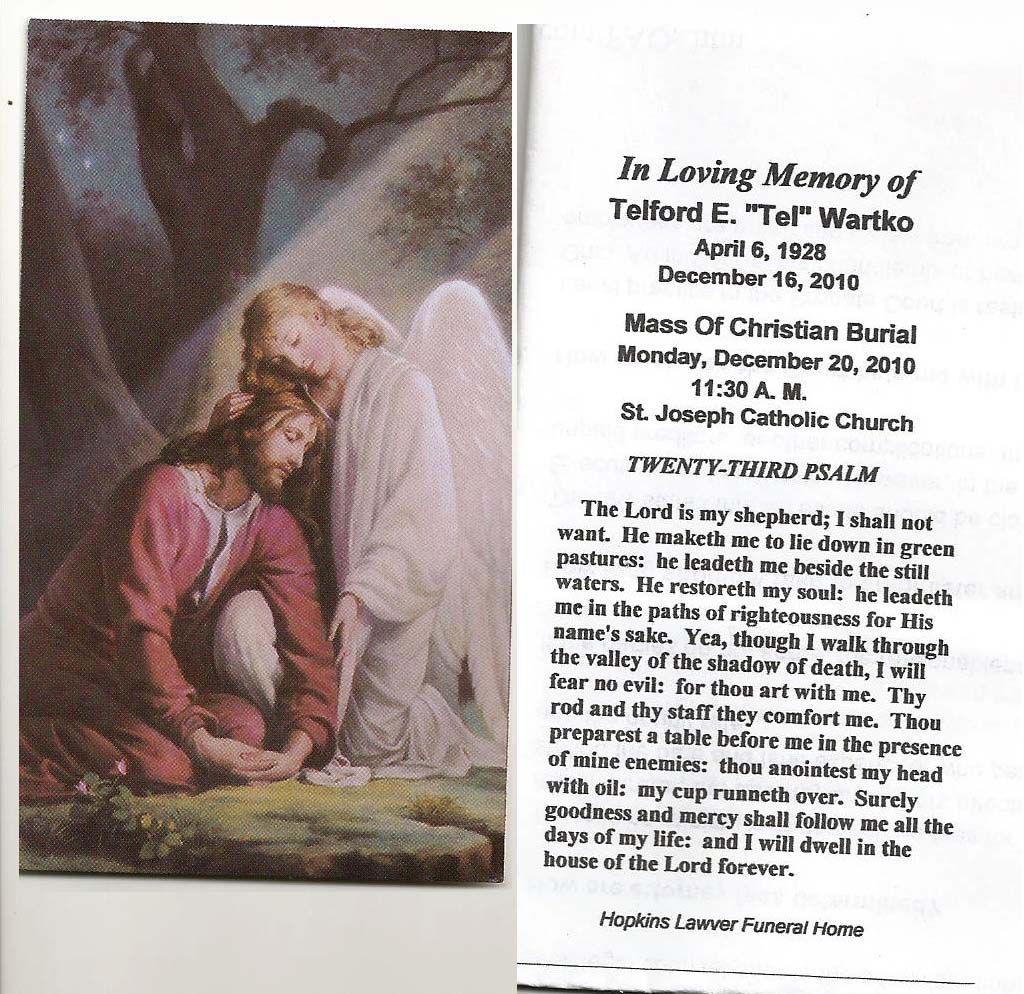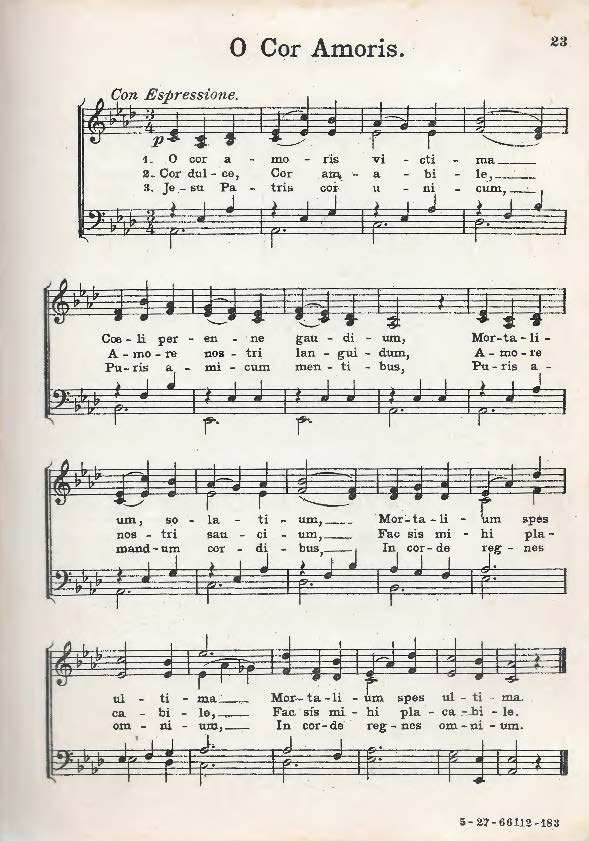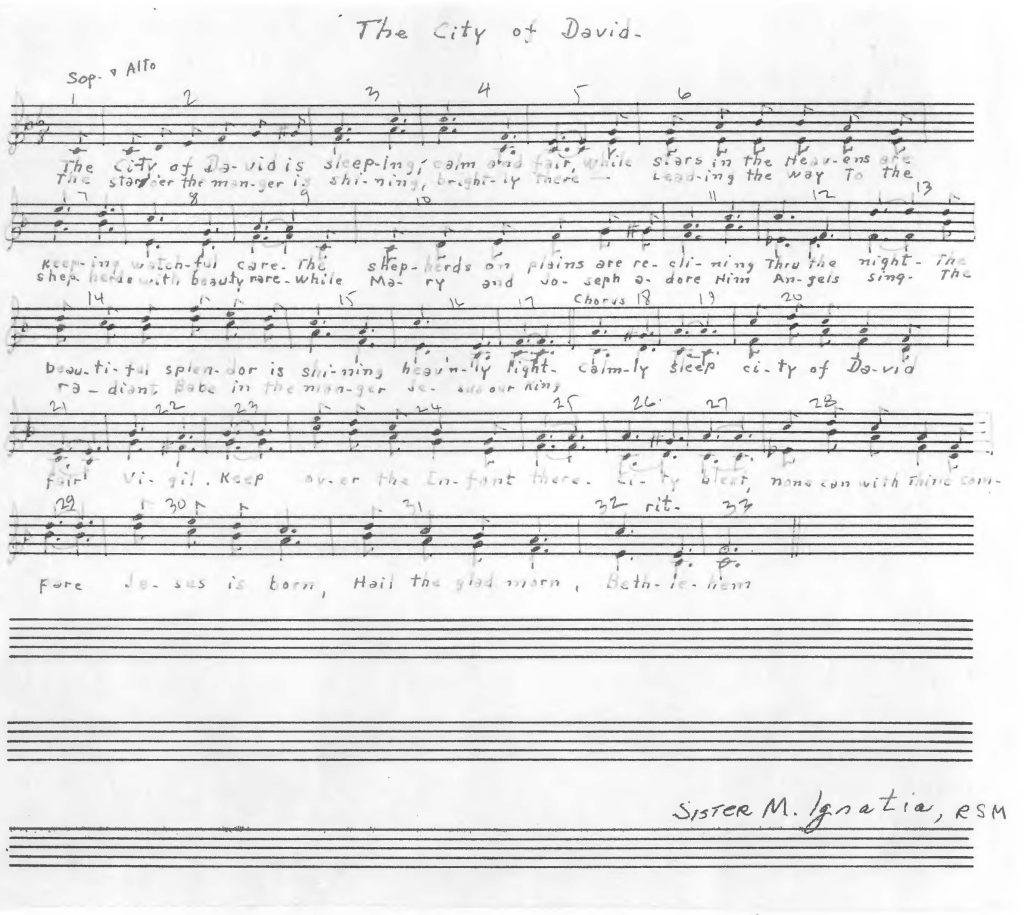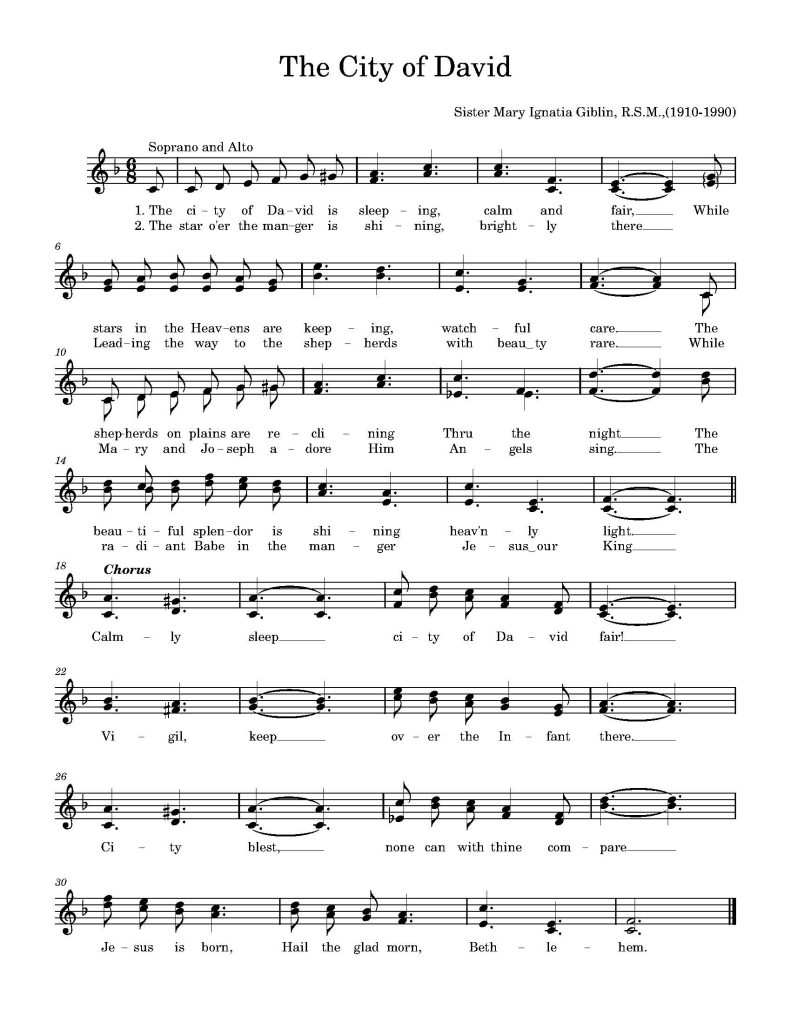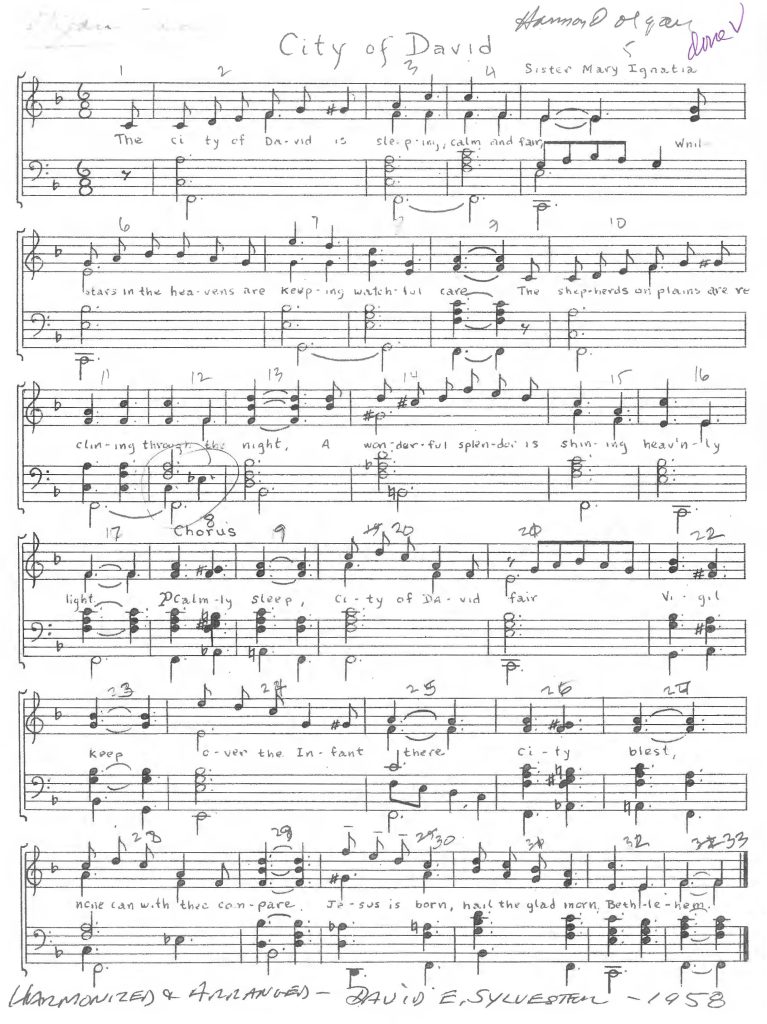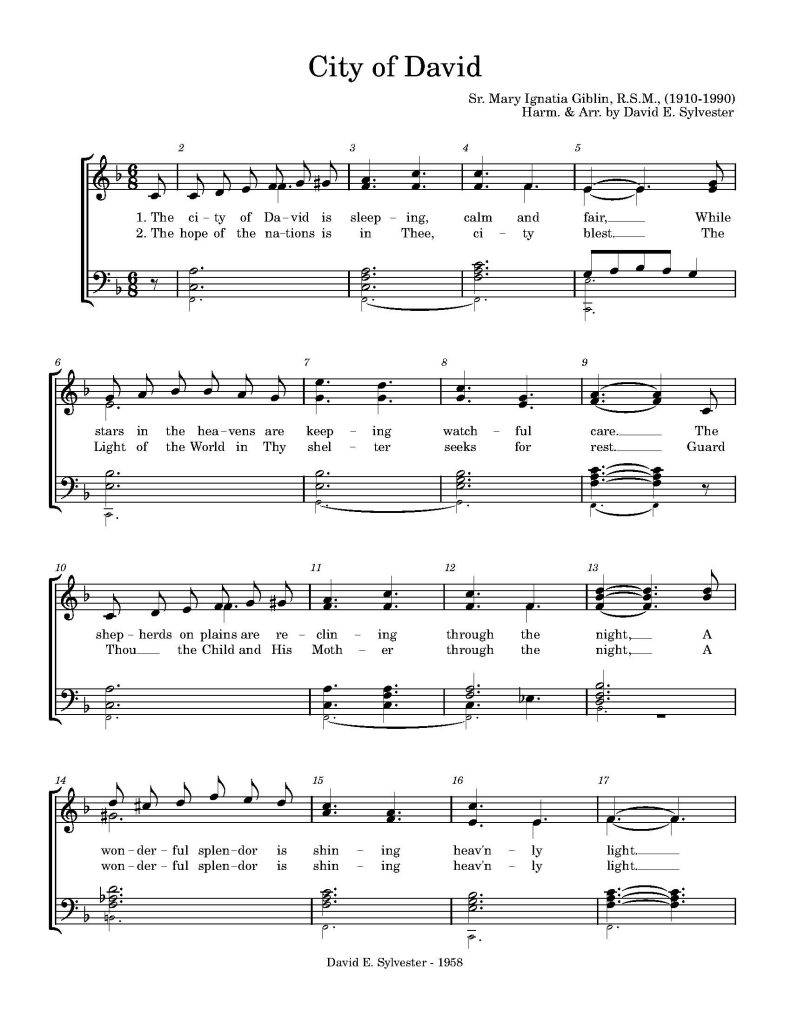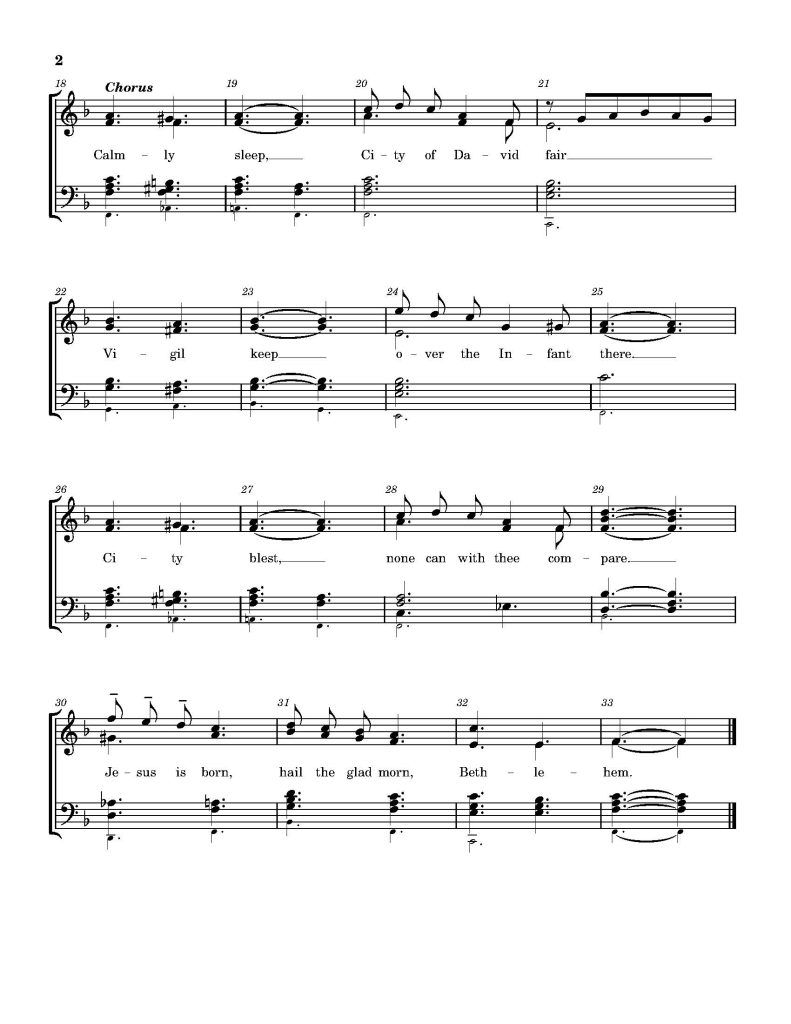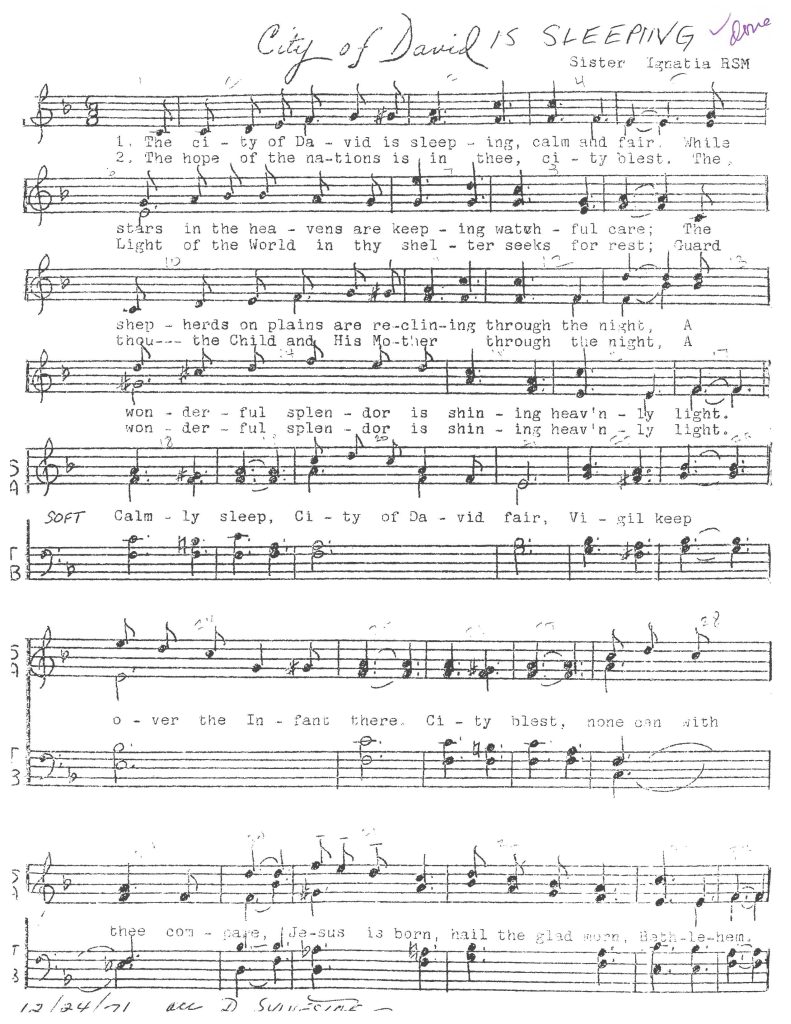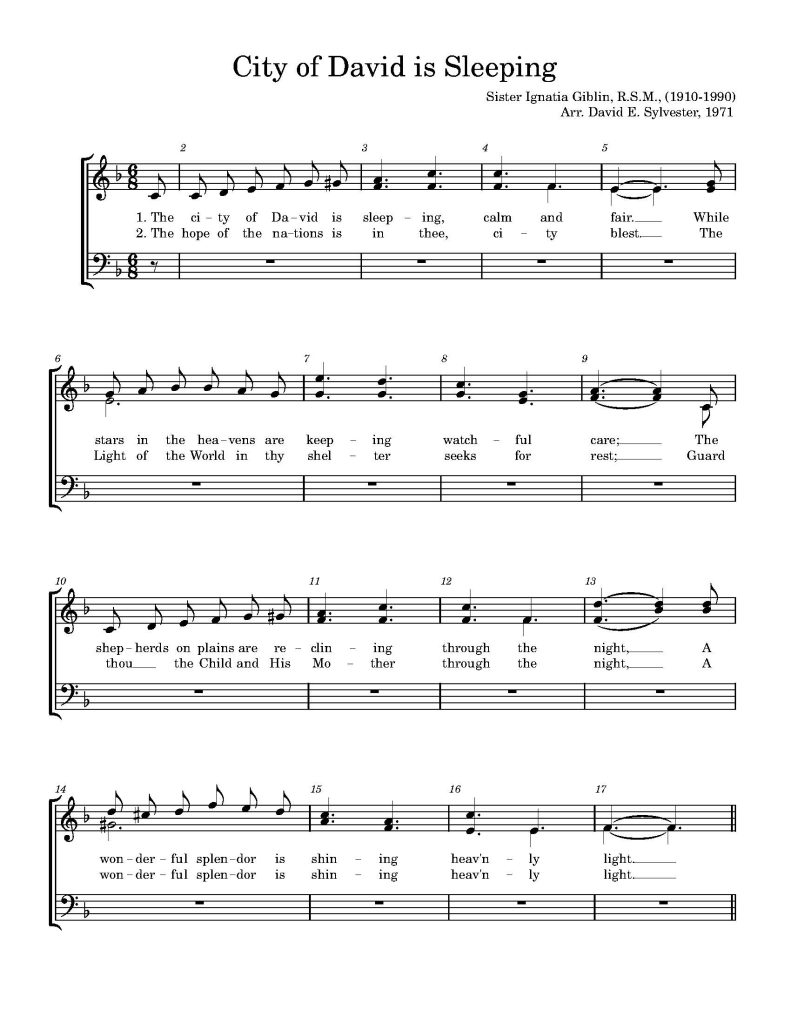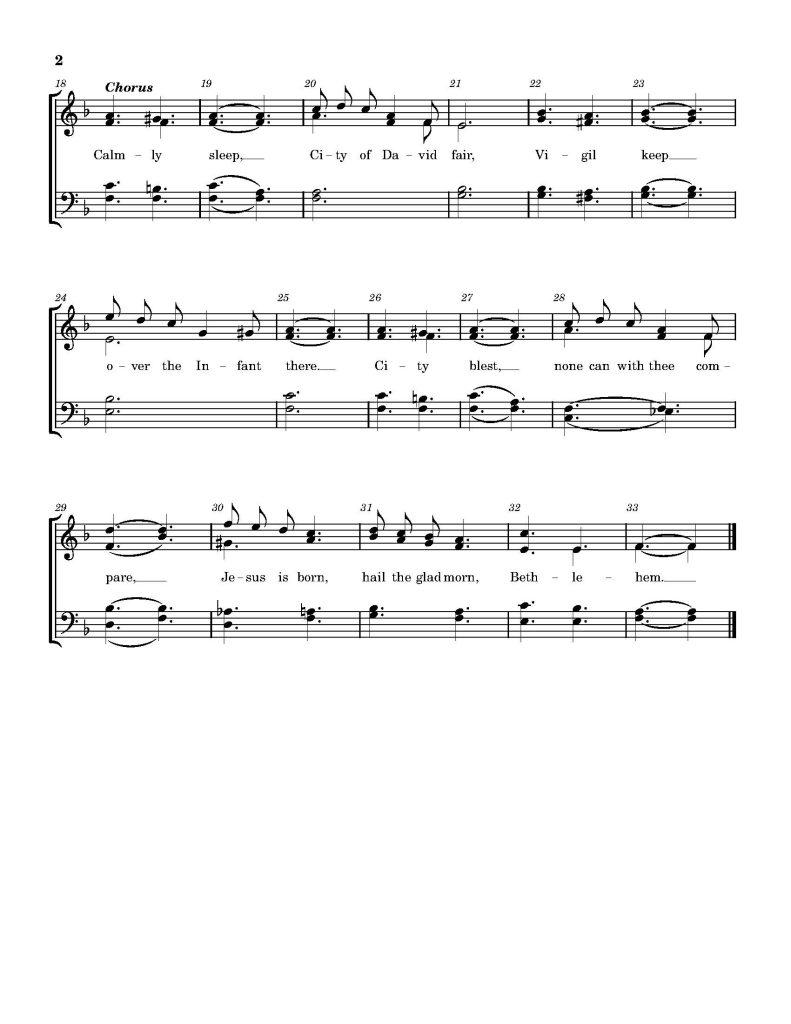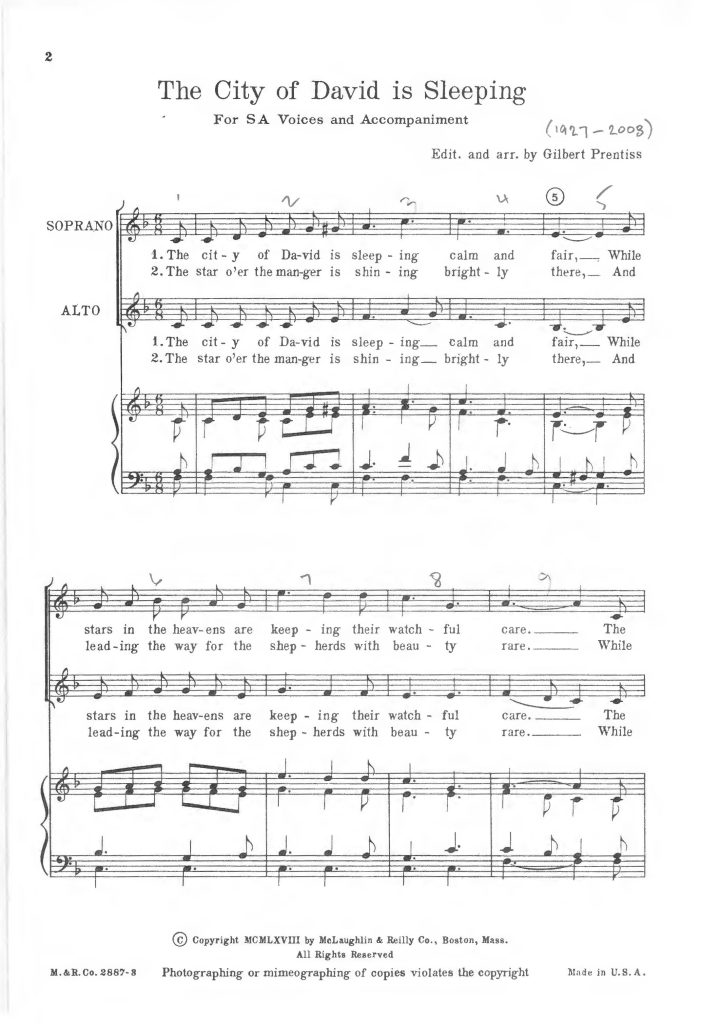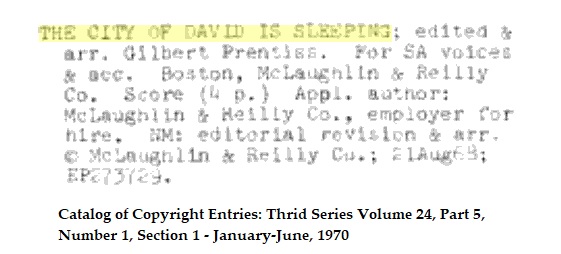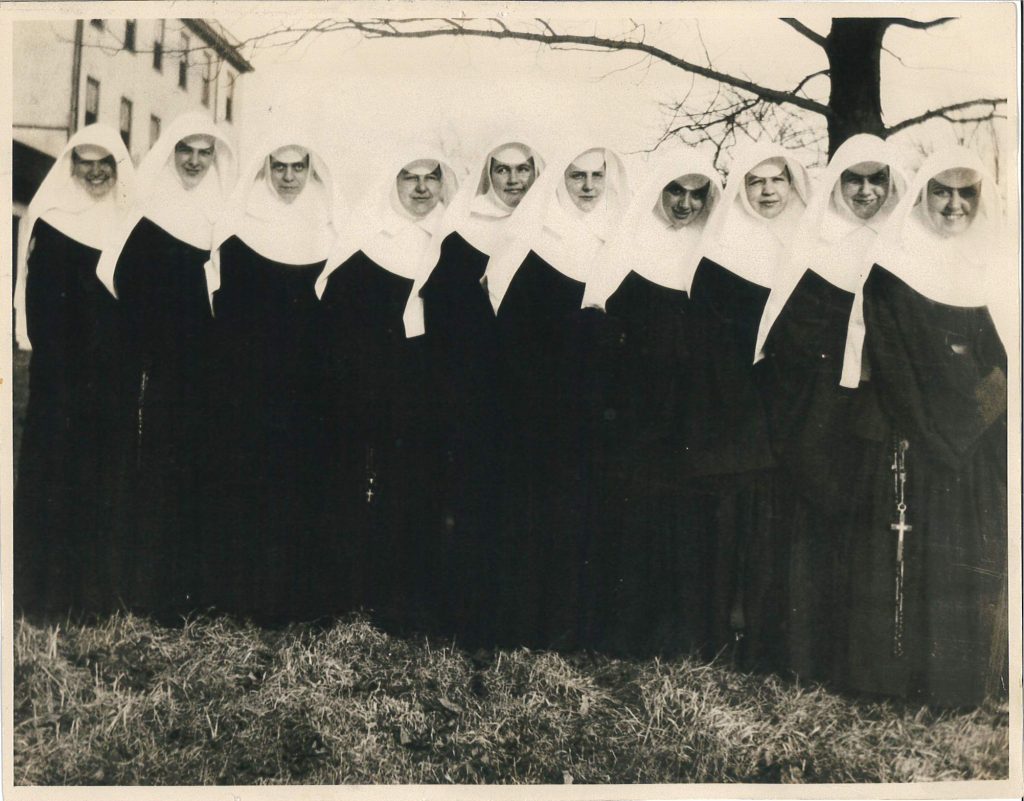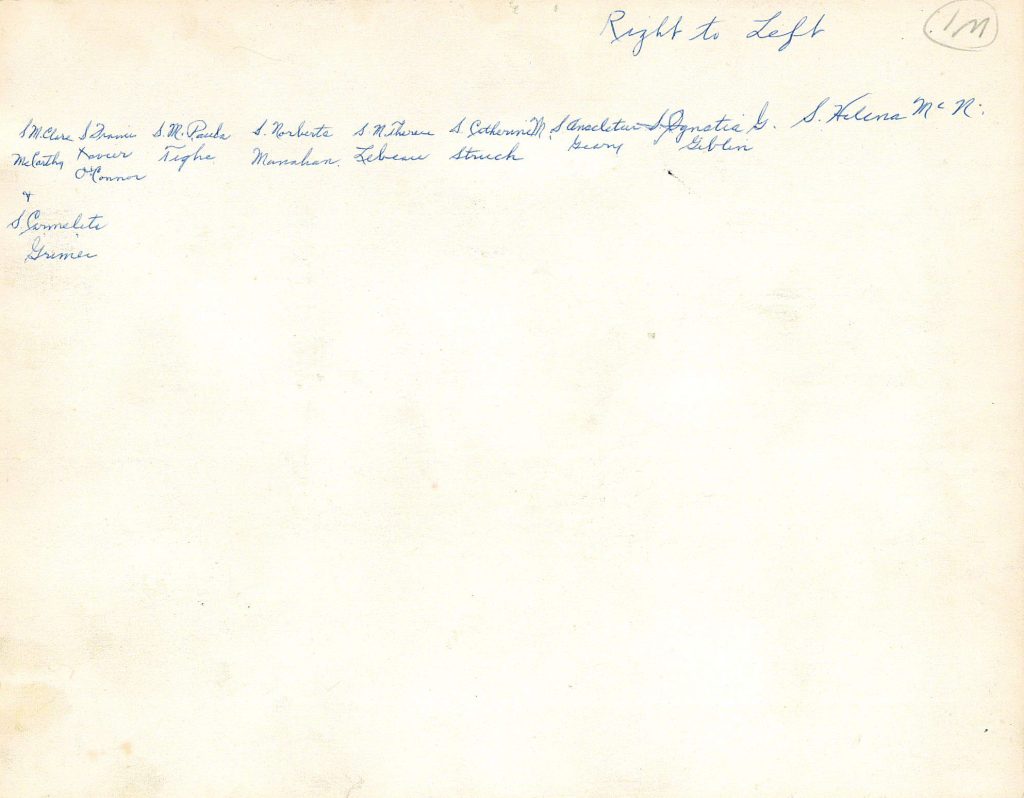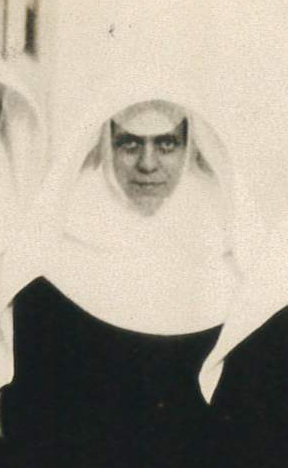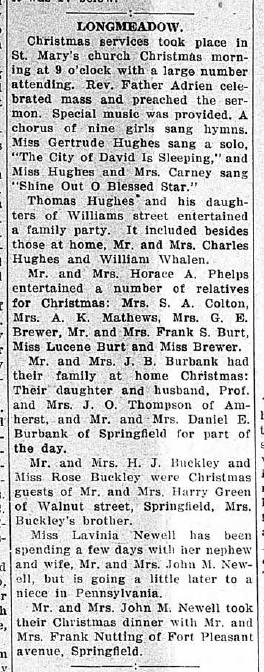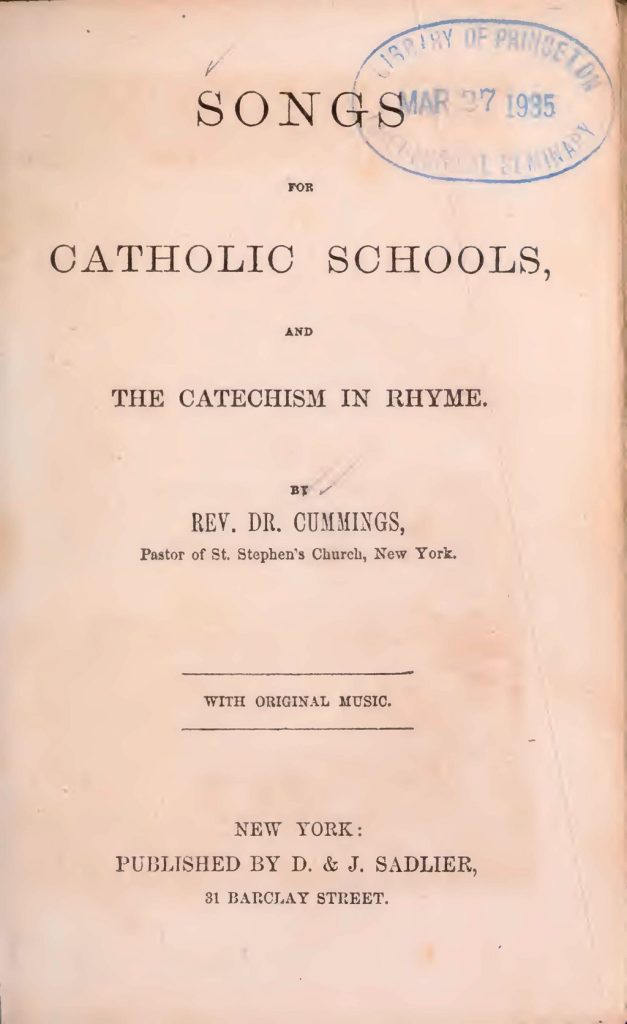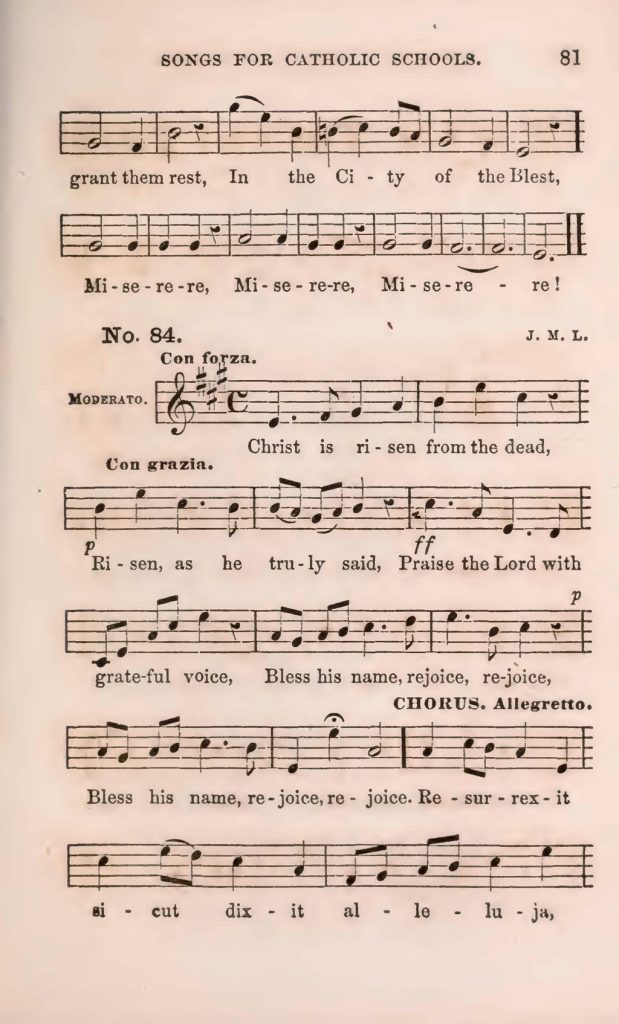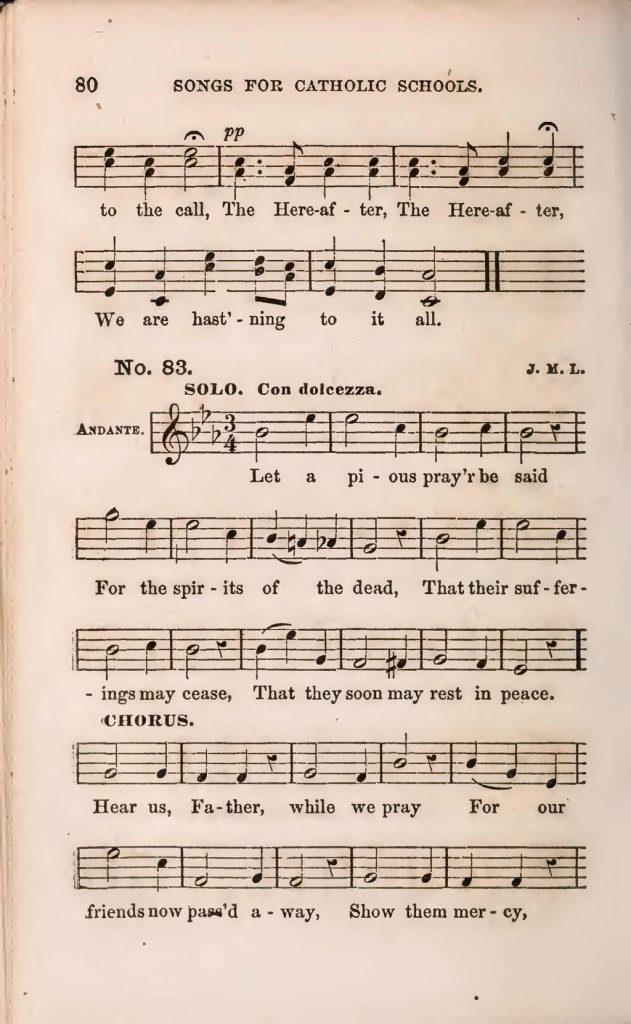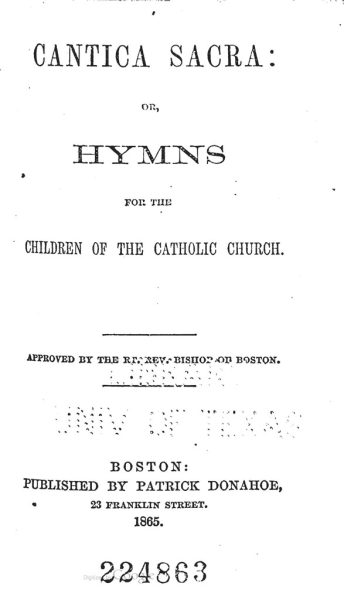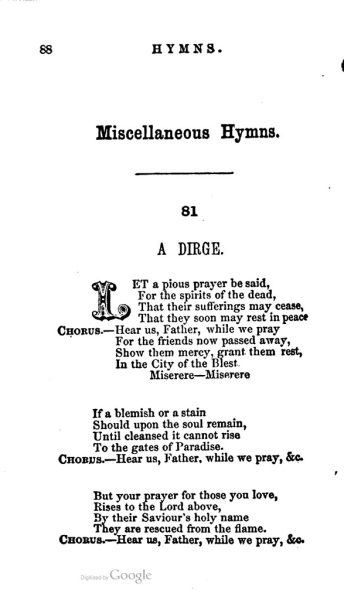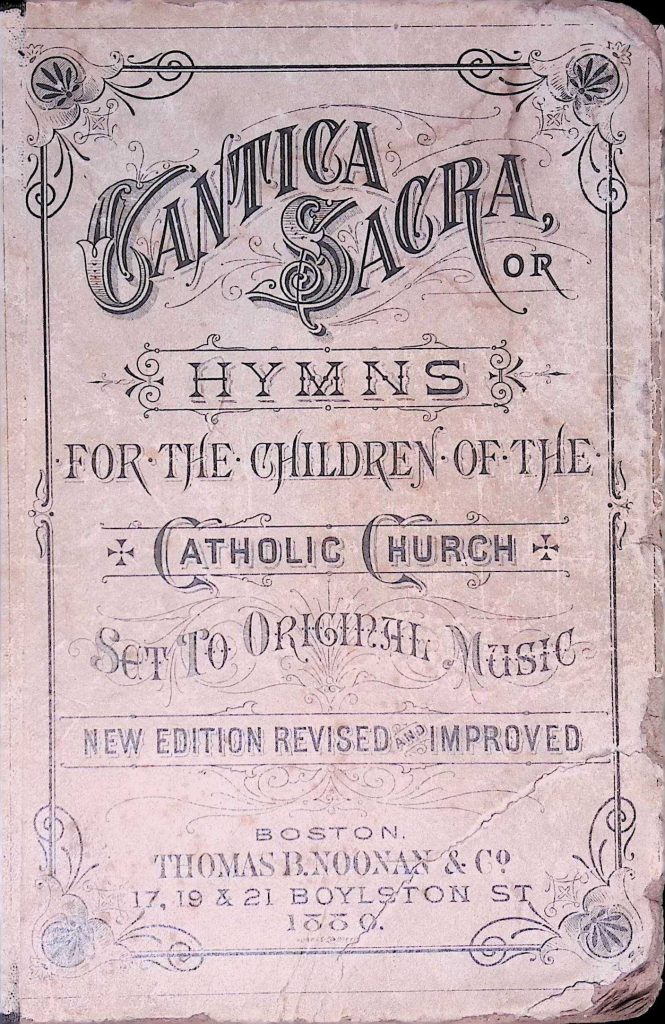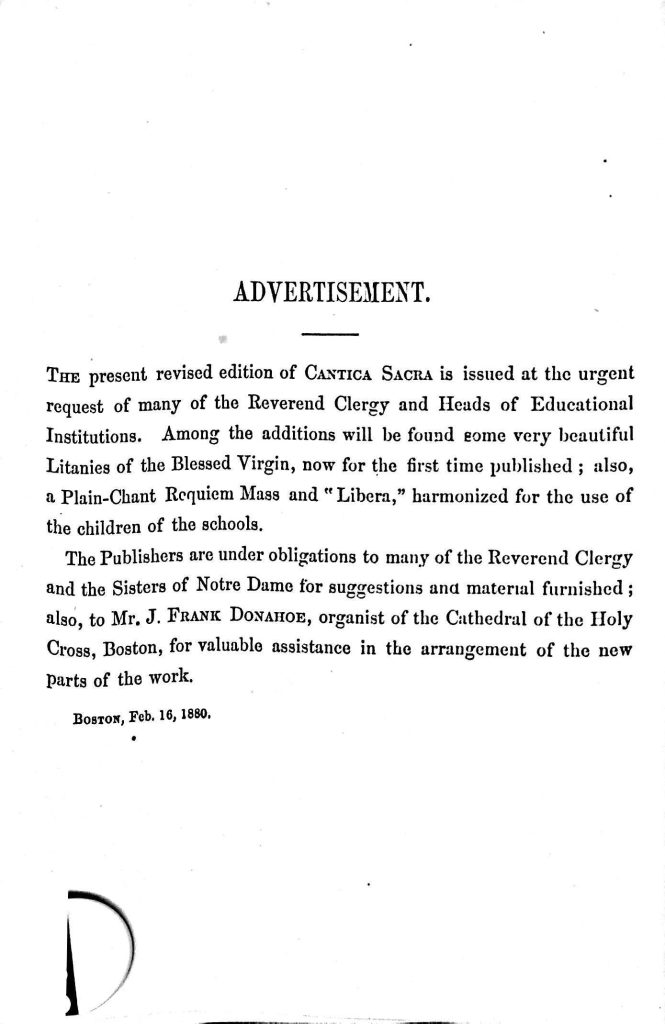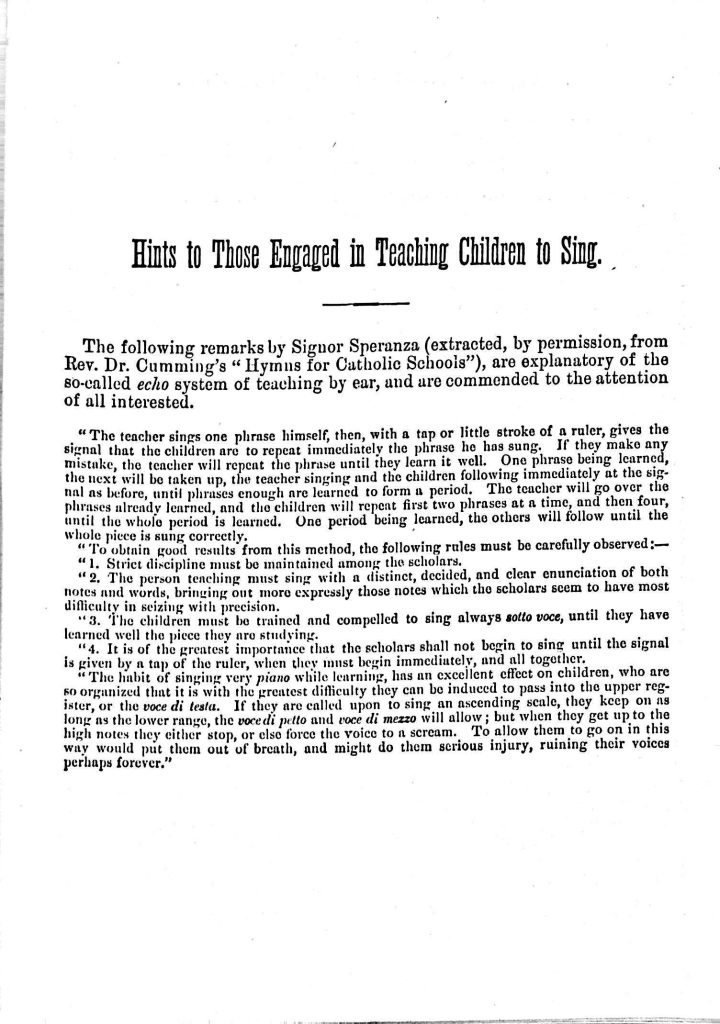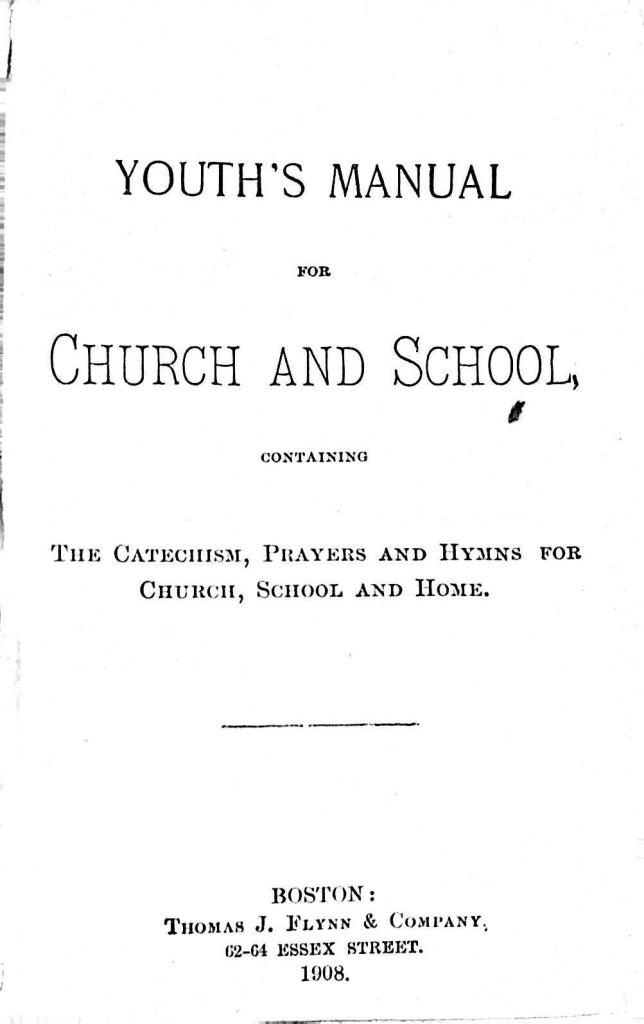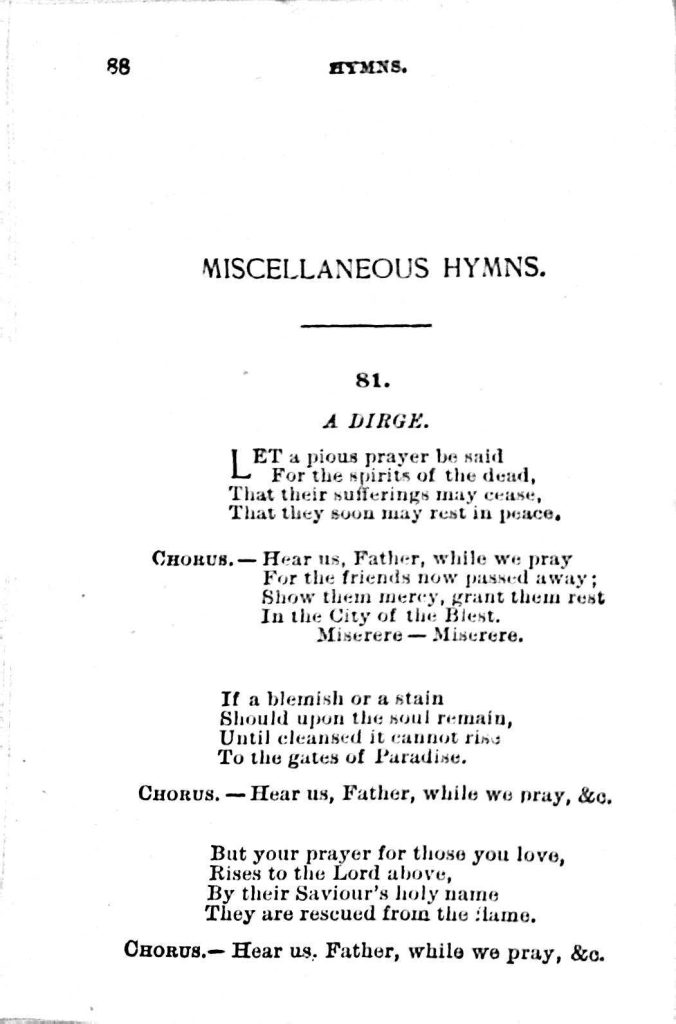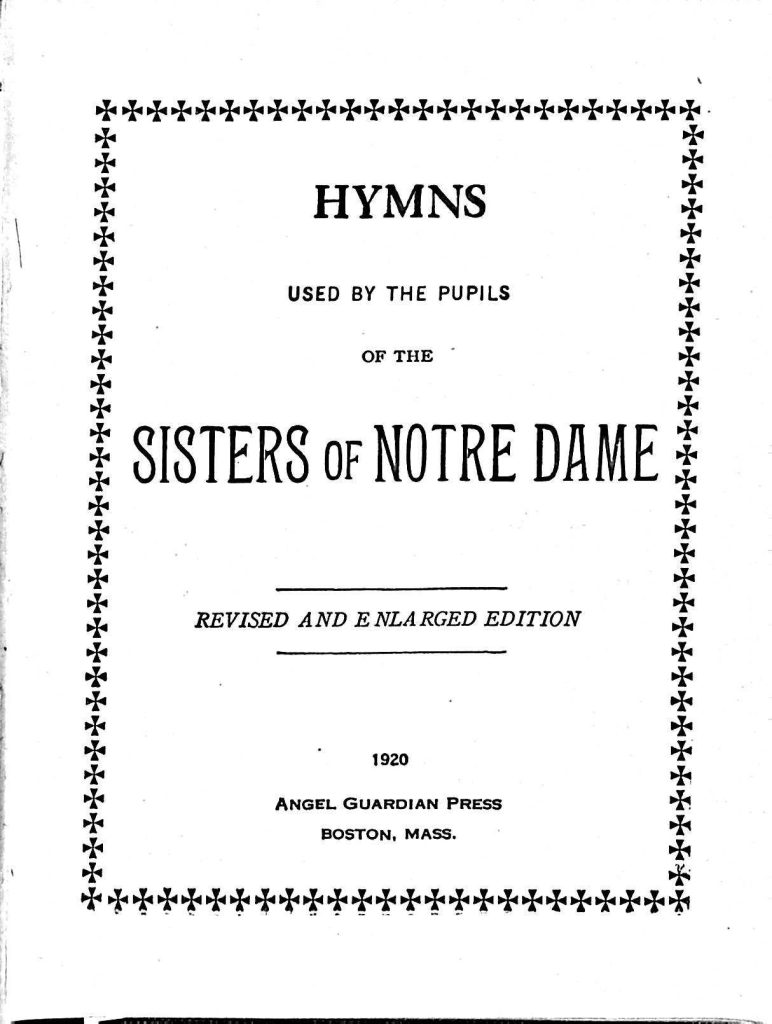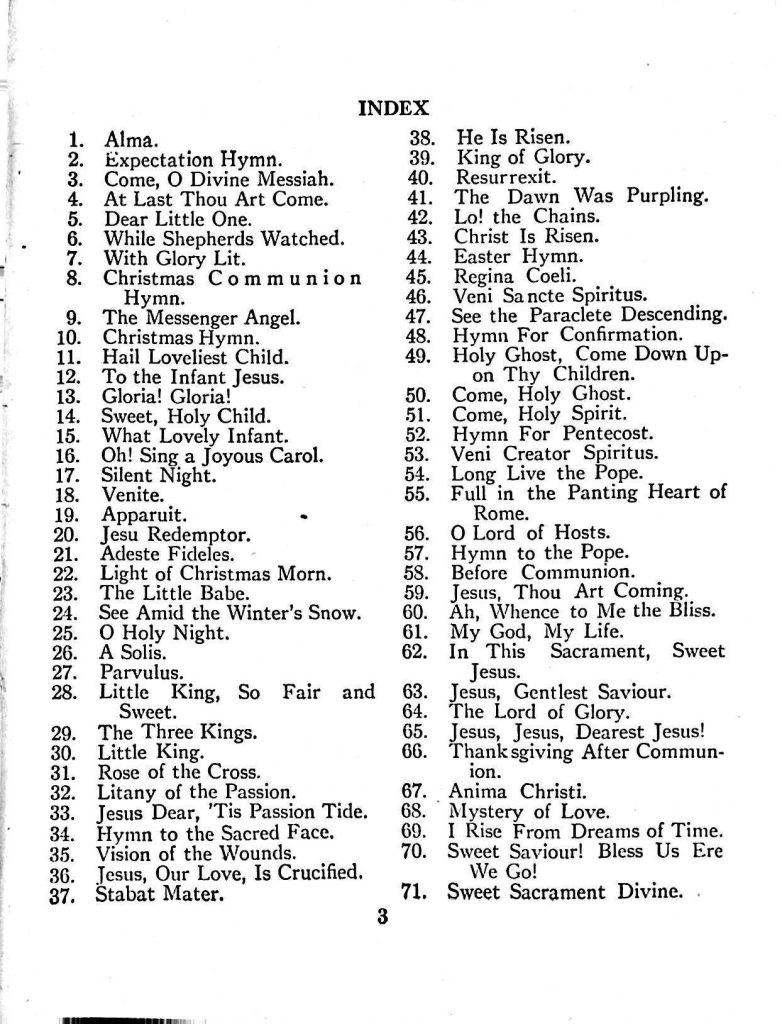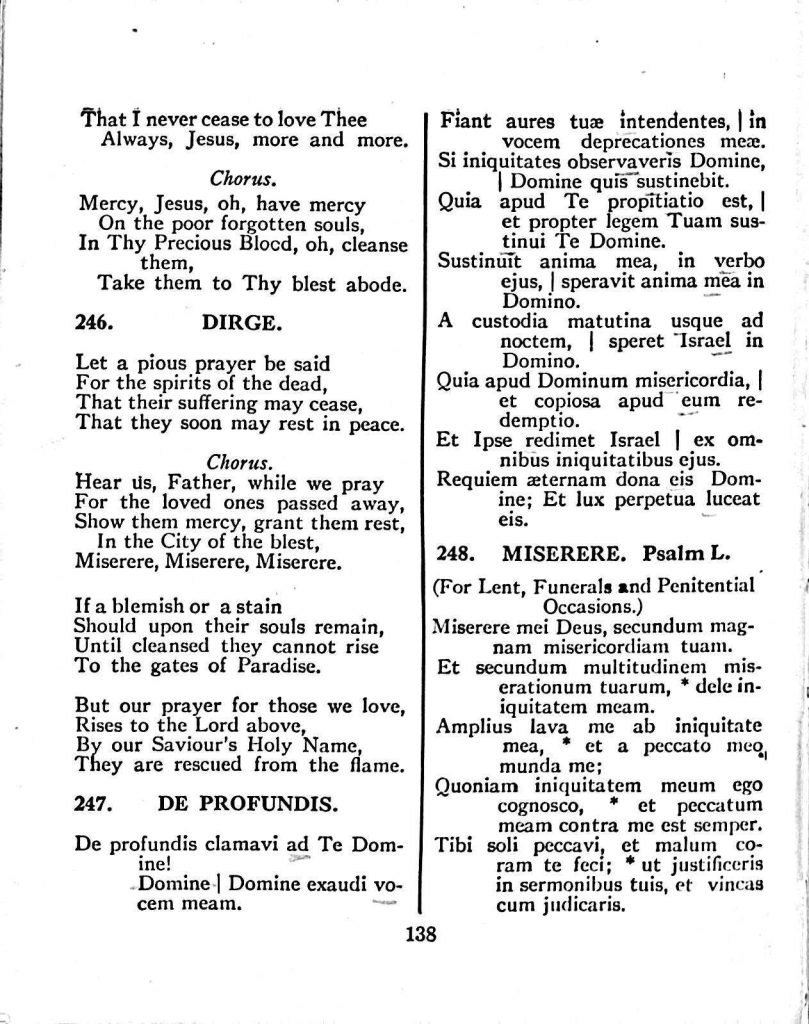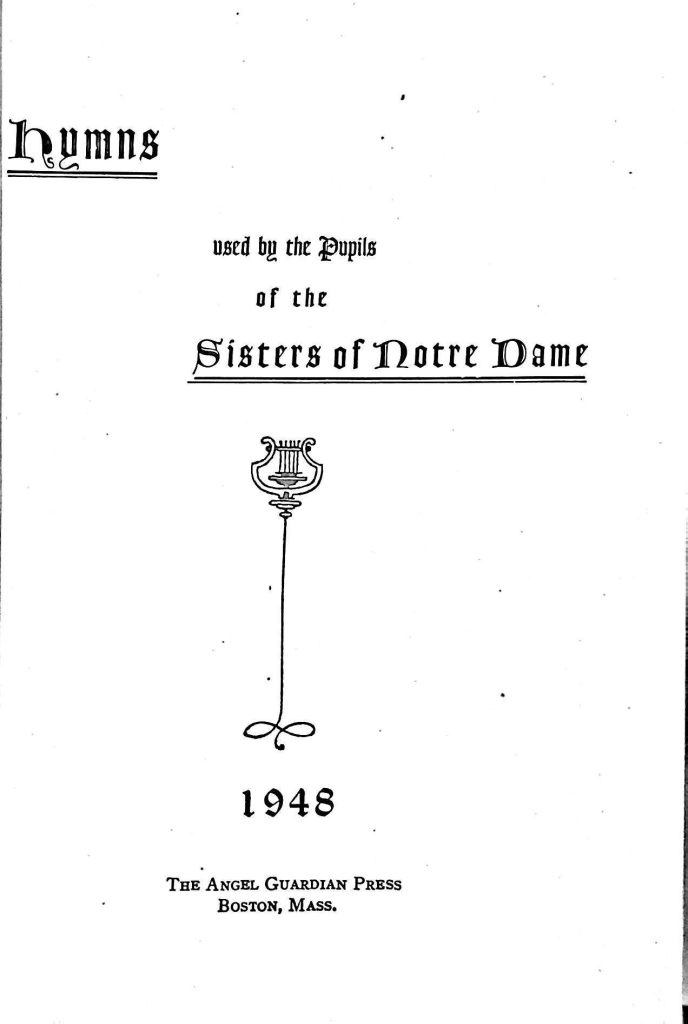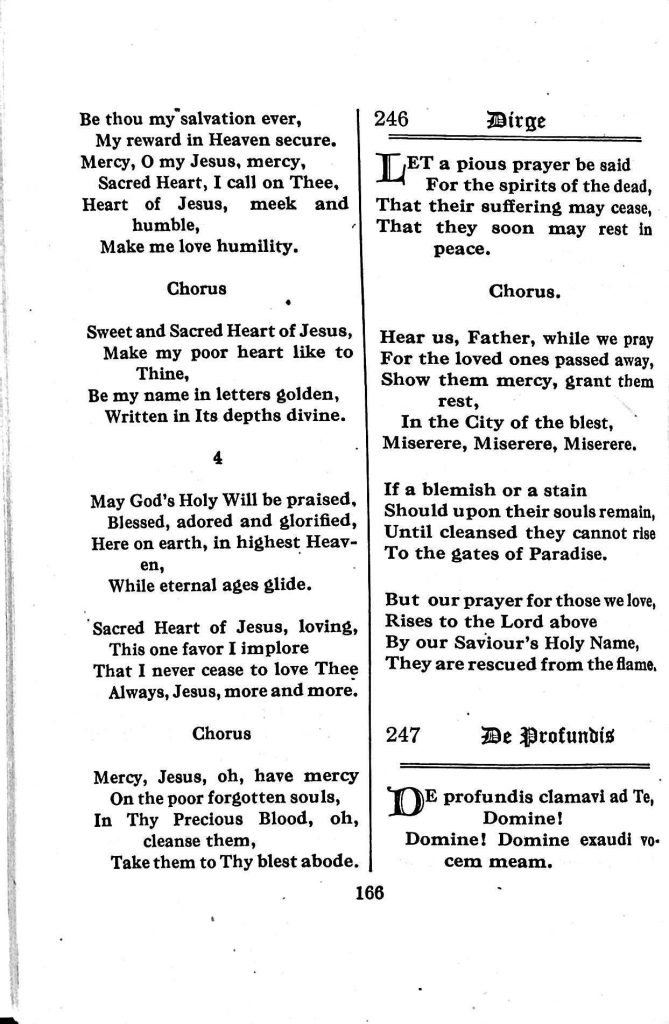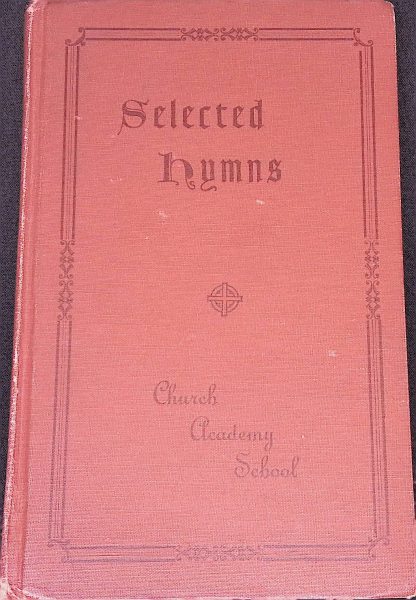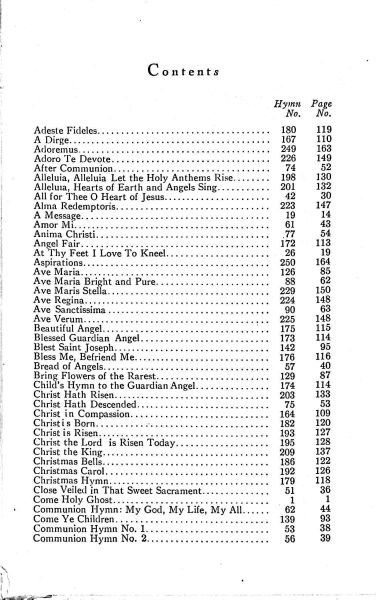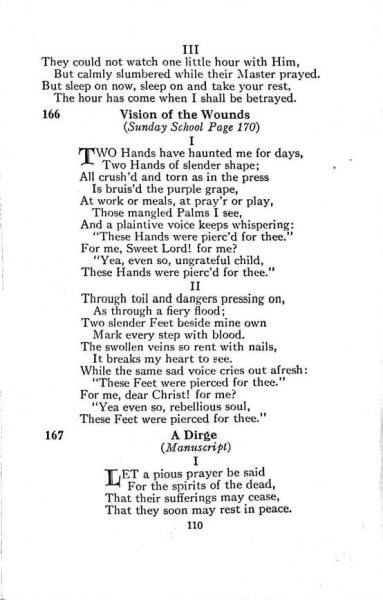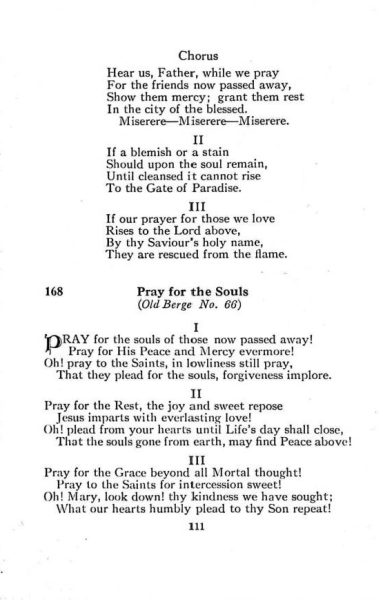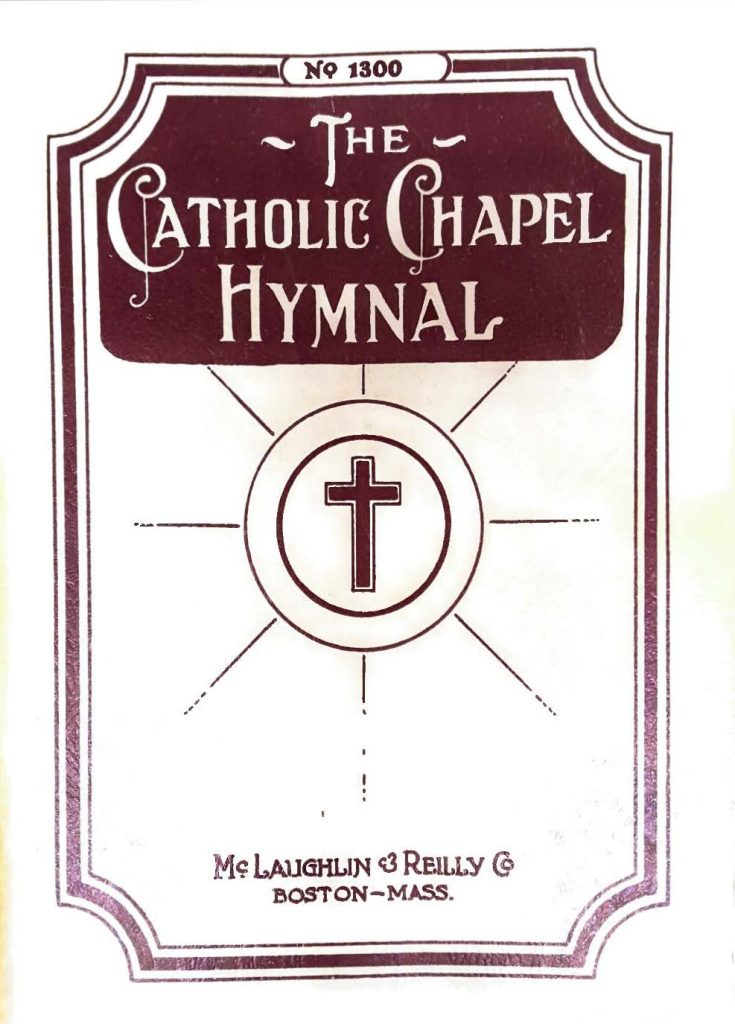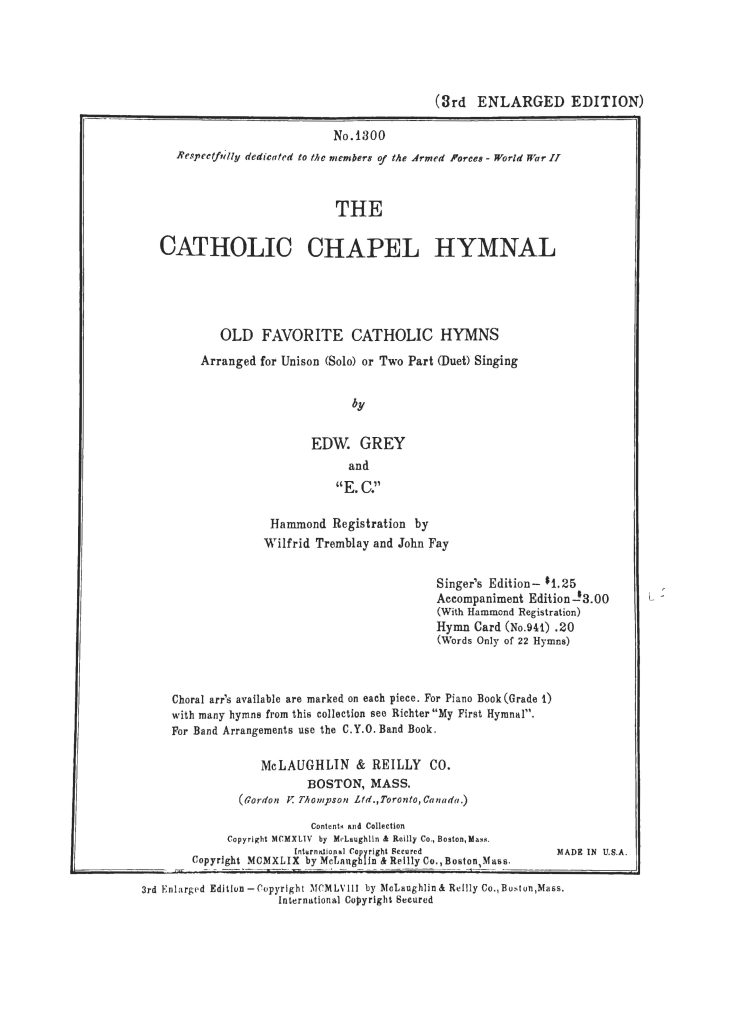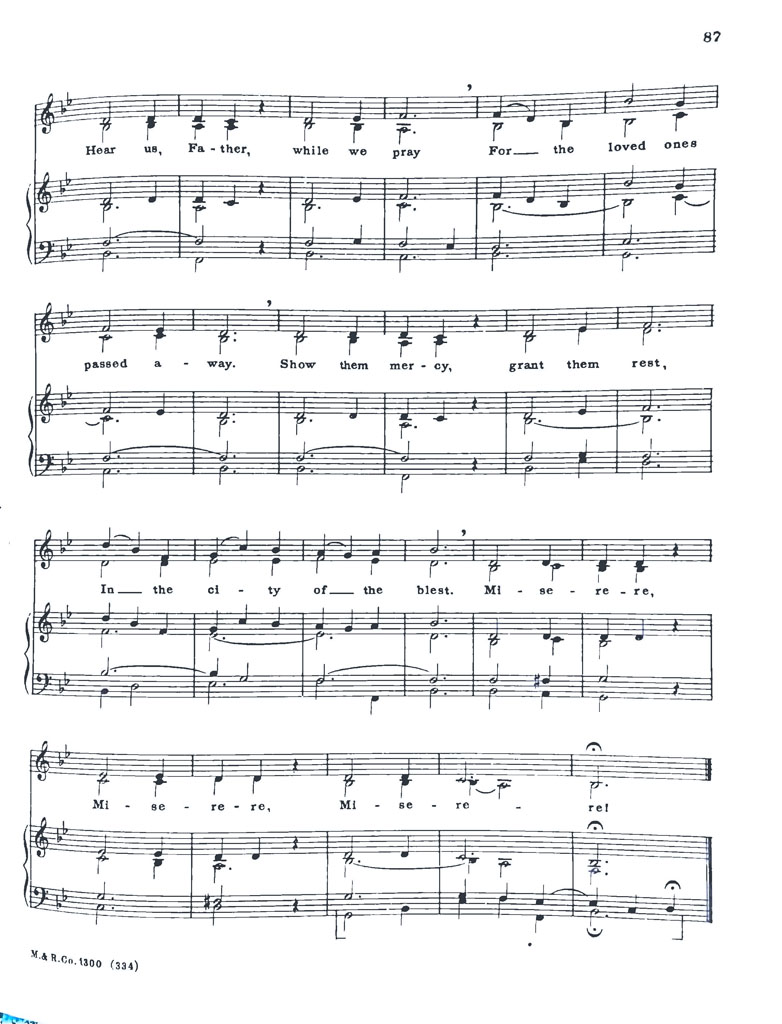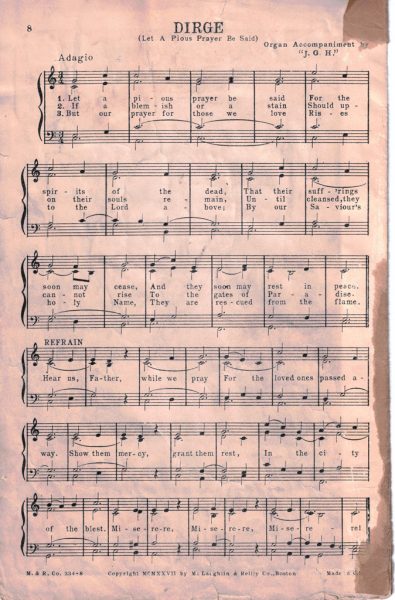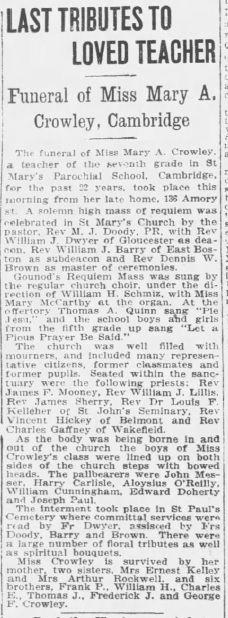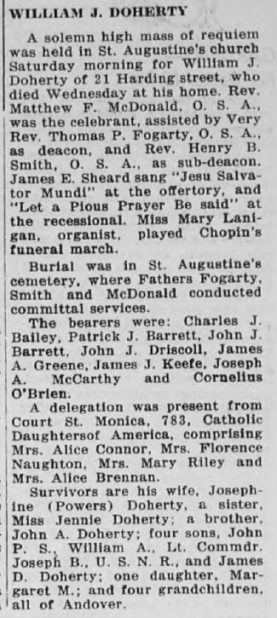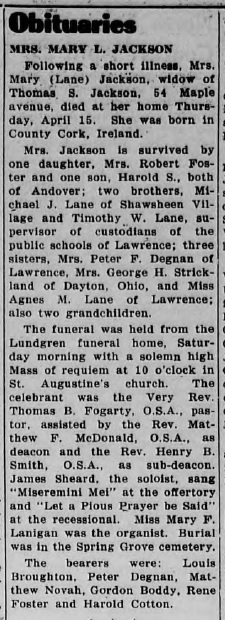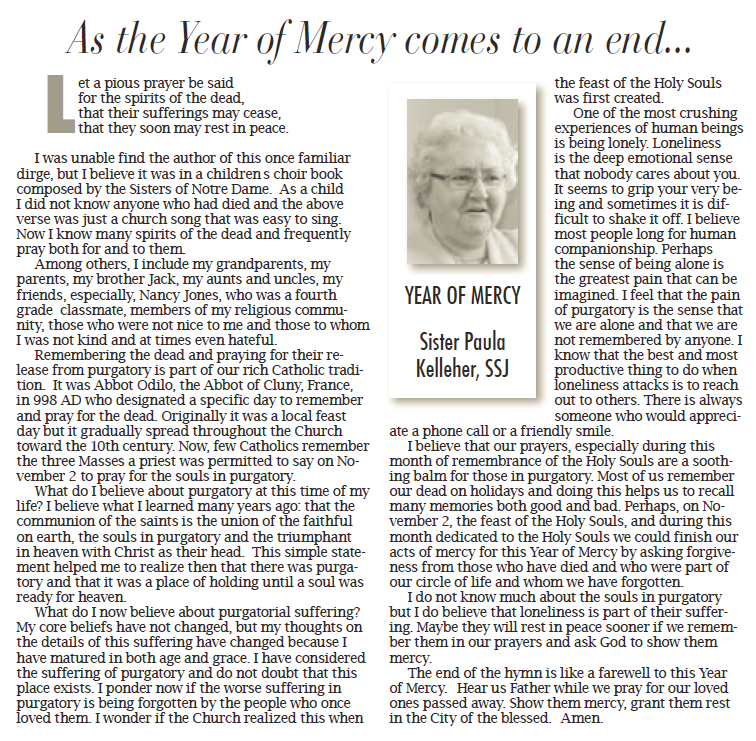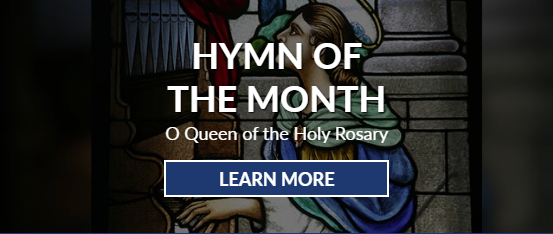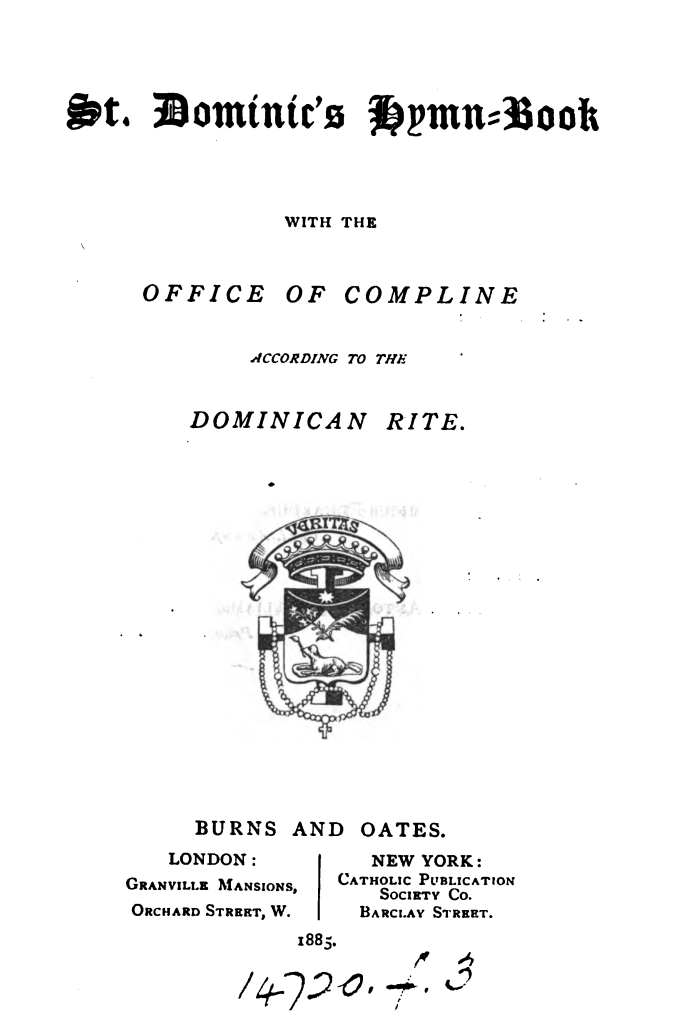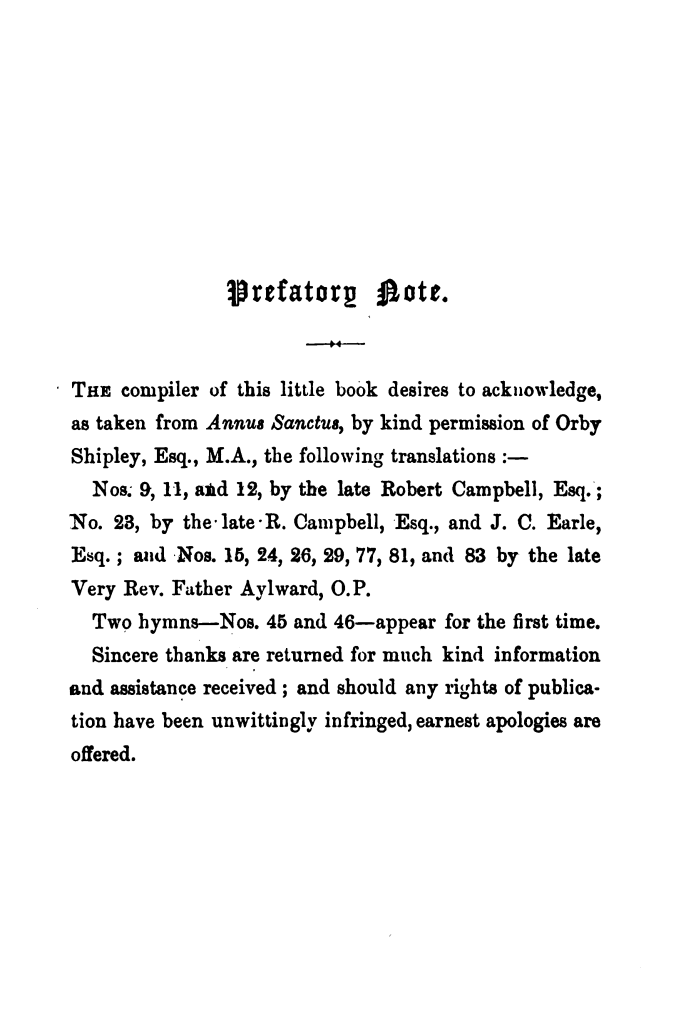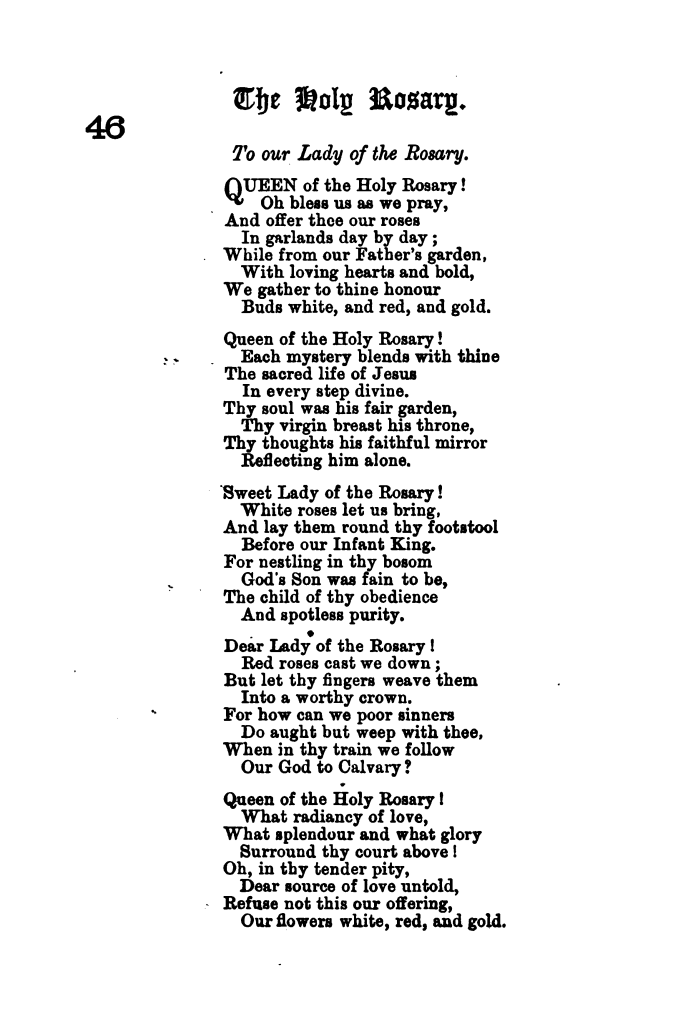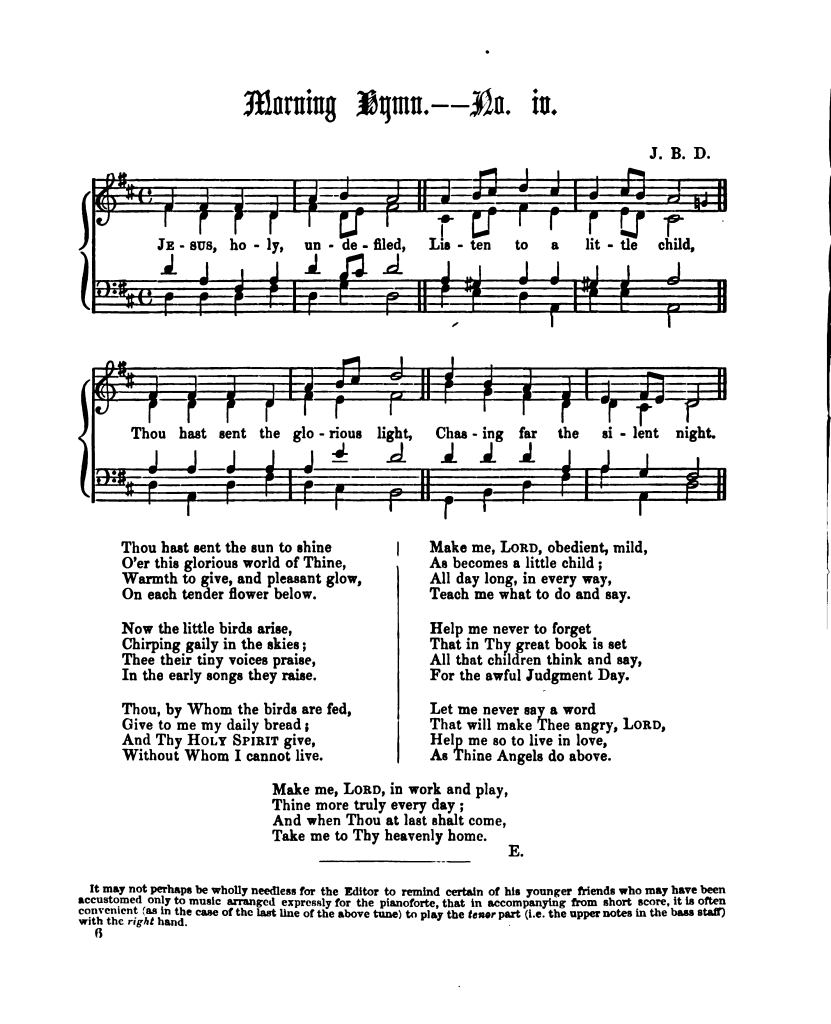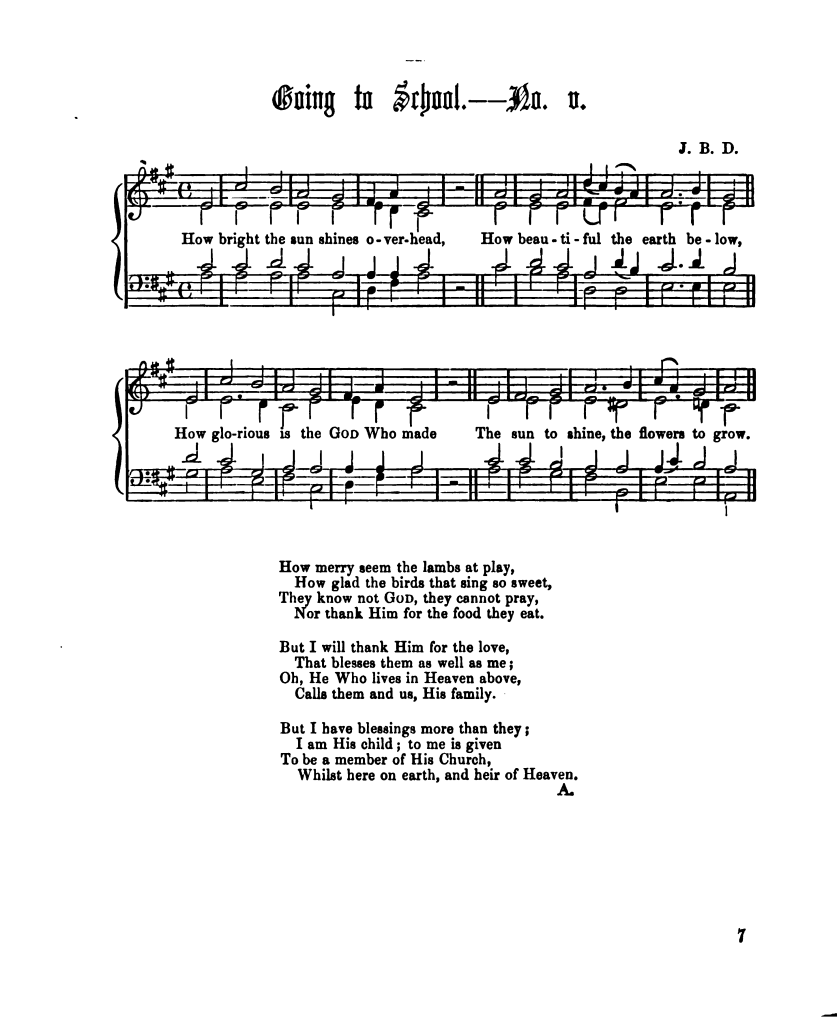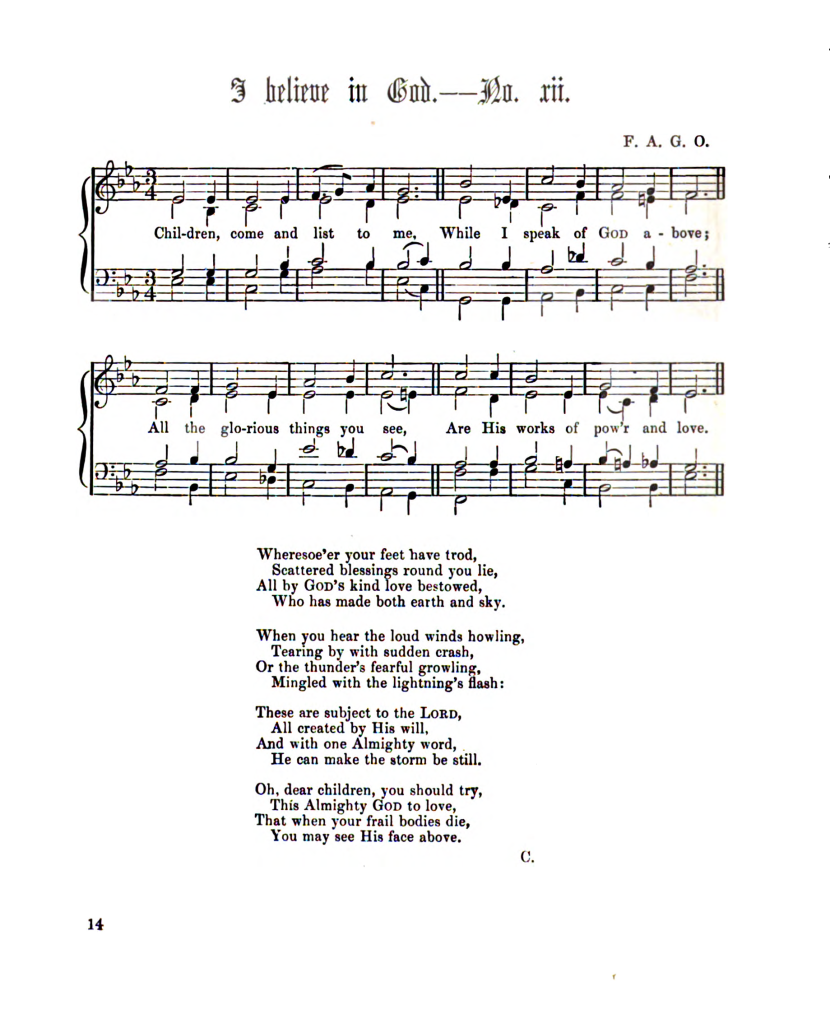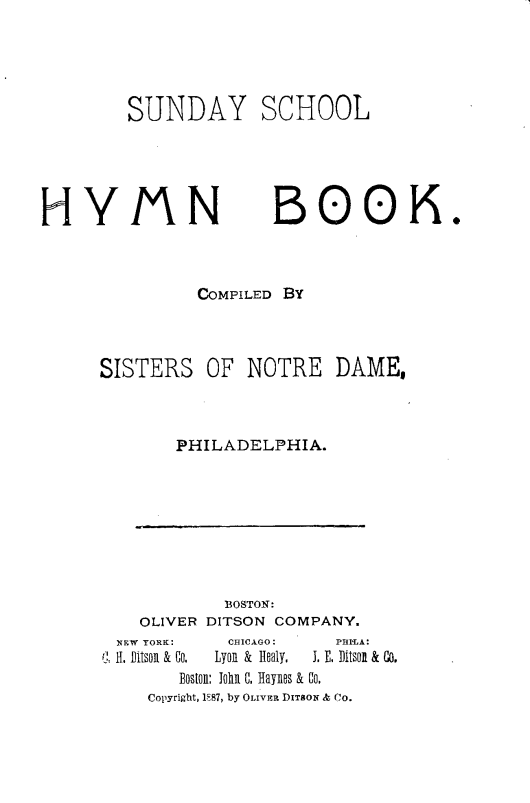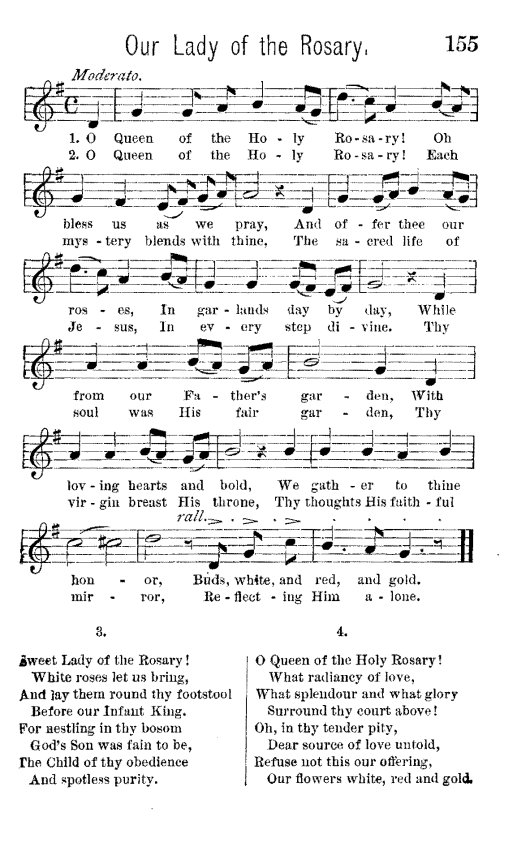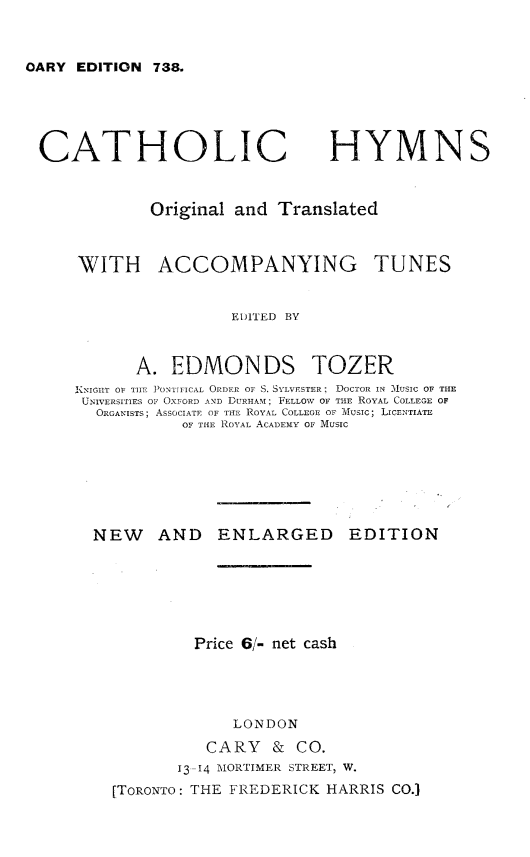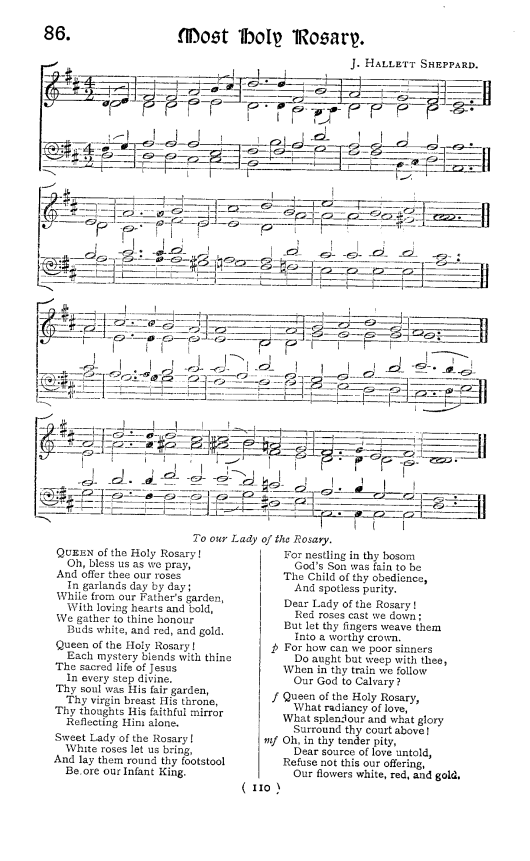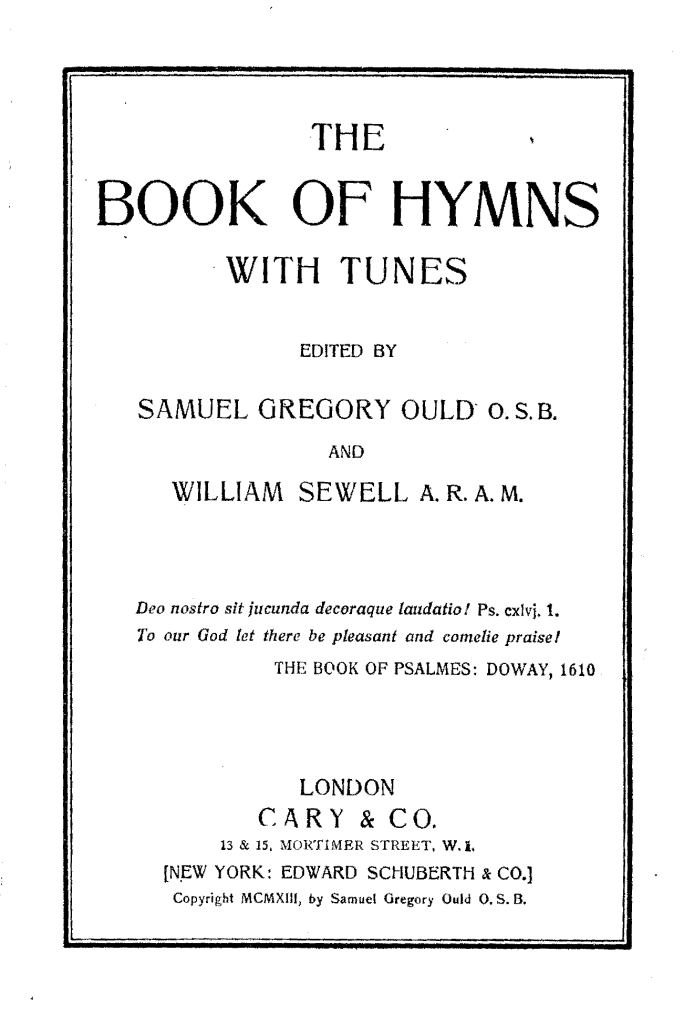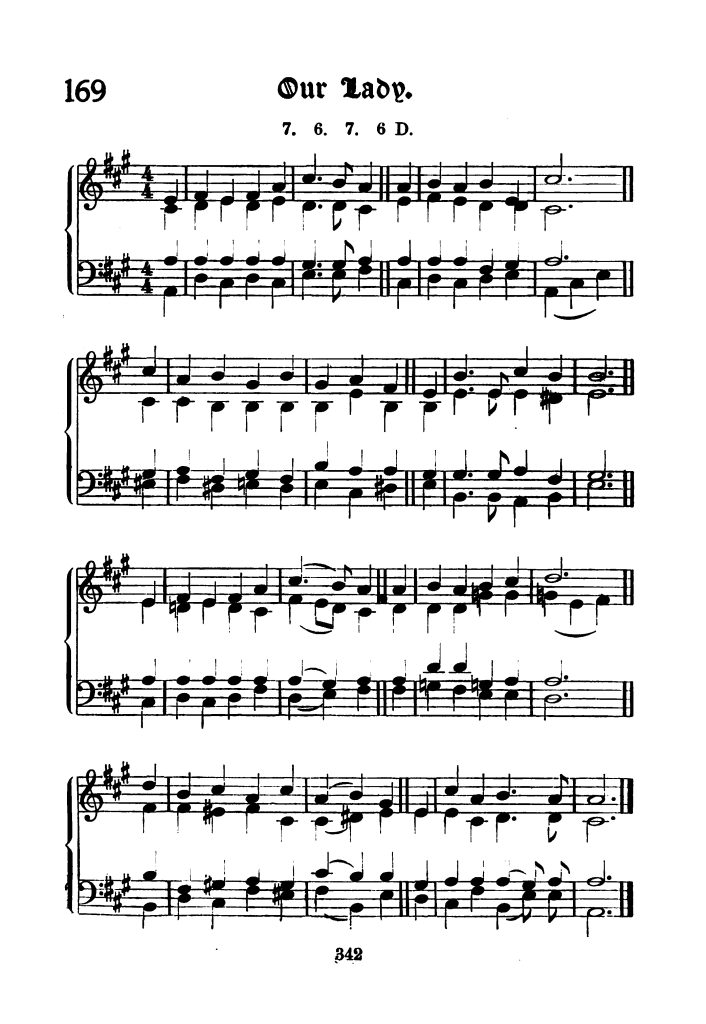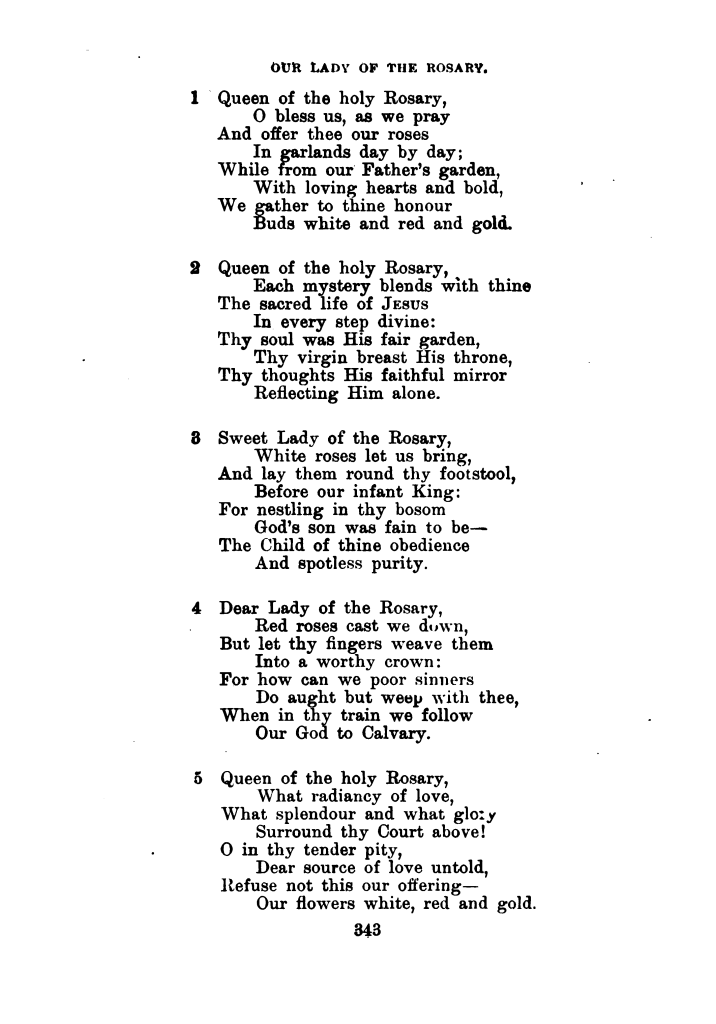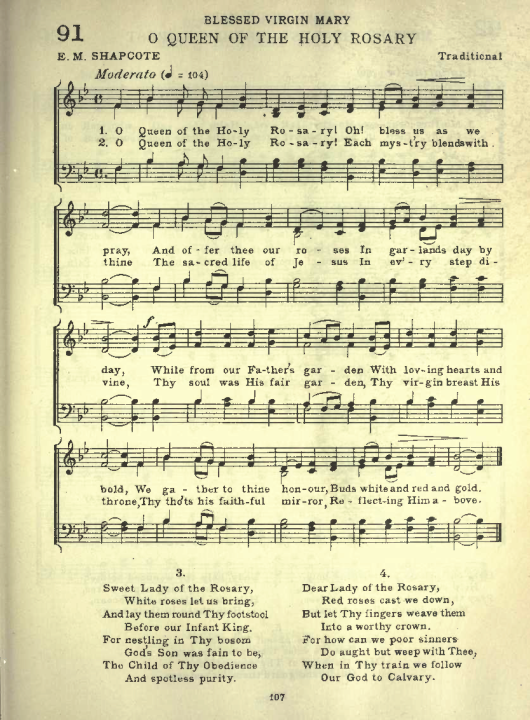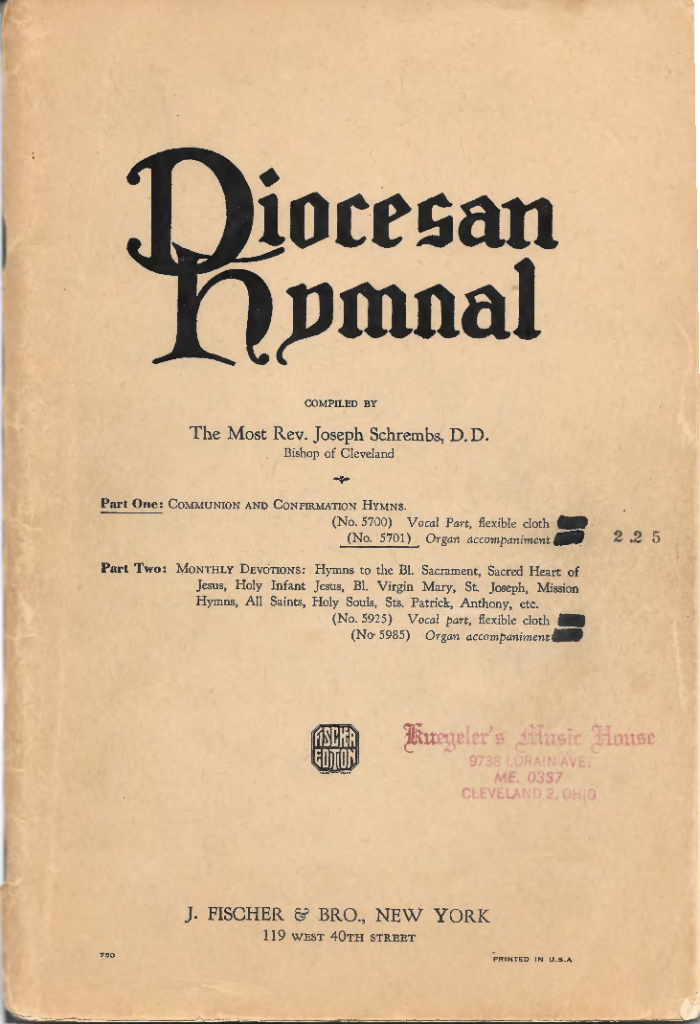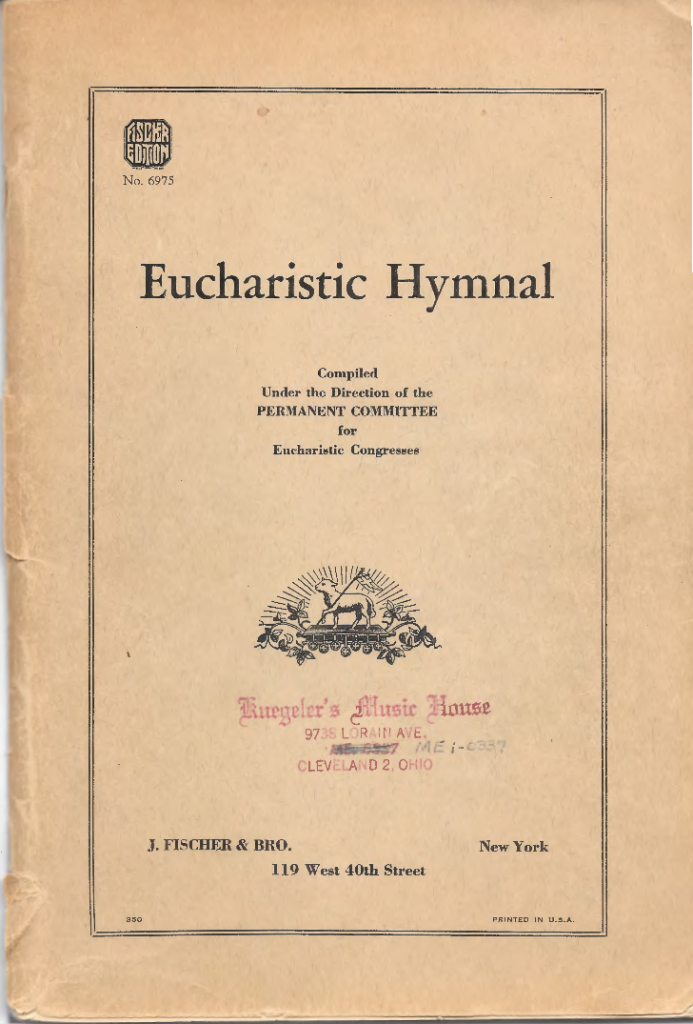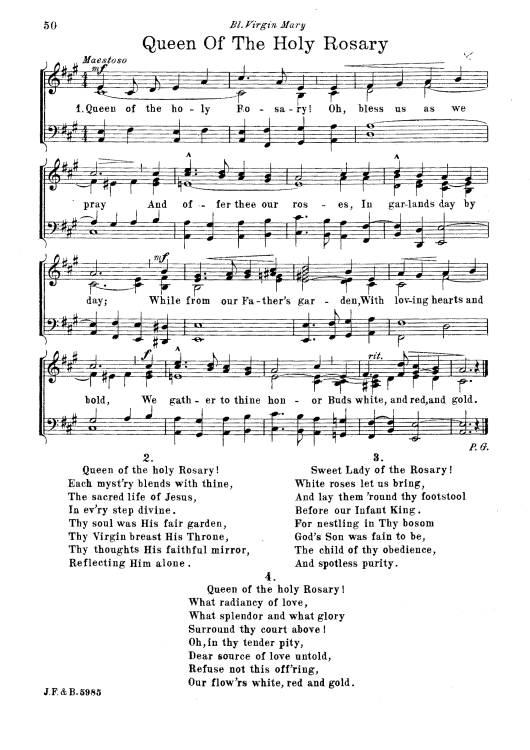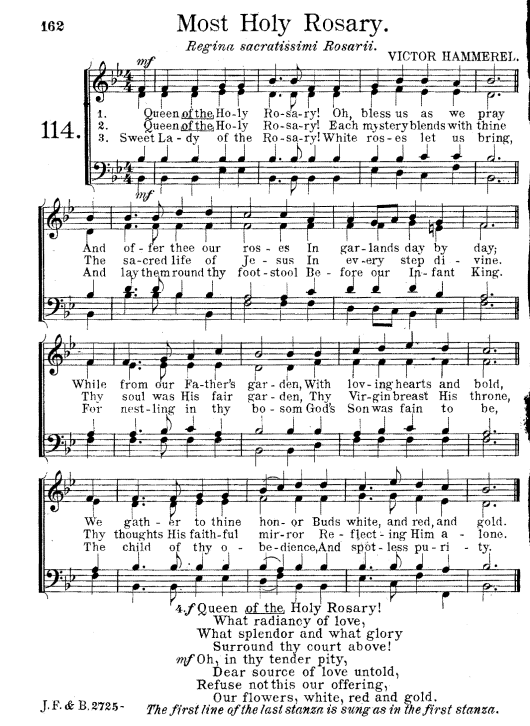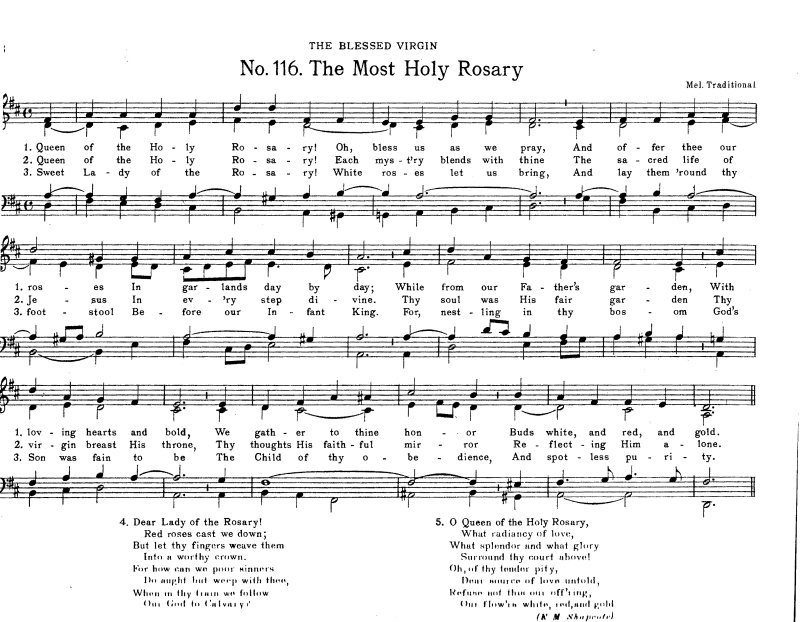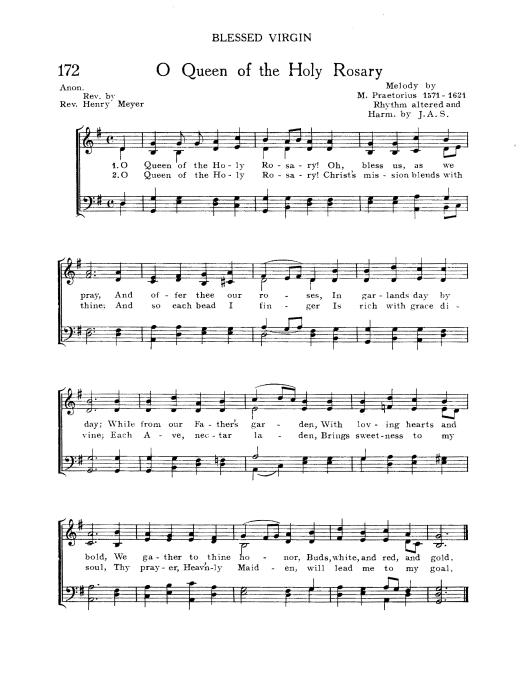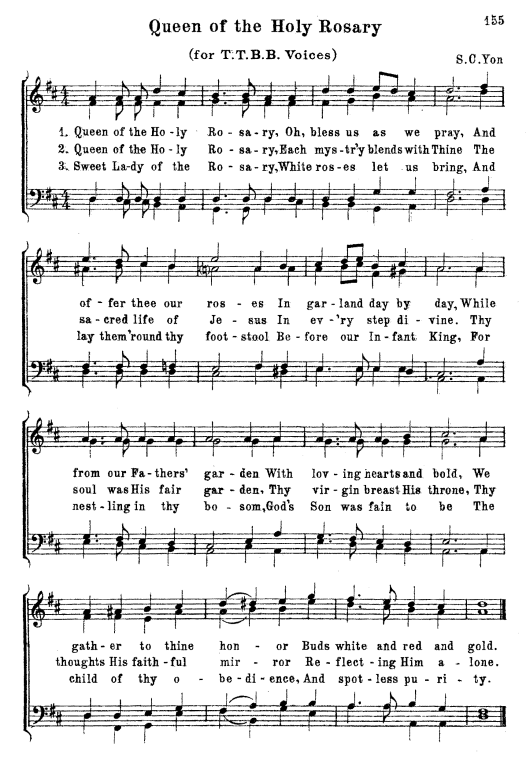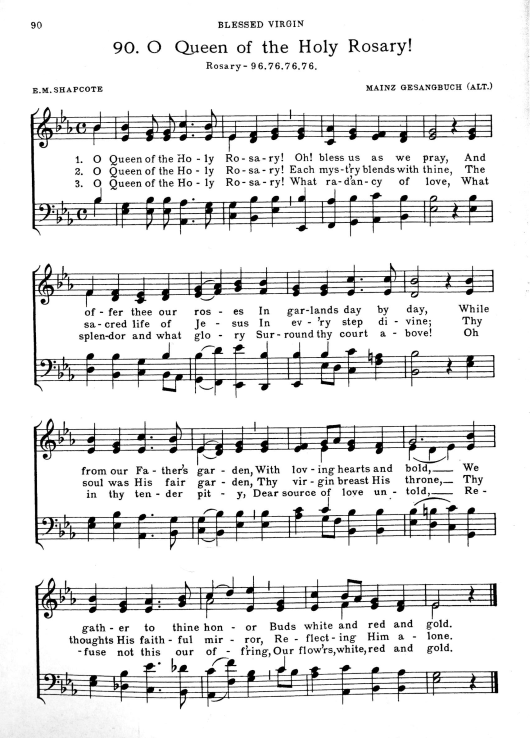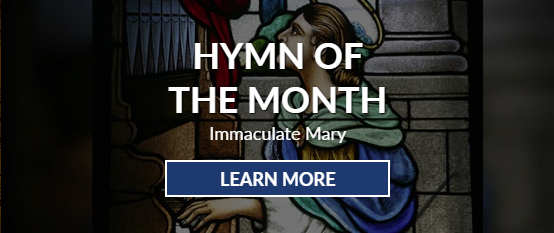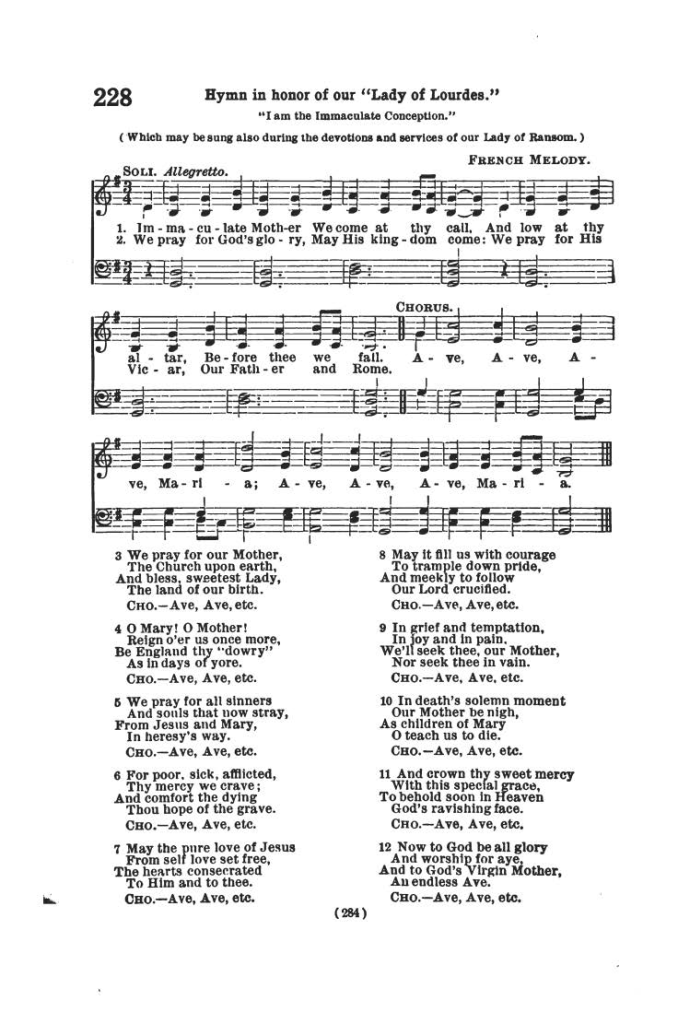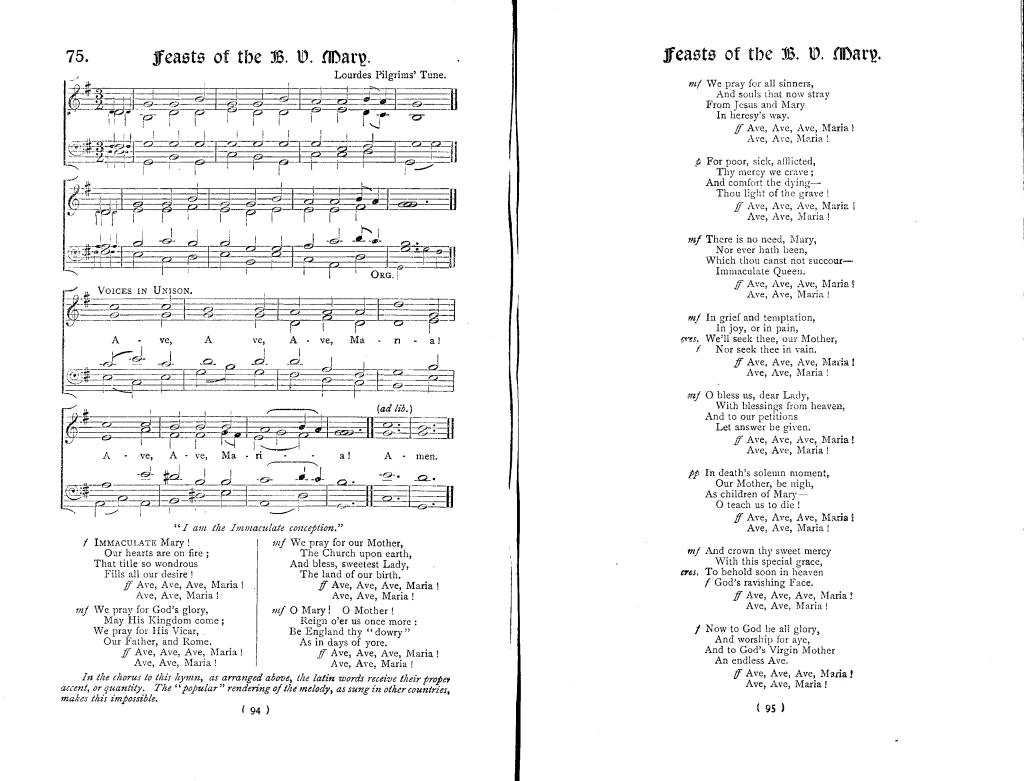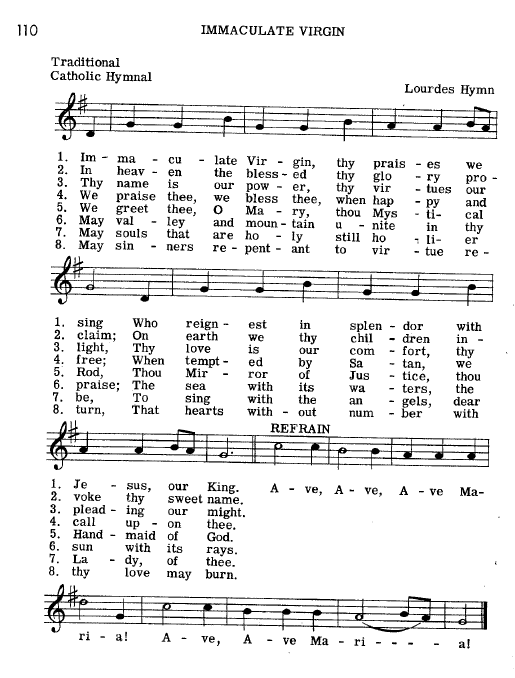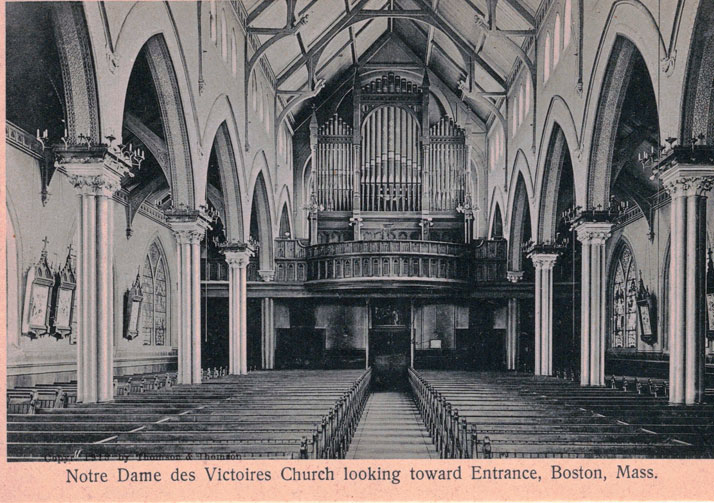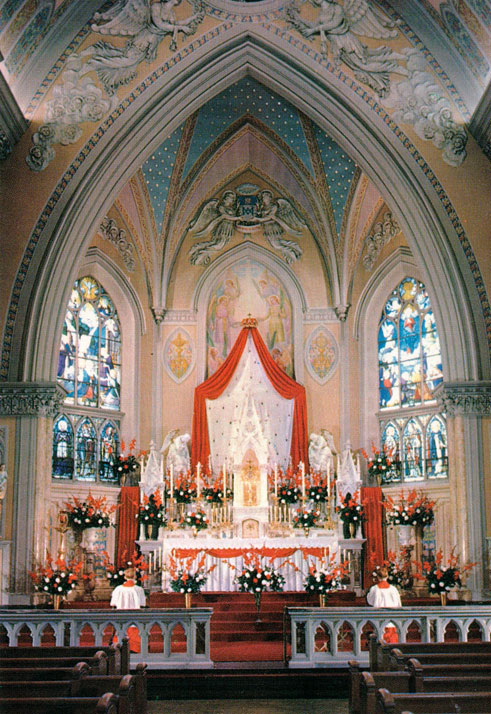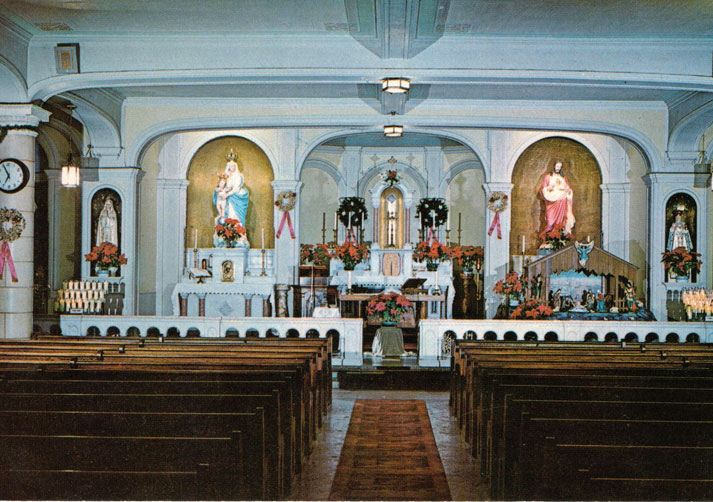This hymn is a translation of the Latin Ad Cor Jesu (To the Heart of Jesus) by Monsignor Hugh Thomas Henry, Litt. D., (1862-1946) which can be found in his EUCHARISTICA – Verse and Prose in Honor of the Hidden God, published in 1912 by The Dolphin Press, while he was at the Overbrook Seminary in Philadelphia. (Click on any image to enlarge)
However, the Latin hymn may be much older. The hymn can be found in the HYMNOLOGICUS THESAURUS VOL. 2, 1855 by Hermann Adalbert Daniel (1812-1871), pg. 370, captioned Ad Iesum (To Jesus) in three parts. This is a two-volume collection of hymns, song sequences, and antiphons from around the year 1500.
Hugh Thomas Henry was born in Philadelphia in 1862 and attended La Salle College and the University of Pennsylvania. He attended St. Charles Borromeo Seminary and was ordained in 1889. He was appointed to the chair of physical science at the Seminary after his ordination and was also named professor of ecclesiastical music at the Seminary.
For more than a decade he served as the rector at Roman Catholic High School. While at Catholic High he wrote the Founder’s Day hymn in 1908 which was sung by over 50,000 pupils in parochial schools in observance upon his death. He was raised to the rank of Domestic Prelate by His Holiness, Pope Benedict XV in 1915. Monsignor Henry was also the author of The Purple and the Gold, the official school hymn of Roman Catholic High.
The University of Pennsylvania awarded him the degree of Doctor of Letters in recognition of his achievements in English literature, especially for his translation of many Latin and French hymns. He was also a former professor of homiletics at the Catholic University of America in Washington. He lectured for six years at Catholic Summer School, Cliff Haven, New York, and was editor of Church Music, from 1905 – 1909. As a lecturer, Monsignor Henry spoke at many colleges and universities throughout the nation.
Monsignor Henry was former president of the Catholic Historical Society and a frequent contributor to various magazines including the QUARTERLY REVIEW, the AMERICAN ECCLESIASTICAL REVIEW, and the CATHOLIC ENCYCLOPEDIA, submitting original works of verse, translations of Latin hymns and numerous other articles.
Many of his translations from his EUCHARISTICA, including O Dearest Love Divine, appear in American hymnals like the AMERICAN CATHOLIC HYMNAL, 1913, perhaps the first hymnal to use any of his translations along with THE TREASURY OF CATHOLIC SONG, 1915, the ST. GREGORY HYMNAL, 1920.
He is probably best known for his original hymn Long Live the Pope which he wrote for the fiftieth anniversary of the ordination of Pope Pius X in 1908. For more than half a century this hymn had universal use and was published in more than a dozen languages including that of the American Indians. Father Ganss, the composer of the tune, was greatly interested in the welfare of the Indians. His hymn appeared in several Catholic hymnals of the period including: the De La Salle Hymnal published in 1913, the St. Gregory Hymnal published in 1920, the Catholic Hymnal compiled by Father John G. Hacker, S.J., published in 1920, the St. Mary’s Manual compiled by Christian Zittel and published in 1924, the Manual of Select Catholic Hymns compiled by Father P. M. Colonel, C.SS.R., in 1925, St. Basil’s Hymnal from 1908 thru 1953, and the Parochial Hymnal compiled by Father Carlo Rossini in 1936.
Monsignor Henry was also a hymnologist, he wrote an article for the July 1915 issue of the CATHOLIC HISTORICAL REVIEW entitled A Forgotten American Hymnodist, an in-depth review of a the hymn book Songs for Catholic Schools and The Catechism in Rhyme which was compiled by Fr. Jeremiah Cummings, Pastor of St. Stephen’s Church in New York in 1862. He correctly established that Father Cummings was the author of all the hymns save one and pointed out the ignorance of various editors of Catholic hymnals who failed to identify Father Cummings as the author, when such evidence was clearly available.
Monsignor Henry lived to be 83 years old.
The music presented here was composed by Nicola A. Montani. Nicola was born in 1880 and by his teens became choirmaster at St. Anthony’s in Indianapolis. In addition to playing piano and organ he played the coronet. He studied chant and music composition in Rome and when he returned to America, he eventually founded the St. Gregory Society of America. He was an accomplished musician, composer, conductor, editor, hymnist, and publisher.
Reflection
The hymn abounds in personal appeals to the Sacred Heart of Jesus. This beautiful devotional hymn could easily find a place in any Eucharist Adoration, Benediction or among groups devoted to the Sacred Heart of Jesus. I think this would also make an excellent prelude hymn before Mass which would help remind us of the Love that the Sacred Heart of Jesus holds for all of us.
I would also like to thank Nancy Scimone for permission to use her recording of O Dearest Love Divine. I fell in love with this recording and the violin treatments that she chose to include which is a testament that devotional hymns which have long been forgotten can once again find their place in our Catholic liturgy.
Her recording appears on her CD Ora Pro Nobis, a 2 CD collection of her Best of Sacred Music. Please take a moment to visit Nancy’s website Nancy Scimone Music and enjoy her many other hymns and psalm recordings.


